
And the winners are ... Gopher, C&D Technologies European regulators plot further assaults on lead Bringing the industry together www.batteriesinternational.comTHELASTWORD:TALESOFDARKNESSFORETOLD Issue 127 Spring 2023 Hail to the chief! Miksad elevated to BCI president Industry leaders take policy fight to Capitol Hill What's a trillion dollars between friends? Cashing in on the BESS bonanza



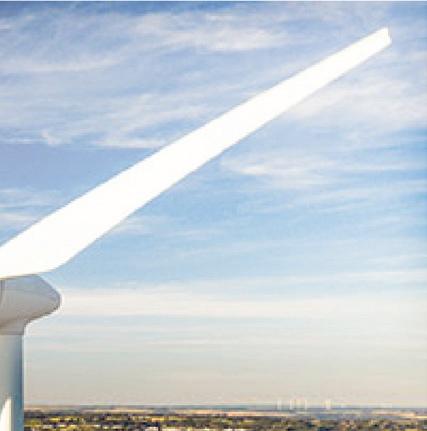





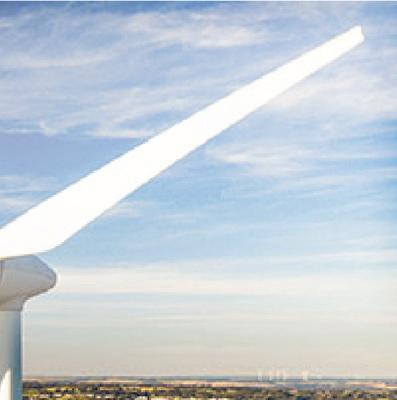







A (TM) G . D D B B , B W (C), B -B S C E , S E R . www.advancedbatteryconcepts.com info@advancedbatteryconcepts.com 1-855-230-3390 A B C ’ L E S S B -BE(TM) P R E G S (TM) T . B -BE S D M E S N T F G . D D B B , B W (C), B -B S C E , S E R . www.advancedbatteryconcepts.com info@advancedbatteryconcepts.com 1-855-230-3390 A B C ’ L E S S B -BE(TM) P R E G S (TM) T . B -BE S D M E S N T F G . D D B B , B W (C), B -B S C E , S E R . www.advancedbatteryconcepts.com info@advancedbatteryconcepts.com 1-855-230-3390
Investments battle triggers green tech arms race
As countries jostle to out-incentivize each other in a winner-takes-all strategy to succeed in the energy transition, there are warnings not to leave poorer nations behind
What’s a trillion or two between friends?
Blank-cheque deals fuel SPAC boom investments
US cleaning up in capital boost for energy tech
The price of failure won’t come cheap — and that’s what lies ahead
EDITORIAL
Let mature debate prevail over lies, damned lies and statistics
PEOPLE NEWS
EnerSys appoints Thomas as chief human resources officer • BMZ Germany names new executives • Leen leaves Gopher Resource for Vivify • H&V appoints Martinez as VP, chief people officer • Tompolidi, Filizola join new ILA-CBI office in Brussels • Haffejee quits as Metair CEO, Douwenga steps up in interim
• Further promotion for Stryten’s Dickie • Gao leading Hammond lab as director of R&D • Mike Dunckley appointed EMEA president for Leoch • Stanislawczyk, Weeber and Maleschitz promoted at East Penn Manufacturing

46
4

7
• Nickel veteran Fetcenko joins CHASM • US Battery Manufacturing promotions
• Praise for ENTEK control engineers
• Farewell to John Devitt, VRLA developer
NEWS
Monbat hit by fallout of Britishvolt’s collapse • China facing tighter lead market from pandemic, new-year holiday • BCI joins Global Battery Alliance
• European Commission chief warns China, US over battery investments
• ABC agrees bipolar lead BESS projects deal for California, confirms $50m capital raise underway


• Metair rejects early batteries unit bids as plans for sell-off go on • Refined lead metal demand exceeds supply, says report

14
• Monbat signals entry into BESS market to support energy independence
• Exide Industries renames lithium business unit
• Deficit alert for battery metals Li, Co, Ni • Exide Industries says lead batteries are still ‘core business’ as exports rise
• Shandong Jinkeli opens R&D center, signs agreements
• ABC, Exide Industries reveal bipolar lead
• Employer award honour for Gravita
• GS Yuasa online battery academy now multilingual
• Posters showcase added to BCI’s Kentucky program
RECYCLING NEWS
Port Pirie back in operation as Nyrstar launches ‘early works’ on product recycling facility • Aqua Metals gives battery metal recovery update
26
• New Nour battery recycling unit ‘operational by spring’ • Gravita forecasts recycling boom, but fewer participants • ACE partners Tabono for Africa recycling
CONTENTS www.batteriesinternational.com Batteries International • Spring 2023 • 1 COVER STORY: CASHING IN ON THE BESS BONANZA 46
Global HR role for Thomas 7
13
Farewell to battery genius
Gao named R&D lab leader 9
18
WaveTech moves ahead
Recharge Industries and Accenture to build world’s largest gigafactory in Australia • Sacramento VPP aims to deliver 27MW/54MWh
• Asahi Kasei wins China patents legal battle

• Italvolt enters strategic collaboration with StoreDot for XFC lithium ion batteries
• Morrow signs deal for Norway battery plant shipments

• Energy Vault in potential

700MWh green hydrogen long duration BESS
• Redwood to start work on US battery materials site in $3.5bn investment
• Saft to build New Zealand’s first largescale BESS
• Russia gigafactory plan is ‘first step toward batteries independence’ • Nala’s Belgium BESS set for commercial start • BASF in materials supply first for Toyota-Panasonic joint venture firm • US ‘set for 1,000GWh surge in EV battery capacity by 2030’ • Construction launch for Neoen’s 200MW Blyth Battery in South Australia
POLICY WATCH
Battery chiefs discuss future of US energy storage policy on the Hill
INTERVIEW
Christophe Pillot says super-charged growth in battery demand will be in the spotlight at the upcoming Batteries Event
REGULATION
Batteries ‘investment block’ warning as EU regulators mount new assault on lead BCI
• All the keynote presentations in our extensive roundup from BCI’s annual convention in Kentucky


• And the winners were… Read our comprehensive review of the contenders and ultimate winners of the prestigious Innovation and Amplify awards

45
65
66
Our definitive guide to the global conferences and exhibitions in the months ahead
Here’s Johnny! Kentucky style • When is a business card not a business card? When it’s a bourbon coupon that’s when! • Keeping the wheels of information flowing • So farewell, Frances
Publisher
Karen Hampton karen@batteriesinternational.com
+44 7792 852 337
Editor-in-Chief
Michael Halls editor@batteriesinternational.com
+44 7977 016 918
Advertising director
Jade Beevor jade@batteriesinternational.com
Editor John Shepherd john@batteriesinternational.com

+44 7470 046 601
Researcher, journalist
Frances Jones frances@batteriesinternational.com
Finance administrator
Juanita Anderson juanita@batteriesinternational.com
Subscriptions, enquiries subscriptions@batteriesinternational.com admin@batteriesinternational.com
Production/design
Antony Parselle aparselledesign@me.com
International
advertising@batteriesinternational.com
Disclaimer: Although we believe in the accuracy and completeness of the information contained in this magazine, Mustard Seed Publishing makes no warranties or representation about this. Nor should anything contained within it be construed as constituting an offer to buy or sell securities, or constitute advice in relation to the buying or selling of investments.
CONTENTS 2 • Batteries International • Spring 2023 www.batteriesinternational.com
Printed in the UK via Method
advertising representation
The contents of this publication are protected by copyright. No unauthorized translation or reproduction is permitted. ISSN 1462-6322 © 2023 Mustard Seed Publishing UK company no: 5976361.
Last Word: The Axeman cometh 108 Industry’s Capitol briefing 45 BCI convention spotlight 74 Pioneers of innovation named 79 ENERGY STORAGE NEWS 32
CONVENTION SPOTLIGHT 74
EVENTS
94
WORD —
THE LAST
DARKNESS FALLS ON LOUISIANA 108
Battery experts of the future 42
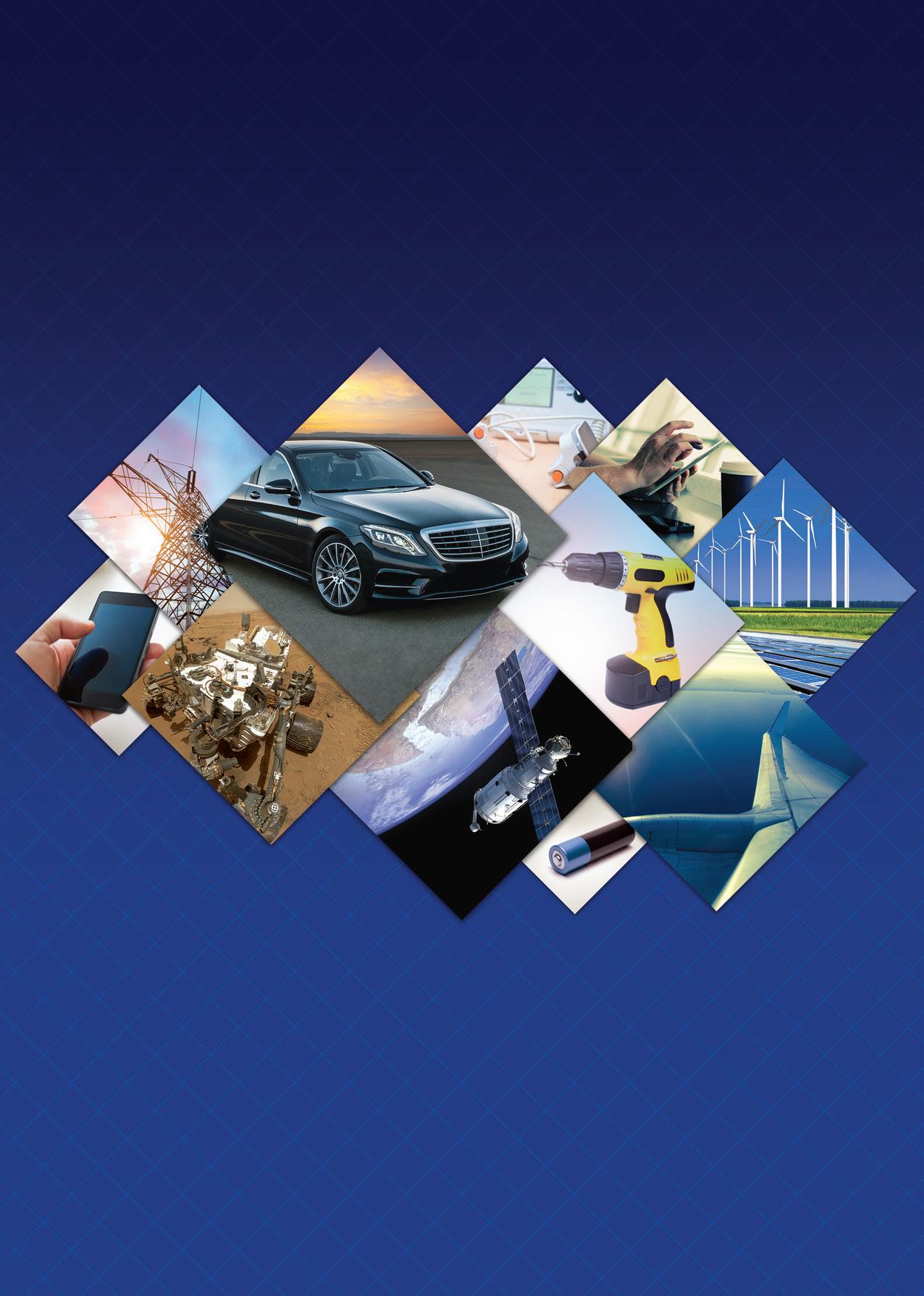
Let mature debate prevail over lies, damned lies and statistics
“Ceilings and floors, my boy,” a banker once told me.
It was a phrase that baffled me well over a quarter-of-a-century ago as a trainee journalist writing about financial markets.
My topic: the inexorable rise of the Japanese stock market. In just five years the value of corporate Japan had trebled. The Nikkei stock index had soared to 39,000 and showed no sign of flagging.
“What’s ceilings and floors?” I asked.
“Don’t you know anything?” laughed the banker with just the right measure of scorn. “Once the price of the index hits its ceiling, then it’s the floor for its next rise. The only way is up. I expect to see the Nikkei at 40,000 in three months.”
As financial bubbles go Japan’s bubble was spectacular.
At one time the price of the land in the Imperial Palace in the heart of Tokyo was so inflated that, if you could have sold it, you would have had enough money to buy Canada. (And that’s including everything inside Canada too.)
And then came the crash. Floors dropped through ceilings. And then fell through floors again, inexorably downwards.
That same stock index just 12 months later was down at 22,000 — $2 trillion of value had dropped in the value of corporate Japan.
And, to make the point more brutally, that same index 33 years afterwards is standing at an average of 25,600 for this April.
So why mention all this in a magazine dedicated to reporting about batteries and the energy storage industry?
What’s true about financial markets is equally true about commercial ones.
This is now a key issue at the heart of the lead battery and energy storage markets. Very simply, the forces of hype and unreality loom large over the entire energy storage market — and vast swathes of information, misinformation, and disinformation are at play.
A quick glance at the world of start-ups reveals a huge number of extravagant claims about various technologies — many of which have yet even to leave the laboratory bench — which may or may not be true.
It’s in the nature of start-ups to boast technologies that are up-and-ready while still not finalized. But frankly they can’t all be true and we all know it.
Then there’s informed opinion.
One sector of the industry reckons that lead batteries are yesterday’s technology (and suppliers are moving away from the chemistry).
Yet other suppliers are predicting that all things will be well and there are huge untapped markets in the developing world about to be tackled.
And yet others see an imminent world energy shortage crisis. Although reputable market analysts predict steady and not explosive growth for lead battery sales, other
A quick glance at the world of start-ups reveals a huge number of extravagant claims about various technologies — many of which have yet even to leave the laboratory bench — which may or may not be true.
Mike Halls • editor@batteriesinternational.com
EDITORIAL 4 • Batteries International • Spring 2023 www.batteriesinternational.com
super-optimists are preaching a gospel where lead batteries will become desperately needed in our decarbonized future.
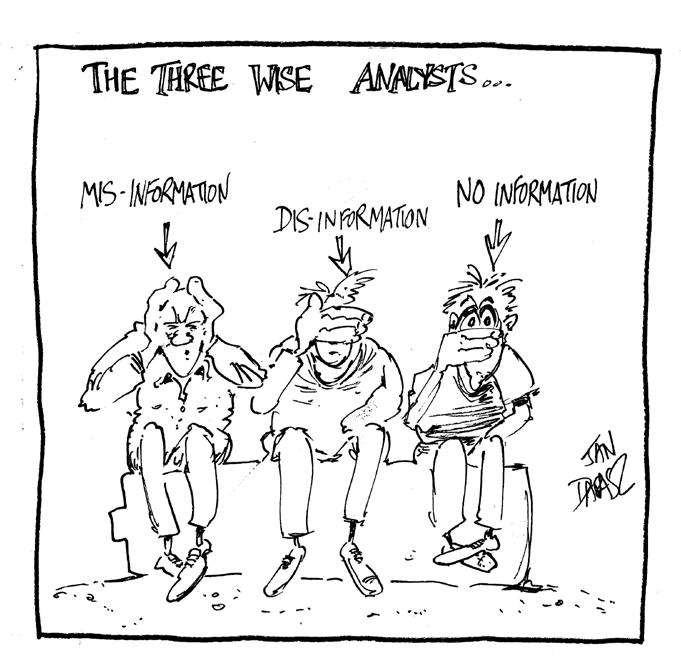
Much as I respect the people who say this — one group sees the energy storage market at 585GW by 2030, and worth between $30 billion-$50 billion and that lead batteries can capture 20% of that market. Really? It presently captures less than 1% and its market share is falling?
Looking in another direction, what this magazine finds so puzzling is why are so many players, big and small alike, so entrenched in their thinking? Where is the balanced view? Where is the mature debate?
Each year our editorial team attends literally dozens of conferences and events. We dutifully try to follow the best presentations, hear the best speakers and keep up to date with an industry that is (perversely) both slow to change yet rocketing away at an unbelievable pace.
But choose the right conference and the right speaker and you may hear that lead acid is yesterday’s news (boo-sucks from the lithium ion community) or that lithium is explosive, costly and will probably bring you out in spots (courtesy of the lead acid gentlemen).
For this magazine we deliberately have to choose a middle path. Because, despite our occasional reservations, our job is to represent what people in this business say and are thinking, not our opinions.
For a profession where its leading lights see themselves as visionaries — and sometimes quite rightly too — there needs to be more coherence in that vision.
There are a host of issues facing this industry now that need to be dealt with in a concerted fashion. For example, irrespective of any belief that lithium/lead/nickel/ something-bright-and-shiny is going to save the planet, a reasonable debate has to be conducted over issues such as recycling batteries.
At the practical level there is a very real risk of an explosion if a lithium battery is smashed in a lead acid battery breaker. The chances of this happening are growing as both types of batteries can look similar.
Other super-optimists are preaching a gospel where lead batteries will become desperately needed in our decarbonized future
At the financial level, the commercialities of a huge range of recycling options need to be faced. At present it’s clear that it’s unlikely that anyone is going to be making a profit by selling the elements from a LiFePO4 cell (and other lithium variants also have question marks over them).
Is the world really crying out for more iron, phosphorous or oxygen?
So away from the world of hype will tolling arrangements be the future for most lithium recycling? Sensible discussions are needed over what that means for lead batteries too.
Let the debates begin.
Mike Halls, Editor-in-Chief
EDITORIAL www.batteriesinternational.com Batteries International • Spring 2023 • 5








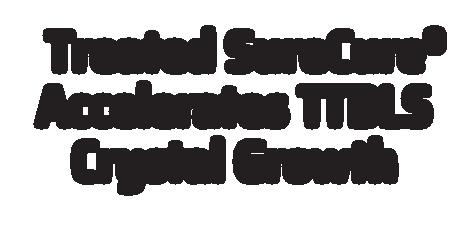



Better Paste. Better Plates. Better Battery. Engineered to Customers’ Specific Particle & Batch Size Documentable Savings of Paste Material & Curing Time More Tested & Proven Benefits of Hammond Original & Treated SureCure® Improved Charge Acceptance • Strengthened Positive Plates • Enhanced Curing Consistency Increased Cycle Life • Improved Partial-State-of-Charge Cycling • Reduced Carbon Footprint Treated SureCure® Accelerates TTBLS Crystal Growth INDUSTRY NEWS North American Investment Doubles Treated SureCure® Production Capacity Hammond Group, Inc. recently announced full-scale operations of its new North American Treated SureCure® manufacturing line, a multi-million dollar investment that doubles production capacity for one of its most effective and in-demand additives.
of
planning
technical
in early 2023.
uses
manufacturing practices
materials
products at
locations.
facilities
ISO:9001 certified for quality, and the Indiana location is IATF
to
with more strict US automotive industry requirements. Read more at HammondGlobal.com/news.
Years
advance
involving
experts from across Hammond’s global team brought production online at its Indiana facility
Hammond
similar
and raw
to produce identical
both its US and Malaysia
The
are
certified
conform
EnerSys appoints Thomas as chief human resources officer
ion, Apex Tool Group, and the Eramet Group.
Thomas holds an MBA in HR management from the University of Houston and a bachelor’s degree in HR management from Marietta College.
BMZ Germany names new executives

change through innovation, collaboration and challenging the status quo”.
EnerSys announced the appointment of Shannon Thomas as its new chief human resources officer effective May 1.
EnerSys said Thomas will be responsible for the strategy, leadership and operations of the company’s HR globally, overseeing talent lifecycle and development, total rewards, as well as diversity, equity, and inclusion initiatives.
Thomas has over 20 years’ experience as a global HR officer.
She spent her most recent five years at Chemours, where she helped set up several transformational initiatives, EnerSys said.
Before Chemours she held senior HR positions at several publicly traded and private companies including Owens Corning, Hex-
She succeeds Ted Fries — who is retiring after 26 years of service — and she joins the battery giant’s executive team, reporting directly to president and chief executive officer David Shaffer.
Shaffer said Thomas had extensive experience leading HR teams in a variety of industries and a “proven track record of driving
Thomas’s vision and leadership will support the company’s moves to attract, develop and retain top talent from around the world, while fostering a culture that values diversity, equity, and inclusion, Shaffer said.
On Ted Fries, Shaffer said his business acumen had been invaluable to the growth and success of EnerSys.
“We can’t thank him enough for the many contributions he has made to our business and community.”
Brian Leen leaves Gopher to join Vivify as new CEO
Brian Leen has quit as president and CEO of lead battery recycler Gopher Resource to become CEO of Vivify Specialty Ingredients.
Vivify, which provides additives and ingredients for the food, beverages and other markets, said on April 6 that Leen had joined the firm with immediate effect.
Leen succeeds Devlin Riley,
who has left the company.
Leen has been a member of Vivify’s board since it was acquired in December 2021 by Gryphon Heritage Fund. His appointment as CEO came four years after he joined Gopher.
Leen had previously been president and CEO of Colorado-based ADA Carbon Solutions since 2010.
H&V appoints Martinez as VP, chief people officer
human resource experience.
H&V said the title of chief people officer represented “an evolution beyond the traditional responsibilities of human resources”.
was VP of human resources and compensation and benefits at Spanishlanguage media company Univision.
Lithium ion battery systems company BMZ Germany announced that Oliver Makko had been appointed as CFO and Andreas Krist as chief purchasing officer and M&A manager effective May 1.
Makko, who has degrees in aerospace engineering and business administration, has 15 years of leadership experience in the finance sector.
He succeeds Jörg Dinkat, who left the company in March. Makko will report to BMZ Group CFO Stefan Kreysa.
Krist, a graduate engineer in physical technology, has 18 years of management experience in pre-development, value analysis and strategic purchasing, including responsibility for procuring battery production materials.

Sandra Martinez has been named as VP and chief people officer at Hollingsworth & Vose as of April 18. H&V said Martinez brings a strong blend of


Before joining H&V, Martinez was head of human resources for the industrial segment of Barnes Group, a global industrial and aerospace manufacturing company.
She has worked in the manufacturing industry since 2015. Before that she
Martinez has also been a member of the Diversity and Inclusion Council for the US Manufacturers Alliance.
CEO Josh Ayer said: “We selected Sandra due to her business acumen and experience working with a global workforce in key markets such as the Americas, APAC and Europe.”
He succeeds Oliver Reichertz, who was to leave the company at the end of May. Krist will report to BMZ Group CPO Magdalena Mozler.
On March 15, BMZ signed a memorandum of understanding with Shanghai’s Pingshan district government, under which BMZ’s China arm is set to have access to governmental support programs.
PEOPLE NEWS www.batteriesinternational.com Batteries International • Spring 2023 • 7
Oliver Makko
Andreas Krist
Tompolidi, Filizola join new ILA-CBI office in Brussels
Athanasia-Maria Tompolidi and Nicola Filizola have been appointed as the first employees to be based in a new office opened in Brussels by the International Lead Association and Consortium for Battery Innovation.
The organizations announced the opening of the joint office on April 20 to support the lead and lead battery value chains, and planned energy storage projects, as the EU strengthens its commitment to delivering on net zero ambitions.
Tompolidi joined CBI as a research and innovation manager and Filizola be-

came senior external affairs manager.
Tompolidi holds a PhD on mineral mapping by using machine learning for satellite image analysis from Harokopio University of Athens, in collaboration with the Institute for Astronomy, Astrophysics, Space Applications, and Remote Sensing — a non-profit research institute in Greece.
Filizola has more than 15 years’ experience engaging with national and local governments, European institutions, industry, and R&D organizations.
The ILA said the decision to establish an EU base re-
Haffejee quits as Metair CEO, Douwenga steps up to fill in during interim
The CEO of batteries and auto components group Metair Investments, Riaz Haffejee, resigned effective March 31.

The South Africa based group said in a regulatory filing on March 22 that Haffejee was also stepping down from its social and ethics committee.
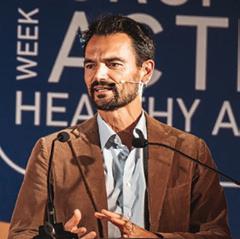
CFO Sjoerd Douwenga was appointed as interim CEO and joined Metair’s social and ethics committee. Finance executive Anesh Jogia was appointed interim CFO.
Metair said Haffejee, who joined the company two years ago, was leaving to pursue other opportunities “more in line with his personal career goals”.
Haffejee successfully led the group through the impact of Covid-19, floods and riots and the group’s board wished him well, Metair said.
He would remain available for a period of two months up to the end of May to ensure a smooth transition and handover, Metair said.
inforced its long-term commitment to developing a sustainable lead value chain in Europe, as decision-makers focus on strengthening the EU’s strategic autonomy and embedding circular economy principles.
ILA managing director Andy Bush said: “The EU benefits from wellestablished lead and lead battery value chains and there is a need to nurture and develop the industry and the technologies we support on a much bigger scale to meet ambitious climate targets.”
Bush said while the ILA has been working in Brussels for many years, the new office would be a base from which to maximize support for the lead industry as well as continuing to engage in important regulatory discussions.
The office will also act as a
focus for CBI’s energy storage work, with an emphasis on new projects working in collaboration with EU institutions, member companies and other partners.
CBI director Alistair Davidson said the new office would build on the research group’s recent success in winning a Horizon 2020 project to develop innovative microgrid technology for off-grid communities.
“We are working with a wide range of partners in Europe to develop more energy storage projects which will help the EU meet net zero targets through innovative battery-based solutions,” he said.
These include developing pre-competitive technical blueprints for applications such as EV charging stations and renewable energy storage facilities.
Further promotion for Stryten’s Dickie
Ian Dickie was appointed director of OEM sales at Stryten Energy at the start of February.
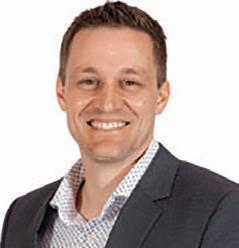
He began his career at Exide Technologies in June 2012 as a district sales manager based in Mississauga, Ontario and moved to GNB Industrial Power, a division of Exide, in April 2014.
Dickie had increasing sales responsibility over the next few years and
by 2020 was regional sales director for Canada, a position he carried further as the GNB Industrial Power segment was absorbed into Exide’s metamorphosis to Stryten Energy.
In July 2022 he became Stryten’s director of National Accounts which also included managing the new business development team for North America.
PEOPLE NEWS 8 • Batteries International • Spring 2023 www.batteriesinternational.com
Athanasia-Maria Tompolidi Nicola Filizola
Riaz Haffejee
Sjoerd Douwenga
Gao heads up Hammond lab as director of R&D
Mike Dunckley appointed EMEA president for Leoch
Battery industry veteran Mike Dunckley has joined Leoch to help spearhead the lead and lithium giant’s continued expansion in new and existing markets.
Dunckley, who was appointed EMEA president for Leoch as of April 1, told Batteries International he was looking forward to the challenge of helping strengthen Leoch’s global presence.
Hammond Group has formally announced the appointment of Enqin Gao as R&D director, who is also heading up the company’s E=(LAB)² research unit in Indiana.

Hammond confirmed the appointment on April 6, although Gao told Batteries International he took up the post last November.
Gao has more than three decades of management and R&D experience in the lead acid battery industry.
He has previously worked on the manufacturing side of the industry with Trojan Battery and Camel Group and has held a number of top industry posts during his career including chief engineer, product specialist and research chemist.
He received his MS in physical chemistry from Peking University and a BS in chemistry from Wuhan University. He also studied materials science and engineering as a PhD student at Iowa State University.
Hammond president and CEO Terry Murphy said Gao was uniquely qualified
to lead E=(LAB)², which was set up in 2015 to work with industry to improve battery charge acceptance and cycle life.
“Lead acid batteries are central to the growing demand for energy storage as the world transitions away from fossil fuels, but we have to continue innovating,” said Murphy.
“Enqin is a key addition to our R&D team as we help drive further innovations for the industry.”
Gao said Hammond’s technical assistance programs allow customers to treat the lab as an extension of their own.
“Using our state-of-theart instruments, many of which our customers don’t have in their own labs, our engineers can perform TGA/DSC analysis, BET analysis, SEM and more on material evaluation and cell and battery tests.
“Our team is composed of experts from material science, battery research, design, manufacturing and testing with a total industry experience over 200 years.”
His appointment came just days after Leoch chairman and founder Dong Li announced the group planned to build a manufacturing plant in Mexico to ramp up its presence in the Americas ( see article on page 20 ).
“The challenge now is to build the Leoch brand, its identity and its role to take advantage of the opportunities in existing and future markets,” said Dunckley, who will be based in Europe.

Dunckley has been brought in as a result of his 30-plus years knowledge of the battery industry and his deep understanding of a wide range of technologies, having worked in various chemistries including lithium, redox flow and nickel-metal hydride.
He is one of the founding members of the Hawker Batteries Group and also one of the developers of the firm’s pure lead business.
Dunckley is also a former business development director for Fiamm.
For the past 14 years he has been running his Catalyst Solutions consultancy, focused on advising companies on technology selection, business strategy and development in the
energy storage and electric mobility markets.
Now he will draw on his experience to help drive what he said will be the next phase of development of Leoch’s $2 billion international business, with an increasing reach into the Americas, Europe and Asia.
The China-centred company has its corporate HQ in Singapore and a US HQ in Los Angeles, with an extensive sales team across North America.
In May 2021, the company bought Madrid-based distribution business Meibat — from which it launched its Leoch Iberia subsidiary.
Dunckley said: “One of the things that really interested me about Leoch is they are one of the few incumbent battery manufacturers that have their own lithium operation.
“So having lithium iron phosphate in addition to pure lead and a full range of different technologies and the ability to serve all the markets — gives Leoch all the components that are needed as we drive the next stages of growth forward."
PEOPLE NEWS www.batteriesinternational.com Batteries International • Spring 2023 • 9



Find out more! Call Us: +39 0872 57724/5 Via Pedemontana 13, 66022 Fossacesia (CH) - ITALY Email : cam@cam-srl.com Web: www.cam-srl.com Oxide production without a melting pot, cylinder caster, exhaust chimneys, or gas burners provides significant energy savings with the CAM Lead Shaving System. Plus, our cold milling system avoids the mechanical stress of other processing systems. The Lead Shaver, comprising the use of lead shavings as feed material for ball mills was patented in 2004. The Lead Shaving system is composed of: CAM LEAD SHAVER PRODUCES WITHOUT CASTING OXIDE WITHOUT CASTING Heavy-Duty Italian Battery Equipment A ZERO-EMISSIONS SOLUTION FROM CAM Inclined lead shavings conveyor Lead shaver Lead ingot conveyor with automatic tipping system CAM R&D Department INCREASE YOUR PROFITS WITH A NO GAS LEAD SHAVER
Stanislawczyk, Weeber and Maleschitz promoted at East Penn Manufacturing
ogy, innovation, and continuous improvement for products, processes, and manufacturing equipment.
Before this he was senior VP of technology and innovation.
East Penn Manufacturing has promoted Pete Stanislawczyk to EVP and chief commercial officer, in a trio of high-level appointments announced by the lead batteries major.
Christy Weeber has been promoted to EVP and chief financial officer and Norbert Maleschitz is promoted to EVP and chief operating officer.
All three will continue to report directly to chief executive officer and president Chris Pruitt.
Stanislawczyk takes on a newly created position that involves oversight of all the transportation sales segments including original equipment, aftermarket, private and proprietary brands and branch operations.
He will also have oversight of all industrial segments including motive and reserve power.
Stanislawczyk joined East Penn in 1992 and most recently was senior VP for transportation sales and diversified products and group VP of sales for private and proprietary brands and diversified products.
Weeber, in her new position, will further focus on developing financial and
corporate strategic priorities and risk management.
She will continue to oversee East Penn’s legal and IT departments, in addition to her current oversight of general accounting and finance, accounts payable, accounts receivable, credit, and costing.

Weeber joined the company in 2011 as manager of internal audit. Before
becoming CFO, Weeber was senior VP of finance.
She is also a former audit senior manager at accounting firm KPMG, specializing in manufacturing.
Maleschitz’s new position is in addition to his previous duties as chief technology officer, managing East Penn’s further advancement of technol-
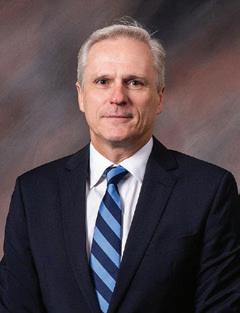

Maleschitz joined East Penn in 2018 with more than 30 years of industry experience. In 2012, he won the International Lead Award for his contributions in battery design, production engineering, and quality assurance.
East Penn said Maleschitz has been integral to supporting research, development, and technological strategies and “will build on his success with innovation and continuous improvement to help further advance the efficiency and effectiveness of the additional operations he now oversees”.
ENTEK congratulates new control engineers
ENTEK International, the battery separator manufacturer, has congratulated employees who are the latest to have completed the company’s Controls University program.
Chandler Livingston, Eric Beebe, Christopher Hamilton and Kenneth Wainwright have all officially earned the title of ENTEK controls engineer, the company announced in LinkedIn post earlier this year.

Launched just over a year ago, the Controls University program is designed to identify and cultivate individuals that are passionate about controls engineering and eager to learn ENTEK’s approach,
the company said.
Oregon-headquartered ENTEK has also partnered with several organizations, such as the Oregon Manufacturing Innovation Center, to boost training for skilled workers to get quality, well-paying jobs in the transition to a clean energy economy.
Batteries International reported last November that Kimberly Medford, president of ENTEK Manufacturing and ENTEK CEO Larry Keith had met Oregon congresswoman Suzanne Bonamici to discuss the importance of creating greater opportunities for skilled workers.
PEOPLE NEWS www.batteriesinternational.com Batteries International • Spring 2023 • 11
Pete Stanislawczyk Christy Weeber
Norbert Maleschitz
ENTEK controls engineer Bret Ray (center) with, from left, Christopher Hamilton, Eric Beebe, Chandler Livingston and Kenneth Wainwright
Nickel veteran Fetcenko joins CHASM
Battery veteran Michael Fetcenko was appointed chairman of the board of directors at CHASM, the carbon nanotube developer, effective January 18.
Fetcenko brings extensive experience in the battery industry to CHASM. He joined Ovonic Battery Company in 1980, and was the key figure and inventor in its development of NiMH batteries which became the basis for an early generation of electric vehicles.
He was president of the company when Ovonic was acquired by BASF in 2012. He subsequently became managing director of BASF Battery Materials, North America before taking on the position of director for global licensing.
After retiring from BASF he joined Sion Power in April 2019 as executive chairman of the board.
Fetcenko holds more than 70 patents and has authored 100+ publications in the NiMH and Li ion field. He has over 40 NiMH licences and led the successful Argonne National Laboratory NCM patent enforcement and licensing effort which resulted in 14 licences and sub-licences.

“His inventions are used in all NiMH batteries for consumer, stationary, and hybrid vehicle applications such as the iconic Toyota Prius with over 10 million vehicles on the road,” said a CHASM announcement.
“Michael served on the board of directors and Technical Steering Commit-
tee for Sion Power for five years, a leader in advanced ultra-high energy lithium battery systems including protected metallic lithium anodes for Li ion batteries.”
Fetcenko said: “The potential for carbon nanotubes to deliver benefits such as improved battery performance has been known for some time. What is new is that CHASM has achieved breakthroughs that will lead directly to widespread adoption: affordability, production at massive scale, methods for safe and easy handling and tunability to customer specifications.”
David Arthur, co-founder and CEO of CHASM said: “This appointment comes at a critical time as we accelerate the development and commercialization of our advanced materials solutions. Michael’s experience in the areas of intellectual property,
building strategic partnerships with large corporations and his successful track record of scaling businesses are equally important.”
US Battery Manufacturing announces promotions
US Battery Manufacturing announced new promotions to the firm’s executive management team on February 17. The appointments became effective at the start of the year.
Leading the changes was Zachary Cox, who was promoted to EVP of operations. Cox has been with US Battery for nine years and has held various engineering, technical sales, and management posts in the company.
Eric Rueter was promoted to EVP of manufacturing. He has been with US Battery for the past two years. He has an extensive background in process engineering and manage-
ment in and outside the battery industry.

Marvin Ho was promoted to VP of product engineering and quality. Ho has been with US Battery for more than a year and was previously lead researcher on Hammond’s lead silicate additive product that won the BCI Innovation Award in 2021.
COO Don Wallace said: “Our administrative, engineering, sales and manufacturing teams are helping the company spearhead new technologies that are moving US Battery into the future as we approach our 100-year anniversary.”
PEOPLE NEWS 12 • Batteries International • Spring 2023 www.batteriesinternational.com
Fetcenko holds more than 70 patents and has authored 100+ publications in the NiMH and Li ion field.
Farewell to John Devitt, VRLA pioneer, developer
tion by British Telecom in 1981, 60% of the telephone systems in Western Europe relied upon VRLA batteries for emergency power. Today [in 2006] it must be approaching 100%.”
John, who remained a pioneer in advancing battery storage technology until his late 80s, was honoured over the years with the International Lead Medal, the Gaston Planté award and membership of the Alpha/Beta society.
John was also a friendly and engaging man with great personal charm but would be blunt and direct on technical matters pertaining to batteries.
He could also be very humble. He once told this magazine that though he was still learning yet, “Detchko Pavlov [arguably the greatest lead battery electrochemist ever] has an encyclopaedic knowledge of lead and he’s probably forgotten more about the subject than I’ve ever known!”
Mountaineer and musician
It is with sadness that Batteries International has to record the death of John Devitt, arguably the key figure in the development of the modern VRLA battery. He passed away, aged 96, on December 7, 2021. He had lost contact with the lead battery industry some five years before and his death, until now, has been unreported.
John was born on September 27, 1925 in Denver, Colorado, a city where he was to spend most of his life. An early aptitude for science — he was making electromagnets at home aged eight — translated into a degree and later a masters in electrical engineering at Cornell university in Denver.
After a spell in the US Navy — he was in the naval reserve from 1943 to 1955 — mostly spent in battery research, he worked as chief engineer for a variety of Denver located companies. A pivotal moment in John’s life was when local manufacturing giant, Gates Rubber Company, then the largest manufacturer of rubber belts and hoses in the world, decided to go into the battery business,
He joined Gates in January 1965. Three months later John with his codeveloper Don McLelland submitted a
nine-page memo to CEO Charlie Gates called “Lead-Acid Sealed Cells”. The memo was to make history.
In effect Devitt’s proposal recommended the development of a cell that would perform in a manner similar to that of the sealed nickel-cadmium batteries then being sold.
It was an idea that John later said had been fermenting in his brain since listening to a presentation about nickel-cadmium batteries five years before. John and McLelland issued the definitive patent in 1972.
Standby applications
Ken Peters, the man who perfected much of the design of later VRLA batteries, described its importance: “The development of gas recombining valve regulated designs has potentially been the most important advance in the development of the lead battery in the last half of the 20th century.

“Offering improved high-rate output, higher specific energy and operating flexibility never previously envisaged, their use in telephone and UPS systems grew quickly replacing previously-used designs in standby applications.
“Within 10 years of the first installa-
Music was a big part of his life. He was an active player in the local jazz scene as an accomplished saxophonist. David Rand, an electrochemical battery veteran, recalls being with him at the gala dinner of the Second Lead Battery Conference in Nice: “The entertainment was poor so I asked John whether he had his saxophone, The answer was ‘yes’ and was welcomed by the local musicians. It was a fantastic evening!”
He was also an avid mountaineer and especially fond of the Rockies around where he lived. He was an active member of the Colorado Mountain Club, including serving as president, and was a climbing instructor for many avid climbers in the Colorado mountains.
He spent the last 28 years of his life with his close friend and travel companion, Jeane Sexson. John is survived by his three children, Jane, David and Ellen, 10 grandchildren and 15 greatgrandchildren.
“One of the legends of the lead battery industry has disappeared for good,” said one commentator. “We may not see men of such like again in our lifetimes.”
John Devitt, electrochemist, 1925-2021
JOHN DEVITT, ELECTROCHEMIST, 1925-2021 www.batteriesinternational.com Batteries International • Spring 2023 • 13
Gravita in €34m loan for Africa recycling — sets sights on Central America project
Lead battery recycler Gravita India is to use a €34 million ($37.5 million) loan from European financial development institutions to expand its operations in Africa, the group’s CEO told Batteries International on May 3.
Yogesh Malhotra announced the term loan, from France’s Proparco and Austrian development bank OeEB, during a full-year earnings call in which he also revealed Gravita hopes to launch a recycling plant in Central America — saying the group is also ready to invest in potential mergers and acquisitions.
Malhotra reported “stellar” results for the year ended March 2023 including ebitda of Rs286 crore
($35 million) — reflecting a year-on-year growth of 33%. Profit after tax was Rs201 crore, reflecting YoY growth of 44%.
On the loan deal, Malhotra said it would support an expansion of Gravita’s lead, aluminium and plastic recycling operations in Africa.
He said the group also intends to build a steel recycling facility in Africa, although details are not being disclosed at this stage.
The loan agreement was made with the group’s Gravita Netherlands subsidiary and followed what Gravita said was “rigorous due diligence” of its environmental, social and governance activities.
Company secretary Nitin
Gupta said Gravita was always striving to reduce its carbon footprint and minimize its impact on the environment.
He said the loan was “a significant milestone in Gravita’s journey towards becoming the most valuable company in the recycling industry globally”.
Gravita Netherlands agreed a memorandum of understanding in February to invest in the construction of a lead batteries recycling plant in Oman — its first in the Middle East — and to hold a 50% stake in the project.
The group has not named its partners in the project, but Malhotra told Batteries International on May 3 that all are existing businesses in
Future of Glencore’s Portovesme lead production hangs in balance
A review that could decide the future of lead smelting and refining operations at Glencore’s Portovesme subsidiary in Italy is expected before the summer, Batteries International understands.

Glencore executives discussed the possible ‘reconversion’ of operations — that could potentially end lead and zinc production — in early April, with government ministers including Fausta Bergamotto, the under-secretary of state at Italy’s Ministry of Enterprises and Made in Italy.
A source close to the talks told this magazine that Glencore proposed setting up a working group to identify “economically and socially sustainable solutions” for Portovesme’s Sardinia operations.
But union leaders said on April 12 they feared up to 1,500 jobs could be lost and that Portovesme operations are at a virtual standstill.
FEMCA, the union representing workers in sectors including energy and chemistry, has called for Portovesme to be “put back on track”.
Lead smelting and refining operations are of strategic importance to the national economy and should be protected, FEMCA said.
At the time of going to press, Batteries International understood that some lead was still being produced by Portovesme, although the firm’s San Gavino site was not operational. Glencore declined to give details.
However, a spokesperson said on April 19 Glencore was fully engaged with
unions and government officials in talks about the future of Portovesme’s sites in Sardinia.
The spokesperson declined to go into detail until the completion of the Portovesme review, which was launched several months ago in the wake of escalating energy costs.
Portovesme was established in July 1999 when Glencore acquired the Portoscuso and San Gavino sites in Sardinia from ENI.
Glencore has said previously that Portovesme, the only Italian zinc and lead producer, is considered to be of national and strategic importance by the Italian government.
CRU’s lead market analyst Neil Hawkes said last November that if Portovesme were to shut, it would only serve to further constrain European production and keep this regional lead market tight.
Oman’s scrap sector. Meanwhile, as this issue went to press, talks were continuing with potential tech partners to build a pilot lithium recycling facility at Gravita’s Mundra lead recycling plant in Gujarat.
In May 2022, Gravita unveiled plans to use a byproduct of a new waste rubber recycling operation at its plant in Ghana as potential fuel for its lead and aluminium recycling business.
See our roundup of global recycling news highlights on page 26
HC Forklift America moves away from lead
US-based HC Forklift America Corporation is discontinuing its lead acid powered product line, the firm announced on April 27.
HC, a wholly-owned subsidiary of the Chinabased Hangcha Group, said the decision was in line with the group’s new energy focus on lithium ion and fuel cell powered equipment in the material handling industry.
The company said the move did not affect its line of IC powered equipment and the new energy line is meant to provide an alternative for customers.
However, HC said it was still committed to providing existing lead acid powered forklift customers with support — including a 10-year parts supply cycle.
NEWS 14 • Batteries International • Spring 2023 www.batteriesinternational.com
Australia to lead rise in global lead mine output, says report
World lead mine production is forecast to grow by 2.8% this year to 4.56 million tonnes — according to data published on April 27 by the International Lead and Zinc Study Group (ILZSG).
The increase will largely be the result of an expected significant increase in Australia, where Galena Mining commissioned its 95,000 tonne per year Abra mine in January.

Further rises are expected in China, India, Kazakhstan and Mexico, the ILZSG said.
Meanwhile the global demand for refined lead metal is anticipated to increase by 1.7% in 2023 to 12.53 million tonnes.
European usage of refined led dipped 1.9% in 2022, mainly as consequence of reductions in Austria, Poland, Russia, Spain and Ukraine, ac-
cording to the data. However, modest growth of 0.4% is expected in 2023, despite a significant reduction in Italian demand.
After rising by 0.9% last year, Chinese demand is forecast to increase by a further 0.7% in 2023. Rises are also expected in India, Japan, South Korea, Mexico and the US.
An anticipated increase in world refined lead metal output of 2.8%, to 12.51 million tonnes, will be mainly influenced by a rise in Germany, following the restart of Trafigura’s newly-acquired Nyrstar Stolberg lead production plant.
ILZSG said output is also expected to increase in Australia, India, Kazakhstan, South Korea, Mexico, Taiwan and the United Arab Emirates — where new capacity is expected to be commissioned.
But these rises will be partially balanced by significant falls in production forecast in Bulgaria and Italy. Data provided to ILZSG by its member countries indicates that global demand for refined lead metal will exceed supply by 20,000 tonnes in 2023
Monbat stresses role for advanced lead in BESS development plans
Monbat revealed on April 25 it will use lead and lithium ion chemistries to develop a range of BESS products, after conducting lab tests on prototype systems.
The Bulgaria-based battery manufacturer said last November that it planned to enter the BESS market.
Monbat said prototypes had been tested in partnership with the Institute of Electrochemistry and Energy Systems at the Bulgarian Academy of Sciences (IEES-BAS).
The test results were presented earlier this year by IEES-BAS professor Evelina Slavcheva to Marcin Wasilewski, CEO of InnoEnergy, the lead partner in the European Battery Alliance and Bogdan Bogdanov, CEO of the InvestBulgaria Agency.
Lead acid “high-cycle carbon industrial batteries” would be part of its
BESS portfolio, Monbat said.
The company also intends to market “avantgarde technologies aimed at improving the performance of established lead acid industrial batteries” while reducing the products’ carbon footprint.
Meanwhile, Bulgaria’s
government has agreed to become a member of the European Battery Alliance — of which Monbat has been a member since 2021.
The sales director of Monbat’s industrial batteries division, Bozhidar Nekeziev, said the Bulgarian government’s deci-
sion was a positive sign towards developing a dynamic European battery sector.
Batteries International reported in February that Monbat had designated the supply of batteries for start-stop vehicles as a major target for business growth.
Japan backs Yuasa, Honda gigafactory plans
Japan’s government is backing plans by lead battery major GS Yuasa and Honda Motor to invest ¥444 billion ($3.3 billion) in a lithium ion battery manufacturing plant for EVs and residential energy storage systems, the firms confirmed on April 28.
In addition, the government has pledged to contribute a maximum of ¥160 billion for the
project by Blue Energy — the joint venture company formed by the partners in 2009, in which Yuasa has a majority 51% stake.
Yuasa and Honda said in January that they wanted to collaborate on developing a high-capacity, high-output lithiumion battery.
Now the partners expect their Japan commercial battery production
line to start up in April 2027 and achieve the targeted 20GWh annual capacity in October of that year.
Yuasa president and CEO Osamu Murao said the company will “make full use of all the government support we receive and strengthen the domestic (battery) manufacturing base for in-vehicle and stationary use with Honda”.
NEWS www.batteriesinternational.com Batteries International • Spring 2023 • 15
Cabot acquires Japan solar farm to boost renewables
Battery materials company Cabot said on April 13 it had bought a solar farm in Japan to expand into renewable power generation.
Cabot has acquired the Chiba facility near its carbon black manufacturing plant from Shoko Co for an undisclosed sum.
Cabot will provide solar power to the region’s grid from Chiba, which has an annual electric-
ity generating capacity of up to 3,500MWh, which Cabot said is equivalent to powering more than 700 homes a year.
In addition, Cabot said the solar farm will support its sustainability program, which includes converting waste heat from production processes into energy.
By utilizing energy cogeneration such as this, Cabot said a series of energy centers across its fa-
cilities in Japan could generate a combined total of around 172,000MWh per year, equivalent to powering over 36,000 homes in Japan annually, the company said.
Cabot aims to export twice the amount of energy that it imports by 2025.
Bart Kalkstein, Cabot’s executive VP and president of the firm’s reinforcement materials unit said: “As an industry leader, we are
making proactive investments in renewable energy sources, such as this solar farm, that can be exported to nearby businesses and communities.”
Cabot told Batteries International in March that the firm remained committed to supporting development of next-generation lead batteries while also opening a new lab in Germany to help boost lithium battery tech for EVs.
Exide Industries amalgamates Chloride unit, merges others
Indian batteries producer Exide Industries said on March 30 it had completed the amalgamation of its Chloride Power Systems & Solutions subsidiary which designs and manufactures battery chargers and re-
lated equipment.
The move was approved by the boards of both companies in March 2022.
Exide said the amalgamation would provide for greater synergies, optimize the use of personnel and facilities and boost growth as both firms are inter-dependent on the supply of a range of materials.
The move also streamlines operations by reducing the number of legal entities in the group, which will reduce the multiplicity of legal and regulatory
compliance requirements and cut costs, Exide said.
On March 17, Exide said the boards of two of its lithium business subsidiaries had given the go-ahead for the units to merge, subject to regulatory approvals.
The proposal to merge Exide Leclanche Energy Private Limited and Exide Energy Solutions Limited was announced last December.
Exide Leclanche, branded as ‘Nexcharge’, is the business that arose out of the company’s initial joint venture with Swiss battery firm
Exide finalizes stake in wind power start-up
Exide Industries confirmed on April 10 it had taken a near 40% stake in a newly incorporated firm to boost the use of renewable energy at its battery manufacturing plants in India.
The lead acid batteries producer told financial regulators it had invested Rs19.85 crore ($2.4 million) to acquire an equity stake of 39.08% in Ulric Renewables Private
Limited.
Ulric is a special purpose vehicle subsidiary formed by Cleantech Solar India to support the construction of wind power projects from which Exide could buy up to 19MW of its power needs for plants in the states of Maharashtra and Tamil Nadu.
Last November, Exide and Advanced Battery Concepts announced a partnership aimed at
building and selling bipolar lead battery technology energy storage systems in India.
The companies signed a non-binding letter of intent agreeing to “scopeout and define a program” for jointly commercializing ABC’s ‘BOX-BE’ systems, comprising the firm’s proprietary EverGreenSeal bipolar battery technology, for the Indian maket.
Leclanché — but which later became a 100%-owned Exide subsidiary.
The second wholly-owned subsidiary was formed following an agreement in March 2022 for Exide to collaborate with China’s SVOLT Energy Technology to manufacture lithium ion battery cells in India.
Exide said the merger was appropriate given the similar lines of business of the subsidiaries.
However, Exide CEO and MD Subir Chakraborty said in November 2022 that the development and sales of lead batteries continued to be the company’s “core business”, despite its foray into the lithium ion sector.
Earlier in March, the company became the latest Indian member of the Consortium for Battery Innovation.
CBI director Alistair Davidson announced the move on March 6.
Other Indian companies that are members of the CBI include batteries peer Amara Raja Batteries and lead recycling company Gravita India.
NEWS 16 • Batteries International • Spring 2023 www.batteriesinternational.com
Exide said the merger was appropriate given the similar lines of business of the subsidiaries




FLY HIGH Above the Rest Automation • Oxide Production • Material Handling • Service Sorfin Yoshimura LTD 100 Crossways Park West, Suite #215 Woodbury, NY 11797 Tel: + 1.516.802.4600 Email: sorfin@sorfin.com Eagle Oxide Services Inc. 5605 W 74th Street Indianapolis, IN 46278 Tel: 317.290.8485 Email: sales@eagleoxide.com www.eagleoxide.com Accurate Products Hvidsvaermervej 135 DK-2610 Roedovre Denmark Tel: +45.4453.4546 Email: accurate@accurate.dk FLY HIGH Above the Rest.
WaveTech announces firsts for lead battery technology
WaveTech announced on March 28 the signing of an agreement to test its patented Crystal Control Technology on electric forklift trucks.
WaveTech’s German subsidiary has signed a memorandum of understanding with rolled aluminium producer Niche Fusina Rolled Products for the trial of CCT — which, it says, enhances the performance and lifetime of lead batteries used in the energy storage sector.
The agreement includes field trials to monitor the improvements of treating lead acid batteries with CCT on forklift trucks at Fusina’s plant in Italy. The deal also marks WaveTech’s expansion into a new segment within the motive power industry.
WaveTech said the trial will help Fusina reduce operational and capital costs. It plans to use the opportunity to introduce its technology to suppliers and local industries around Fusina’s plant.
Dag Valand, WaveTech CEO, said: “This opens a new client segment for us, in addition to telecom towers, datacentres and UPS infrastructure.
“There are roughly 10 million forklift trucks in operation globally and about half of those are powered by electricity, representing a significant distribution potential for CCT.”
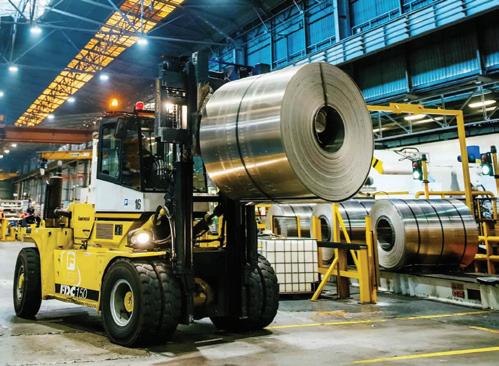
The Fusina deal followed WaveTech’s February 3 announcement that it had successfully completed the first commercial installation of its CCT technology with Maxis Telecommunications, a telecoms and service provider based in Malaysia.
The firms partnered in
2020 to extend battery lifespan, reduce battery failures and protect batteries from high operating temperatures using CCT.
The installation was completed during the third quarter of 2022, after pandemic-related delays and a successful proof of concept.
WaveTech said the commercialization process involved installing its tech on 73 sites, consisting of 192 battery strings.
The company is offering a battery performance warranty on all sites where
its CCT and battery monitoring system have been installed.
The installation represented an important milestone, being WaveTech’s first successful sale cycle, first tier 1 telecom operator as a customer, and first South Asia sale in the telecoms sector, the company said.
WaveTech is now set to install its BMS on seven additional sites to digitalize the monitoring, operation, and maintenance of the batteries — and to
expand deployment of CCT to other Maxis sites.
CCT technology is based on applying a specifically modulated periodic signal during charge, and closely monitoring the state of charge and state of health of the battery.
CCT helps WaveTech to charge the batteries faster and more efficiently. The company says power pulses sent to the battery enhance the mobility of ions in the electrolyte and optimize crystallization in the positive and negative plates of the battery.
The surface of the plates remains active, sulfation is slowed down, and the highly porous microstructure of the lead and lead dioxide crystals formed in the active materials is kept sustainable.
Meanwhile, WaveTech says it is also looking at work with lithium chemistries, after feasibility tests indicated the application of CCT could also boost performance of lithium batteries.
EnerSys announced on April 6 it had acquired UK-based Industrial Battery and Charger Services (IBCS) for an undisclosed sum.
The lead and lithium batteries producer said the move would allow it to expand its motive power products and services and strengthen its presence in the UK market.
Vincent Baudelet, sales and service VP for motive power EMEA at EnerSys, said the strong reputation
of IBCS in the UK market would help boost business growth in the region.
IBCS will continue to operate under its current name and branding and its management team should remain in place.
IBCS managing director Paul Hewson said: “This partnership will allow us to offer our customers even more comprehensive and integrated battery solutions, including top-of-the-line lead acid batteries, proprietary thin
plate pure lead technology and the industry’s most advanced lithium battery while also providing new opportunities for our employees.”
EnerSys announced in July 2022 the formal opening of its expanded Richmond, Kentucky distribution centre, with products shipped from the site to include the company’s range of traditional flooded lead acid and thin plate pure lead batteries and modular chargers.
NEWS 18 • Batteries International • Spring 2023 www.batteriesinternational.com
EnerSys acquires battery services firm IBCS to boost UK presence
www.ees-events.com

ENERGY STORAGE EVENTS
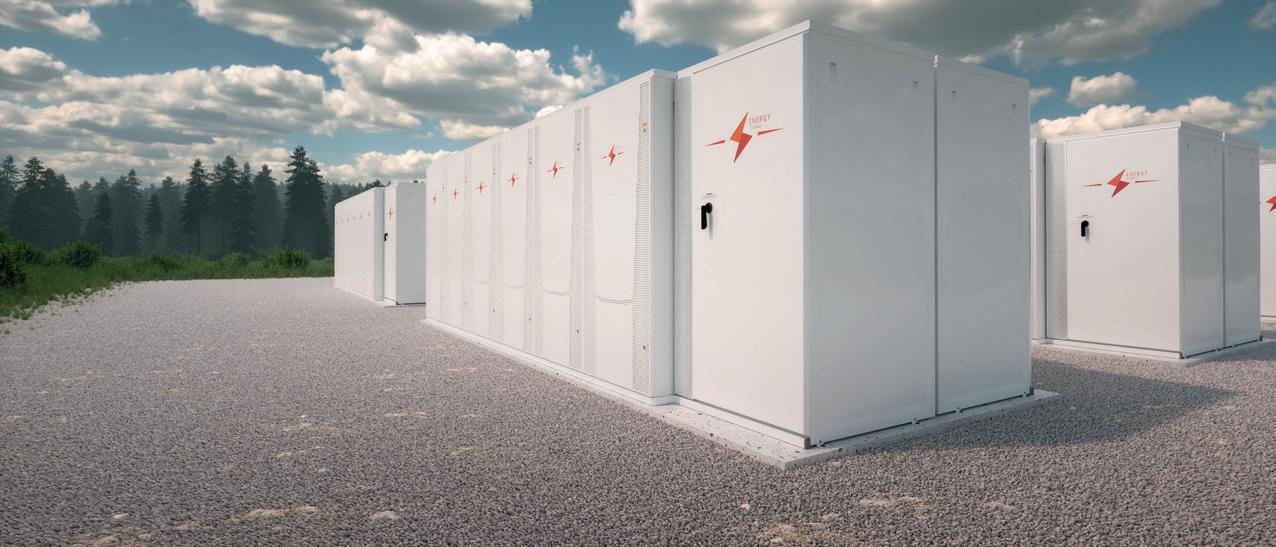
—


The Leading Exhibition Series for Batteries and Energy Storage Systems
■ JUNE 14–16, 2023, MUNICH, GERMANY EUROPE’S LARGEST EXHIBITION FOR BATTERIES AND ENERGY STORAGE SYSTEMS www.ees-europe.com

■ AUGUST 29–31, 2023, SÃO PAULO, BRAZIL SOUTH AMERICA’S HOT SPOT FOR BATTERIES AND ENERGY STORAGE SYSTEMS www.ees-southamerica.com
■ JANUARY 17–19, 2024, GANDHINAGAR, INDIA INDIA‘S LEADING ELECTRICAL ENERGY STORAGE EXHIBITION www.ees-india.in




■ APRIL 16–18, 2024 – DUBAI INTERSOLAR & EES MIDDLE EAST DUBAI WORLD TRADE CENTER www.intersolar.ae






Follow us



Leoch plans Mexico plant for expansion in Americas
China-headquartered batteries giant Leoch is to build a manufacturing plant in Mexico to ramp up its market presence in the Americas.

Leoch chairman Dong Li said in a regulatory filing in Hong Kong on March 24 that it had chosen Mexico because of its unique geographical location and “export policy advantages” for the region — such as the USMCA free trade agreement (formerly NAFTA) between the US, Canada and Mexico.
The lead and lithium battery maker did not disclose details or say when it would start work on the project, but said the decision followed careful studies of the market over the past year.
To date, the group has looked to its Spanish subsidiary Leoch Iberia — launched following its May 2021 purchase of Madridbased distribution business Meibat — to help expand sales into Latin America.
The Mexico announcement came as Leoch posted a profit for the year ended December 31, 2022 of
Rmb464.4 million ($67 million) — an increase of nearly 180% over the previous year.
Overall revenue increased to Rmb12.8 billion from Rmb11.4 billion previously. The lion’s share of revenue (Rmb10.4 billion) came from sales of batteries and related items.
Combined battery sales in
Metair posts fall in profit, EPS
Metair Investments posted a loss for 2022 in figures released on March 30 as a result of higher finance costs, hyperinflation impacting its batteries operation in Turkey and the effect of flooding in South Africa.
The batteries and auto components group posted a 61% fall in operating profit of ZAR706 million ($39 million) to ZAR453 million in condensed audited consolidated results.
Ebitda for the period fell to ZAR826 million from ZAR1.5 billion in 2021.
And earnings per share were down 105% to a loss of ZAR0.17 cents per share, compared to ZAR3.54 per share the previous year — in line with warnings issued last month.
Revenue climbed 10% to almost ZAR14 billion, but Metair said its results were significantly impacted by hyperinflation accounting applied to earnings from
its Mutlu Akü lead battery business in Turkey.
In addition, Metair said the group was hit by a series of costs including higher logistics costs — mainly premium air freight due to global supply chain disruptions — the knock-on effects of the impact of flooding on auto components production for major customer Toyota South Africa and increased interest charges
as a result of high net debt levels to support new projects and mitigate supply chain disruptions.
As well as Mutlu Akü, Metair’s energy storage division includes Romanian lead and lithium company Rombat and South Africa’s First National Battery.
Metair reiterated that plans to sell of the energy storage business remain suspended as a result of the geopolitical climate in
overseas markets were up over the previous year by nearly 26% and nearly 2% in mainland China.
Revenue from sales of lithium batteries have also “started to kick in and could become a major growth driver in future”, Leoch said.
In terms of geographic distribution the Americas sales increased by the largest, totalling Rmb2.2 billion (previously Rmb1.5 billion) — underlining why the group sees a need for a Mexico plant in addition to its facilities in the US.
Meanwhile, the group’s recycled lead business increased 17.5% from 2021 to Rmb2.4 billion.
On February 16, Leoch announced it had become the 122nd member of the Consortium for Battery Innovation and the fourth Chinese organization to join.
Europe and global financial instability.
Meanwhile, the group said it was postponing some events, including a formal presentation of the annual results and an investors call, while the recently appointed interim CEO Sjoerd Douwenga recovered from an accident.
Metair did not disclose details of the accident but said Douwenga — who took over following the March 31 resignation of Riaz Haffejee — was recovering and out of hospital.
GS Yuasa said on March 8 it was raising prices for lead and lithium ion batteries and other products sold in Japan by at least 10% from April 1, 2023, because of increased raw material costs.
Yuasa said the cost of materials including iron, steel, plastics and non-ferrous metals such as copper
have continued to increase steeply over the past two years.
In addition, the cost of electricity and gas used in production processes had also risen, while “global instability” had caused steep increases in the cost of materials such as electronic components.
The hike in manufacturers’ selling prices, which applies only to the Japanese market, will be 10% or more and affect products including AC UPS systems, storage battery cabinets, storage battery racks, industrial lead batteries and industrial lithium ion batteries.
NEWS 20 • Batteries International • Spring 2023 www.batteriesinternational.com
Yuasa raises battery prices for lead and lithium in Japan
BCI hails bill to end ‘unfair’ batteries tax
The US lead battery industry is worth nearly $33 billion annually to the country’s economy, according to latest analysis published on March 28 by Battery Council International.
The BCI study — ‘Economic Contribution of the US Lead Battery Industry in 2021’ — also shows the industry has a $13.7 billion impact every year on GDP, underlining the critical role the sector plays.
In addition, lead battery manufacturing supports more than 121,000 highpaying jobs in every major region of the country, while workers are paid an average wage of $81,000 a year across all lead battery sectors. BCI says this exceeds salaries paid in many other
industries.
BCI executive vice president Roger Miksad said the study, prepared by consulting firm EBP, also highlighted the benefits of the industry’s unparalleled model of closed-loop manufacturing. “Our industry’s resilience, scalability and freedom from foreign influence supports national security, while providing significant economic benefits.”
BCI said the industry’s domestic infrastructure provides a prominent source of domestically sourced energy storage with an annual manufacturing capacity of more than 165GWh in the US and more than 206GWh across North America.
Advanced lead technology is a major source of
energy storage for the electrification of transportation and renewable energy and lead batteries continue to provide critical functions required by almost all hybrid and fully-electric vehicles, BCI said.
In terms of R&D, the lead battery industry invests nearly $113 million annually as part of its commitment to help finance advancements in battery performance and energy storage applications.
According to a separate European study, published in April 2022, the lead battery industry was worth an estimated €15 billion ($16 billion) of value added or gross domestic product a year to the European economy.
Lead battery industry worth $33bn a year to US economy
Battery Council International has welcomed a proposed new US law that would eliminate taxes on lead oxide, antimony and sulfuric acid.
The USA Batteries Act, introduced by Pennsylvania congressman Daniel Meuser on March 14, would repeal the chemical tax implemented as part of the Infrastructure Investment & Jobs Act.
BCI says this forces an essential American industry to pay higher costs for key raw materials used to manufacture lead batteries — a tax that is not levied on imported batteries.
BCI executive vice president Roger Miksad said the legislation would help the lead battery industry continue to support critical business sectors including defence, transportation, logistics, telecoms and energy generation.
“The purpose of the infrastructure bill was to support domestic manufacturing, but if the tax is allowed to stand it will negatively impact the 25,000 American workers who make and recycle lead batteries and take pride in the fact that their product is the most recycled consumer product in the US.
“At a time when demand is outpacing domestic production, the USA Batteries Act will eliminate a tax that gives foreign manufacturers an unfair advantage on the cost of raw materials,” Miksad said.
“Lead batteries will be the dominant rechargeable battery technology for the foreseeable future, are the most recycled consumer product in the nation, and are the global leader in a variety of green applications. These come from
well-known automotive uses supporting clean mobility in low-carbon startstop and micro-hybrid vehicles, to the growing utility and renewable energy storage markets which are ushering in a global energy transition.”
The US lead battery industry invested nearly $113 million in R&D in 2021 and is working on next gen battery technology and energy storage, through agreements with national laboratories, to meet the needs of a market that should grow from 360GWh in 2020 to 430GWh in 2030, BCI said.
BCI will next year celebrate its centenary as the leading trade association of the North American battery industry representing more than 125 member companies.
Clarios announced on March 13 it had been recognized as one of the world’s most ethical companies by Ethisphere.
The honour is bestowed on companies that demonstrate business integrity through best-in-class ethics, compliance, and governance practices.
This is the first time the world’s largest manufacturer of automotive batteries has been recognized and the company is one of only eight such honoured names for 2023 in the automotive industry.
A total of 135 honourees were recognized overall spanning 19 countries and 46 industries.
Clarios president and CEO Mark Wallace said: “Our ability to be honoured for the first time as one of the world’s most ethical companies is a direct result of the commitment of nearly 16,000 Clarios team members around the world.”
Etisphere uses its proprietary Ethics Quotient to assess companies. Firms are required to answer more than 200 questions on culture, environmental and social practices, ethics and compliance activities, governance, diversity and initiatives that support a strong value chain.
The process serves as an operating framework to capture and codify the leading practices of organizations across industries and around the globe.
NEWS www.batteriesinternational.com Batteries International • Spring 2023 • 21
Clarios wins ethical company award
Lead battolyser project underway in Africa
Planning has started on deploying lead battery technology at the heart of two innovative pilot energy storage systems in off-grid communities in Zambia and Ivory Coast, the Consortium for Battery Innovation announced on March 20.
The CBI revealed in September 2022 that, together with a consortium of international partners, it had won a €10 million ($9.9 million) call for the project under the EU’s flagship research and innovation funding instrument, Horizon Europe.
Now the LoCEL-H2 project, (or Low-cost, Circular, plug & play, Off-grid Energy for remote Locations including Hydrogen), is moving ahead — combining the expertise of lead battery manufacturers, academia, national laboratories, component manufacturers, and companies who are focused on integration, microgrids and renewables.
At the core of each project will be lead battery electrolyser components — the
battolyser — paired with renewables for electricity generation and a hydrogen solution for cooking without burning fossil fuels in isolated communities without access to a power grid.
By combining lead batteries with wind and solar power, this project could become a template for other energy-deprived areas around the globe.
CBI research and innovation manager Carl Telford coordinated the bid alongside academic and industry partners the French atomic energy agency (CEA), Hoppecke, Hollingsworth & Vose, UNINA, Loughborough University, Sunkofa, University of Gabes, SAS Réseaux Hydrogène Décarboné RHYDE, and LUMS.
Angel Kirchev, a senior expert at CEA Tech and LoCEL-H2’s project coordinator said: “CEA looks forward to coordinating this exciting and challenging four-year project which will bring sustainable energy and green hydrogen to
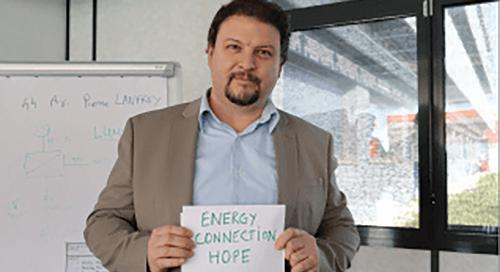
challenged communities.”
Meanwhile, the CBI and Loughborough University have drawn up proposals for two additional, separate projects in the East African nation of Malawi.
For Malawi, the partners plan to develop a novel hydrogen-production energy storage system that uses a battolyser.
Funding is being sought for the Modular Energy Storage with Clean Hydrogen (MESCH) project, a first unit of which would support operations at a
hospital in Malawi.
MESCH will provide essential backup power and also turn excess solar power into hydrogen for cooking.
The second funding bid proposed is for the ‘AfTrac’ project — that aims to develop ‘micro tractor technology’ powered by lead batteries in support of African agriculture.
This project is being led by Loughborough University, with the CBI and another UK organization as partners.
New BCI flow battery industry group to be a ‘natural fit’ with lead for energy security
BCI has launched a Flow Battery Industry Group to maximize synergies with the lead battery industry in boosting energy security in North America, the trade association said on March 22.
The group will be chaired by Scott Childers — VP of Essential Power at Stryten Energy.
In addition to Stryten, other founding group members include CleanTech Strategies, CMBlu Energy, Invinity Energy Systems.
Childers said BCI had shown the power of the organization to help battery manufacturers expand and improve the industry.
“We are looking forward to working with other BCI members to advance flow
battery manufacturing in North America to help meet America’s energy needs,” he said.
BCI said flow batteries are a natural fit with the association’s existing member services “given several key similarities and synergies between flow battery manufacturing and incumbent battery manufacturing technologies”.
The group evolved from public-private partnership talks between BCI, a US national laboratory and an energy storage company.
Membership in the industry group’s activities will be open to flow battery developers and manufacturers, component suppliers, users, government and academic
experts and others.
Additional companies are expected to join in the coming months.
Flow batteries store energy in electrolytes and provide easy-to-scale technology at a low cost.
BCI said flow batteries are an important technology to provide long-duration energy storage and on-demand energy while being environmentally stable, recyclable and having a low carbon footprint.
The formation of the group comes as battery manufacturers are investing in new and emerging technologies within BCI’s core application focus areas, the association said.
The industry group’s ini-
tial mandate is to bring together flow battery manufacturers and suppliers to develop approaches to address key common issues facing the industry, including testing, safety and industry statistics.
The group will also foster collaboration between manufacturers and suppliers to develop strategies to strengthen and expand the North American supply chains for flow battery manufacturers.
BCI executive vice president Roger Miksad said the association looked forward to seeing what the new group would achieve and its contributions to the industry and US energy security and diversity.
NEWS 22 • Batteries International • Spring 2023 www.batteriesinternational.com
Kirchev: “CEA looks forward to coordinating this exciting and challenging four-year project which will bring sustainable energy and green hydrogen to challenged communities.”
REPowerEU strengthens Hydrogen Valleys
The Clean Hydrogen Partnership has selected nine Hydrogen Valleys projects based on funding applications from the first call in 2022.
The total funding requested for the nine Hydrogen Valleys amounts to €105.4 million. The aim of the program is to develop European hydrogen technologies that will have a broad impact on creating a hydrogen economy.
The Clean Hydrogen Partnership is a project implemented under REPowerEU, the European Commission’s plan to reduce Europe’s dependence on Russian fossil fuels well before 2030, following the Russian invasion of Ukraine.
The development of a hydrogen economy in the coming years is of crucial importance in this geostrategic plan. The development of Hydrogen Valleys provides a solid business foundation for the ambitious goals of this initiative.
The Hydrogen Valleys will now enter into negotiations for funding agreements, which are expected to be concluded in the spring of this year.
The projects focus on the production of clean hydrogen and cover various applications in the energy, transport, and industrial sectors.
It is expected that the projects will be able to mobilize investments at least five times the amount of EU funding or above €500 million.
What are Hydrogen Valleys?
Hydrogen Valleys are regional socio-economic and political initiatives that bring together various stakeholders, including government administrations, local authorities, academia, business, and NGOs.
The main task of the Hydrogen Valleys is to create the foundations for the development of new branches of the economy by strengthening the hydrogen economy and coordinating regulatory changes, including providing practical guidance to lawmakers and regulators on issues such as safety, standards, and norms, among others.
Hydrogen Valleys contribute to achieving the goals of REPowerEU by increasing the production and supply of green hydrogen, thus meeting the growing demand from industry, transport, and other sectors.
The European Commission has allocated an additional €200 million to the Clean Hydrogen Partnership to double the number of Hydrogen Valleys in Europe by 2025.
It is worth noting that the Clean Hydrogen Partnership has prepared grants for two flagship Hydrogen Valleys projects (projects of much larger scale than previously supported, producing at least 5,000 tons of H2 per year, with connections to other hydrogen production sites or consumption beyond the project’s boundaries).
The first one will cover the area of the northern Adriatic (including Croatia, the Friuli-Venezia Giulia Autonomous Region in Italy and Slovenia), and the second aims to build a hydrogen corridor through the Baltic Sea countries, including Estonia and southern Finland.
“The governments of the Republic of Croatia, the Republic of Slovenia, and the Friuli Venezia Giulia Autonomous Region in Italy, along with the leading partner HSE and the Partnership, warmly welcomed the selection of the Northern Adriatic Hydrogen Valley project, a flagship initiative in Central-Southern Europe that will facilitate the transition to an integrated ecosystem involving the industry, energy, and transport sectors, as well as the intensification of cooperation in research and innovation for the development of the hydrogen supply chain,” said Stephen Taylor, Director of Research and Innovation at the Area Science Park and Coordinator of the joint working groups for the Northern Adriatic Hydrogen Valley.
The project, coordinated by the main Slovenian electricity producer HSE and
supported by ECUBES, involves 34 governmental, research, and industrial organizations and covers the entire value chain, from production, through storage and distribution, to the final utilization of hydrogen as a key energy carrier for multiple sectors. The funding amount is €25 million.
The second multinational Hydrogen Valley brings together 44 organizations from regions around the Baltic Sea. The funding requested under the Clean Hydrogen Partnership for this project amounts to €25 million.
Additionally, the Clean Hydrogen Partnership has started preparations for grants for seven smaller-scale Hydrogen Valley projects (producing at least 500 tons of H2 annually), focusing on areas in Europe where there are no hydrogen valleys or where they are limited. Each of these projects will be funded with €8 million.
All actions undertaken within the Clean Hydrogen Partnership provide a strong boost for Polish businesses in the green energy sector. Companies are preparing for the hydrogen revolution, particularly those involved in solutions for automotive and public transport, transitioning from electromobility to hydrogen mobility.
Impact Clean Power Technology, a leader in traditional battery systems for the transportation sector, is already implementing stationary hydrogen fuel cells in collaboration with partners Toshiba and ITOCHU, for energy and heat production dedicated to both public and private users.

Surplus hydrogen produced in the Hydrogen Valleys will successfully serve hospitals, public facilities, as well as industrial and agricultural purposes. This will happen when an efficient hydrogen ecosystem is established in Poland.
Therefore, the dynamic development of Hydrogen Valleys in Poland is crucial. Their success will ensure a more certain commercialization of Polish hydrogen technologies, such as the IMPACT fuel cell, improve the competitiveness of Polish enterprises, and connect hydrogen producers with off-takers.
New business models based on clean hydrogen and hydrogen technologies developed in the Hydrogen Valleys will reduce risks for investors and, by integrating into the European hydrogen ecosystem, accelerate the commercialization of projects, facilitating access to market-based credit financing.
23 • Batteries International • Spring 2023 www.batteriesinternational.com OPINION
Krzysztof Dresler, Hydrogen Projects Director at Impact Clean Power Technology, looks ahead to Europe’s developing hydrogen economy
Cabot ‘still committed to lead’ as lithium ion research lab opens
Cabot is opening a new lab in Germany to help boost lithium ion battery tech for EVs — but the materials firm has told Batteries International that it remains committed to also supporting the development of next-generation lead batteries.
The Europe, Middle East and Africa region center, in Münster, will have started operations by April, the firm said on March 6.
The facility’s lab will support work on Cabot’s full range of conductive carbon additive (CCA) products as well as fumed alumina for separator and cathode coatings and aerogel for thermal management.
Cabot plans to expand the facility next year but did not disclose production or investment details.
Senior VP and CTO Patricia Hubbard said the facility would “better meet the unique requirements of our battery and EV customers across a range of critical battery applications”.
However, Cabot remains committed to advancing new technologies that meet performance needs of lead acid battery manufacturers, a spokesperson told Batteries International on March 7.
“These solutions include PBX conductive carbon additives and ENERSIL
fumed silica products, which are designed for use in lead acid battery applications and are used by customers in Europe and across the globe.”
Cabot has application testing capabilities for lead acid batteries at its research and development facility in Massachusetts and is a member of the Consortium for Battery Innovation.
CBI membership “provides a unique platform for Cabot to engage with stakeholders across the entire battery value chain to help develop the next generation of advanced lead batteries”, the spokesperson said.
EnerSys picks up ‘most valuable supplier’ award for ninth year
Lead and lithium batteries producer EnerSys announced on February 28 it had received the ‘most valuable supplier’ award for the ninth consecutive year from non-profit US trade body the Material Handling Equipment Distributors Association.
The association honours member companies each year that have demonstrated an exemplary commitment to their dealer network, their employees and their community.
To qualify for the 2023 award, EnerSys said it had to demonstrate an overall commitment to business excellence by documenting programs specific to industry advocacy, distributor advocacy, business networking, continuing education and business best practices.
In addition to maintaining a documented safety program and enrolling in the association’s learning management system, award recipients have to provide documentation of active participation in a community service program.
Chad Uplinger, VP for Motive Power Americas at EnerSys, said the award underlined the battery maker’s commitment to the association’s mission of providing the material handling industry with access to resources, training and networking opportunities.
The award follows EnerSys being included in Newsweek’s list of America’s 500 most responsible companies for 2023, which the battery maker announced on February 7.
Newsweek, together with research and data
firm Statista, said EnerSys was selected as a leading performer for corporate responsibility in the technology hardware industry category based on publicly available key performance indicators derived from corporate social responsibility reports, sustainability reports and an independent survey.
The survey included asking US citizens about their perception of company activities related to corporate social responsibility.
EnerSys president and CEO David Shaffer said: “Our energy solutions play a critical role enabling our customers to achieve their sustainability goals and our shared vision for a sustainable future. As important, is our pledge to minimize the environmental impact from our global operations.”
Monbat eyes start-stopin lead batteries drive
European lead battery manufacturer Monbat has revealed plans to expand its market share over the next year, with supplying products for vehicles with start-stop systems designated a major business growth target.
The Bulgaria-based group said on February 22 it had called key representatives from its distribution network to a meeting a week ago to discuss strategic goals and the general vision for the development of the brand in 2023 and specifically on the domestic market.
Monbat product manager Radostin Simeonov presented a range of “new products and technological solutions”, emphasizing the specific business benefits both for light vehicles and heavy-duty vehicles, the company said.
Simeonov told the meeting the market for conventional starter batteries is expected to expand up to 2% in the short term, with batteries from the AGM and EFB ranges taking up an increasing share of total sales.
“This is because more and more cars have a start-stop system. Globally, growth expectations for AGM are between 10%-15% and for EFB batteries 5%-10%. That is why at Monbat we are constantly working to improve these batteries’ ranges so they can meet the modern needs of the market,” he said.
In addition to expanding market share, Monbat said the firm would hold regular talks with official partners and distributors as the it develops products.
NEWS 24 • Batteries International • Spring 2023 www.batteriesinternational.com
North America lead battery production ‘exceeds 206GWh’
Annual lead battery manufacturing capacity in North America is now in excess of 206GWh, according to latest data published on March 2.

Essential Energy Everyday — an initiative of Battery Council International — said the figure highlights the key role that lead batteries play in daily lives.
Meeting the growing global demand for energy requires a mixture of efficient energy storage technologies, Essential Energy Everyday said.
“Modern lead batteries are an essential part of that mixture, by providing
sustainable energy storage for vital industries such as transportation, logistics, renewable energy and communications infrastructure.”
BCI announced in May 2022 that its members had
reported total passenger car battery sales of nearly 99 million in 2021.
BCI president and East Penn Manufacturing CEO, Chris Pruitt, said the sales (OE and replacement) were
a 43% increase over 2020, with AGM batteries up more than 28%.
Pruitt said the lead battery industry had fared better than most in the aftermath of the pandemic, “thanks in large part to our strong domestic manufacturing base, and our strong domestic supply chain — including the key lead suppliers and recyclers”.
Given that most lead battery manufacturers in North America are also involved in marketing lithium batteries, BCI is now including lithium battery sales in its monthly review figures.
Rombat announces €10m boost for lead batteries
Rombat has given the goahead to plans to install a new lead battery production line at its plant in Romania as part of a €10 million ($10.6 million) investment in the site for 2023.
Rombat said the lion’s share of the investment — the firm’s biggest such budget commitment in a decade — would be spent on the semi-automatic line for the production of heavy duty enhanced flooded batteries.
The move follows a commitment to expand production first reported by Batteries International in February 2022.
Rombat is also building two solar power parks to give its battery-making facilities a greater degree of energy independence while reducing the carbon footprint and optimizing energy costs.
The new production line is intended for Rombat’s ‘Heavy Duty Champion’ HD-EFB batteries line and AGM batteries for cars with start-stop systems.
The HD-EFB batteries are suitable for both Euro 5/6 trucks and heavy vehicles with high energy requirements, “having a high resistance to vibrations and a number of charge cycles 10x higher than classic batteries, at a discharge of 17.5% continuously,” Rombat said.
On the solar projects, the first 4.2MW capacity park is to be co-financed with funds from Romania’s national recovery and resilience program (PNRR).
Work is starting this year. The second solar park, with a capacity of 1MW, will be in Copsa Mica, where the company operates Rebat, its own recycling centre for used batteries.
Rombat said it will also invest in an oxygen production facility at Copsa Mica.
Last year, Rombat said it intended to also produce lithium ion batteries intended for customers developing photovoltaic parks or domestic users interested
in installing home solar energy systems.
Rombat, one of three battery firms owned by South Africa-based automotive and energy storage group Metair Investments, was founded more than 40 years ago as Acumulatorul Bistrita.
The company changed its name in 1991 to SC Rombat and was state owned until 1996 when it was privatized and sold to its employees. Metair acquired the firm in 2012.
Ecobat’s Italy lead production freeze enters eighth month
Ecobat’s suspension of lead production at its Paderno and Marcianise plants in Italy was continuing into its eighth month as Batteries International went to press in mid-May.
The company suspended production at the secondary lead smelting plants from October 1 in the wake of “extreme energy prices and other exces-
sively burdensome costs” in the country.
Ecobat said ahead of the suspension last year that it would constantly monitor and assess the situation and the evolution of the market, as well as possible governmental support measures.
The company said that owing to the “unprecedented commercial
environment in Italy”, it would incur substantial financial losses if it continued its operations without the suspension. However, various other non-lead activities at both plants would continue as needed, Ecobat said.
Paderno and Marcianise have an aggregate capacity of 80,000 tonnes of lead per year.
NEWS www.batteriesinternational.com Batteries International • Spring 2023 • 25
Lohum, ACKO in ‘pioneering’ EV battery insurance partnership
Indian recycler Lohum said on May 2 it was teaming up with insurer ACKO for what the firms say is a pioneering EV battery warranty insurance partnership.
Lohum said the move will pave the way for future partnerships with OEMs to launch “battery buy-back products” and improve the resale value of vehicles.
The collaboration will also benefit EV battery OEMs that already have their products underwritten by ACKO.
Under the partnership, ACKO will continue to provide performance warranty insurance for EV batteries
to multiple OEMs and “offer hassle-free redressal” in the event of performancerelated issues.
Meanwhile, Lohum will work towards collecting, repurposing, and recycling
used batteries that are returned as a result.
Lohum founder and CEO Rajat Verma said the partnership “weaves sustainability into India’s first EV battery performance war-
ranty insurance.
“We applaud ACKO’s emphasis on performance warranty, which ensures that customers get immediate replacements as soon as the battery performance drops even by a small margin over time.”
Animesh Das, ACKO’s chief underwriting officer, said the introduction of the 2022 Battery Waste Management Rule in India required end-to-end tracking of batteries to ensure safe disposal.
“Our partnership with Lohum will help OEMs comply with the necessary EV-specific rules.”
ABTC acquires former Aqua Metals facility
American Battery Technology Company (ABTC) has acquired a former Aqua Metals facility in Nevada in a $27 million deal to launch a lithium ion battery recycling operation, the company said on March 8.
ABTC has acquired the 137,000 ft2 facility in the Tahoe-Reno Industrial Center (TRIC) from Comstock, majority owner of lithium recycler LiNiCo, which originally had a lease-tobuy arrangement for the site with Aqua Metals.
Aqua Metals bought a 10% stake in LiNiCo in 2021 as part of a move into lithium recycling and LiNiCo had already agreed the lease-to-buy deal for the former lead-based AquaRefining facility.
In February, Aqua Metals said it would build its own 10,000 tonne-per-year lithium battery recycling campus and it plans to start phased development later this year, based on the design of its pilot TRIC facility.
Comstock executive chairman and CEO Corrado De Gasperis said:
“The sale of this asset was opportunistic and strategic since we secured our permitted 200-acre battery metal storage facility in Mound House, Nevada, and recently freed up our existing Storey County operating platform and facilities with the termination of the lease with Tonogold.”
An ABTC spokesperson told Batteries International
it would be operating the facility alone and had no collaboration with LiNiCo.
The spokesperson declined to give a start-up date for the facility, but said construction, commissioning, and operations were of the highest priority.
“ABTC has significantly increased the resources devoted to its execution including the further internal hiring of technical staff, expansion of laboratory
facilities, and purchasing of equipment.”
The facility is already equipped with necessary infrastructure equipment including electrical distribution, compressed air, nitrogen, water treatment, material handling, analytical quality control, and operational control rooms necessary to implement ABTC’s internally-developed lithium ion battery recycling technologies, the spokesperson said.
Port plant in Gujurat has been increased by 40,500 tonnes per annum, the firm announced on April 20.
Gravita said in a regulatory announcement that the expansion took overall recycling capacity at the flagship facility to 60,000 tpa.
Around 19,500 tpa
of the new capacity comes from switching some recycling from the firm’s existing facility at Gandhidham, about 60km northeast.
The company said it had also started commercial production of red lead and plastic granules at Mundra, with a capacity of 4,800 tpa and 7,500 tpa respectively.
Increasing recycling
at Mundra will boost operational efficiency in the import of scrap batteries and the export of new products and increase profitability in business from overseas markets for lead, red lead and plastic recycling, Gravita said.
Gravita announced the start of the first phase of battery recycling operations at Mundra in December 2021.

RECYCLING NEWS 26 • Batteries International • Spring 2023 www.batteriesinternational.com
Lead recycling capacity at Gravita India’s Mundra
Gravita expands recycling at Mundra


ATOMIZED PRODUCTS GROUP, INC. atomizedproductsgroup.com info@atomizedproductsgroup.com SERVICE VALUE QUALITY TEXEX ® NEGATIVE EXPANDER Expanding the Possibilities Your Trusted Partner APG produces our TEXEX® Negative Expander in our Texas and Virginia locations using the best raw material components from around the world. We export our products to over 20 countries where they are used by many of the largest battery manufacturers. We offer a comprehensive line of expander formulations designed for a variety of battery applications. After 25+ years of business, we are still proudly family owned and operated!
Clarios to probe Mexico claims of widespread soil contamination
Clarios has told Batteries International it is investigating claims that its battery recycling operation in Mexico may be contributing to widespread soil lead contamination in the country.
A study released on March 20 by Mexican non-profit Casa Cem and US environmental campaign group Occupational Knowledge International (OKI) alleges used lead batteries exported from the US to Mexico are causing extensive contamination around recycling plants.
According to the study, the average soil lead level around the Clarios Garcia plant — said to import almost half of all the used batteries going to Mexico from the US — is 8,502 parts per million (ppm) or more than 10x local limits.
OKI said data it received from the US Environmental Protection Agency under a Freedom of Information Act request shows exports of used lead batteries from the US to Mexico increased by 18% from 2011 to 2021.
According to OKI, Clarios was responsible for 68% of all US used lead battery exports to Mexico in 2021, the year in which the firm shut its Florence Recycling Center in South Carolina.
The study, ‘Hazardous Exports Contribute to Soil Contamination at Lead Battery Recycling Plants in Mexico’, claims to have found that 57% of soil samples collected from recycling facilities around the country exceeded the limit for industrial areas, with an average lead concentration of 4,897 ppm “or more than six times the Mexican standard of 800 ppm”.
However, the study notes
that Mexican regulations “allow for three times greater airborne lead levels “around these industrial facilities than is permitted in the US and condemns Mexico’s poor record of enforcing environmental and occupational health regulations.
Study co-author and Casa Chem executive director Sofia Chavez urged Mexico to bring its environmental and occupational exposure limits and enforcement activities in line with those of the US.
OKI executive director and study co-author Perry Gottesfeld has called on the US to help Mexico improve regulatory standards.
A Clarios spokesperson
told Batteries International that the company takes its responsibility for the health and safety of the public and its employees seriously.
“We employ global bestin-class technologies and comprehensive protocols to continuously reduce potential emission sources from our facilities. This applies to our sites worldwide, including our manufacturing and recycling sites in Mexico.”
Strict safety protocols are in place at all Clarios facilities, and the company provides state-of-the-art protective equipment to employees, the spokesperson said.
“In addition to these preventive measures, we rou-
tinely measure the work environment and employee exposures to ensure the effectiveness of health measures.”
Clarios also works with local health, safety and environmental agencies to ensure its facilities comply with regulations and set standards for our industry, the spokesperson said.
“We take the issues raised seriously and are looking closely at the claims and statements made.”
Clarios is a founding member of the Protecting Every Child’s Potential initiative, launched in October 2020 with Unicef and Pure Earth, a US non-profit organization to help protect children’s health from lead exposure globally.
Italian engineering company Engitec Technologies has won its first equipment supply contract in Brazil — to deliver a lead battery recycling plant to Moura Batteries.
An Engitec spokesperson told Batteries International on March 29 that its CX Breaker plant would be shipped to Moura in the third
or fourth quarter of this year, following the contract signing in 2022.
The plant, which has a nominal processing capacity of 30 tonnes of used lead acid batteries per hour, includes a line for the pre-crushing of batteries and systems for electrolyte collection filtration and storage, components separation and a scrap battery feeder.
A state-of-the-art scrubbing system will filter emissions during plant operations.

Moura and Engitec will appoint a contractor to assemble the plant on site and an Engitec team will provide training and advisory support during cold and hot commissioning.
Moura, which also has a lithium ion division, processes more than 7.5 million batteries annually across six manufacturing sites.
Engitec, which celebrates its 25th anniversary this year, says it already has CX plants operating on five continents.
In August 2021 Engitec announced it would build the first lead battery recycling plant for the Sharaf Group in Dubai.
RECYCLING NEWS 28 • Batteries International • Spring 2023 www.batteriesinternational.com
Engitec wins ULAB equipment deal with Brazil’s Moura










The Battery Show Europe
Date: May 23 to 25, 2023
Place: Stuttgart (Germany)
Hall/Booth: 6-E34
VinGroup and Li-Cycle assess new plant plan

Vietnam’s Vingroup and Canada’s Li-Cycle are assessing proposals to build a lithium ion recycling plant in Vietnam, the companies revealed on April 12.
The plant could be built near battery manufacturing facilities operated by Vingroup’s VinES Energy Solutions subsidiary, under an agreement where Li-Cycle would become VinES’ preferred recycling partner for its Vietnamese-sourced battery materials from 2024.
The move came five months after the firms agreed an international battery recycling partnership.
Separately, on April 10, VinES said it was joining forces with Turkey’s Altinay Elektromobilite to produce advanced batter-
ies as part of a full-service business for energy storage and mobility systems in the Turkish market.
Altinay general manager Mert Uygun said the partners also aimed to attract investment from the domestic energy sector.
VinES will offer the technology, system design, production and verification of the ESS units, while Altinay will head up sales and marketing as well as after-sales services in the Turkish market, Uygun said.
In November 2022, Vingroup auto subsidiary VinFast agreed to expand cooperation with China’s Contemporary Amperex Technology to develop battery systems for the EVs market.
Gravita makes first moves into Middle East
Gravita India is to invest in the construction of a lead batteries recycling plant in Oman — its first in the Middle East, the company announced on February 24.
Gravita Netherlands, its subsidiary, has agreed a memorandum of understanding for the project in which it will hold a 50% stake, with the remainder held by undisclosed Omanbased partners.
The plant, to be designed and developed in India, will be managed by GNBV and have an initial, first-phase battery recycling capacity, of 6,000 tonnes per annum.
Gravita said the total investment for the first phase was around Rs40 crore ($5 million) of which GNBV’s share of investment would be around Rs20 crore.
The company has yet to disclose the location of the plant or comment on further development phases.
Gravita operates similar recycling facilities in Togo,
Senegal, Ghana, Mozambique, Tanzania and Sri Lanka in addition to India.
CEO Yogesh Malhotra revealed in August 2022 that the company was eyeing opportunities to further expand its operations outside India.
Battery recycling investment in the Middle East has gathered pace since March last year, when Italian group Seri Industrial said ground had been broken for a combined lead acid battery manufacturing plant and recycling facility in the United Arab Emirates (UAE).
The company behind the Dubai Industrial City project — Dubatt Battery Recycling — is a joint venture between Dubai-based Regency Group and Seashore Group. Dubatt is investing AED110 million (about $30 million) in the project.
In August, Royal Gulf Industries said it would invest more than AED62 million to build a lead batteries recycling centre in the UAE.
www.batteriesinternational.com
High speeds in combination with an excellent running behavior for guiding and deflecting continuous materials.
RECYCLING NEWS
Fortum launches Finnish lithium processing plant
Energy company Fortum said on April 27 it had started commercial operation of its lithium hydrometallurgical battery material recycling facility in Finland.
Fortum claims the plant is the largest in Europe in terms of recycling capacity and the region’s first commercialscale facility for hydrometallurgical recycling. The plant can also recover 95% of the valuable and critical metals from battery black mass and reuse them to produce new lithium ion battery chemicals, Fortum claims.
At the time of going to press, the company had yet to respond to Battery International’s request for recycling capacity details or say what happens to residual black mass that cannot be
recycled.
Fortum said the facility in Harjavalta will reduce Europe’s dependency on imported battery raw materials.
Head of the batteries business line at Fortum Battery Recycling, Tero Holländer, said the “low-CO2 plant can sustainably produce the materials urgently needed for new EV lithium ion and industrial-use batteries”.
The plant is already producing nickel and cobalt sulfates, Fortum said.
Recycling pre-treatment services for the Finnish plant will be conducted around 2,400km away at Fortum’s new operation in Kirchardt, Germany, The company said on March 16 it had received its environmental permit for Kirchardt from regulators.
Campine posts record figures after take-over

European metals recycling and speciality chemicals group Campine posted a record performance for 2022 on March 13 including increased sales of more than €317 million ($335 million) — less than a year after acquiring two lead battery recycling plants from French lead recycler Recyclex.
The Belgium-based group reported full-year Ebitda (earnings before interest tax debt and amortization) of €26.6 million and saying it had become Europe’s second largest lead-acid battery reprocessing company.

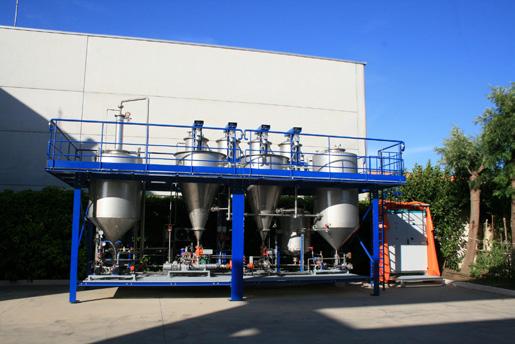
Ebitda was up 18% compared to €22.6 million achieved a year earlier. This comprised €17.2 million from its Belgian operations and €1.8 million from the French ones together with a one-time positive non-cash effect of €7.6 million.
Campine reported total consolidated revenue of €317.4 million, including six months of revenue of the ac-
quired French plants, which was an increase of more than 40% compared to 2021.
Campine said the revenue was related to increased material/metal prices as the volumes remained almost equal.
The battery breaker activities in France are hosted in a new recycled batteries business unit. Campine’s C2P recycling company has become its recycled polymers unit.
“With the expansion, we now recycle a volume of 180,000 tonnes of used batteries, which is the equivalent of 10 million car batteries per year,” said division director David Wijmans.
Wijmans said the group also expanded its feedstock and is now collecting batteries from a broader region.
CEO Wim De Vos said: “There is a clear consolidation in Europe with some temporary and definite lead metal production plant closures, which currently creates a relative shortage of lead metal in Europe.
YOUR ITALIAN PARTNER FOR BATTERY RECYCLING
f p u r e l e a d o x i d e s w i t h o u t t h e u s e o f p y r o m e t a l l u r g y .
I t i s b a s e d o n a s p e c i a l h y d r o m e t a l l u r g i c a l a n d c o m p l e t e l y e c o - f r i e n d l y t r e a t m e n t o f t h e d e s u l p h u r i s e d l e a d p a s t e , w h i c h l e a d s t o t h e p r o d u c t i o n o f p u r e n a n o s t r u c t u r e d l e a d o x i d e s o f d i f f e r e n t t y p e s ( l i t h a r g e , m a s s i c o t o r m i n i u m d e p e n d i n g o n t h e t r e a t m e n t t e m p e r a t u r e ) w h i c h m i g h t b e u s e d b o t h f o r t h e p r o d u c t i o n o f a c t i v e m a t e r i a l f o r b a t t e r i e s ( s t a r t e r a n d t r a c t i o n b a t t e r i e s ) , a s w e l l a s i n t h e c e r a m i c , g l a s s a n d r u b b e r i n d u s t r i e s ,
A f t e r s e v e r a l y e a r s o f r e s e a r c h a n d f i n e t u n i n g o f t h e t e c h n o l o g y i n a d e m o p l a n t ( 2 t / d ) a n d f o l l o w i n g a n e x p e r i m e n t a l p r o d u c t i o n o f 2 0 0 0 b a t t e r i e s c o n t a i n i n g t h e r e g e n e r a t e d l e a d o x i d e s t h a t d e m o n s t r a t e d a g r e a t e r c a p a c i t y a n d a l o n g e r l i f e t h a n t h o s e p r od u c e d w i t h t r a d i t i o n a l p r o c e s s e s , t h e L e a d 3 t e c h n o l o g y i s f i n a l l y r e a d y f o r c o m m e r c i a l i z a t i o n
S E N D Y O U R E N Q U I R Y T O : i n f o @ s t c i t a l y . c o m
www.stcitaly.com

www.batteriesinternational.com Batteries International • Spring 2023 • 31 RECYCLING NEWS
L e a d 3 i s a n i n n o v a t i v e p r o c e s s , p a t e n t e d b y S T C , f o r t h e p r o d u c t i o n o
Oxide
Lead3
Lead
Regeneration Process
Israel gives its go-ahead for first national ESS prototype
Planning chiefs in Israel have approved a blueprint for an 800MW/3,200MWh energy storage park comprising a variety of ESS technologies, the government announced on May 2.
The energy and infrastructure ministry said the National Council for Planning and Construction had given the green light for the project in the north of Haaretz — the first time Israel had approved a detailed national outline plan dedicated to energy storage.
The plan, which was set for formal sign-off by the government
as Batteries International went to press in mid-May, provides for the construction of four ESS complexes, each with a capacity of around 200MW to be built in stages “according to the needs of the system and different storage technologies”.
The battery systems would collect and store renewable power produced by solar facilities in the region for transmission via the grid during hours of electricity peak demand.
Energy and infrastructure minister Israel Katz said in a subsequent Tweet on May 4 the ESS plan “in -
cludes the ability to provide ‘kosher electricity’ to ultra-Orthodox neighborhoods on Shabbat (the Jewish day of rest) instead of the current polluting generators, without raising the price of electricity for the general public”.
In a separate announcement, Katz said: “Saving energy in this way will allow us to increase the production of renewable energy, improve the reliability of the electricity supply and stabilize the functioning of the network — measures that will contribute directly to the growth of the economy.”
Rimac accelerates into battery storage market
Autos and battery tech group Rimac said on May 4 it was entering the ESS market with the launch of Rimac Energy.
The Croatia-based group, whose Rimac Automobili division develops and produces electric sports cars, drivetrains and battery systems, said it would reveal details about its ESS technology later this year.
Rimac Energy will feature utilityscale systems, commercial and industrial applications plus integrated battery buffered charging.
The group claimed its proprietary battery architecture will provide more efficient stationary ESS units with a system footprint reduction of 40% compared to current systems.


The Rimac Energy team has been built up over the past 18 months and is now 60 strong.
Rimac Energy’s director Wasim Sarwar said the group is already in talks with several customers, including for a pilot project with a leading renewable energy company to provide battery storage for its solar and wind plants.
“These pilot systems are expected to be produced by the end of this year and commissioned in 2024.”
Rimac said high volume ESS production will begin in 2025 at the Rimac Campus in Croatia, scaling to more than 10GWh of annual production.
ENERGY STORAGE NEWS 32 • Batteries International • Spring 2023 www.batteriesinternational.com
Watt-Flex® heaters hav e a p a t e n t e d s p l i t - s h e a t h d e s i g n t h a t e l i m i n a t e s c o s t l y B O R E S E I Z U R E . C o n t i n u o u s c o i l t e c h n o l o g y o f f e r s the longest lasting, most even heat used in: - GRID CASTING and FORMATION - COS DIE and LEAD PUMP - COVER SEALING PLATEN It's time you switched to Watt-Flex® cartridge heaters. DaltonElectric.com 978-356-9844
Gloves are off as Korea joins fight over US incentives for batteries
South Korea has launched a multibillion dollar program to defend and expand its battery industry amid fears lucrative US tax breaks and incentives are tipping the global battery trade balance stateside.
Trade, industry and energy minister Lee Changyang announced the move on April 7 after chairing a meeting of the governmentbacked Korean Battery Alliance.
Lee said the government’s new ‘post Inflation Reduction Act (IRA) public-private joint strategy’ policy was needed to support domestic manufacturing and battery material suppliers following the introduction of the US government’s own IRA.
A leading industry commentator told Batteries International: “The gloves are really off now and Korea, just like the Europeans, is concerned about US incentives.
“Korea fears its battery and EV industry could suffer because they source a significant amount of battery raw materials from China, which the US has designated as a foreign entity of concern.”
The Export-Import Bank of Korea and the Korea Trade Insurance Corporation (K-Sure) will support investments by battery firms and material suppliers in facilities within North America with KRW7 trillion ($5.3 billion) of loans and guarantees over the next five years.
Firms will also qualify for Korea-backed higher credit lines, interest rate cuts, lower insurance premiums and other financial incentives.
Lee also pledged support for market penetration schemes for Korean-made lithium iron phosphate batteries.
Starting this year, the government plans to launch more than KRW50 billion ($38 million) of LFP battery projects to support companies entering overseas markets, the minister said.
Korean companies are already developing LFP batteries with some close to activating production lines.
public and private sectors must work together “to solve major challenges and respond effectively to the rapidly changing post-IRA global landscape”.
He said the government would aggressively push for a KRW150 billion nextgeneration battery R&D pre-feasibility study as part of investments to secure cutting-edge technology.
Meanwhile, an existing cap on how much industrial firms can expand floorspace in Korea will be increased by 1.4x for battery companies and others designated as being of strategic national importance and who invest in a new hightech industrial complex to be unveiled in the first half of this year.
In a related move, Korean battery giant LG Energy Solution plans to shore up its battery materials supply chain by producing lithium hydroxide in Morocco, in partnership with China’s Sichuan Yahua Industrial Group.
On March 24, the company announced it would invest KRW7.2 trillion to build two battery production facilities in Arizona.
One plant will produce cylindrical batteries for EVs while the other will manufacture LFP pouch-type batteries for energy storage systems.
In a related move, at the end of March, Korea’s National Assembly passed a bill proposing to boost tax credit rates for investments related to national strategic technologies for large firms of up to 15% and SMEs, 25%.
The government said that meant major incentives were lined up for firms throughout the battery supply chain. Lee said the
Lee said “mother factories” would also be established in the country to nurture and expand competitiveness within the domestic battery industry.
He said three major battery makers were aiming to invest KRW1.6 trillion in developing batteries over the next five years and building an all-solid-state battery pilot line in Korea.
Lee said the government would “fully support domestic firms’ efforts to keep achieving the best outcomes in the global market”.
From 2024, under the IRA in the US, credits will not be available for consumers to buy a ‘clean energy vehicle if it contains any battery components manufactured by a ‘foreign entity of concern’ — one of which designated is China.
From 2025, credits will not be allowed for vehicles containing any critical minerals that were extracted, processed, or recycled by a foreign entity of concern.
According to the US Treasury, at least $45 billion in private-sector investment has been announced to support the EVs and battery supply chain across the country since the IRA was introduced.
Investment in battery tech has the potential to supercharge Turkey’s economy, the country’s president said at the launch of an EV battery manufacturing plant in the country on April 24.
Recep Tayyip Erdogan was speaking at the ground-breaking ceremony for the Siro Battery Development and Produc-
tion Campus in Gemlik — which will have a 20GWh battery cells production when it starts commercial operation in 2026.
Siro, a joint venture between China-based Farasis Energy and Turkish electric car manufacturer Togg, said that the facility intended to manufacture lithium ion nickel manganese cobalt batteries,
modules, and packs.
Erdogan said: “Turkey’s progress on green technologies is important not only in terms of the environment, but also economically and strategically.
Investments in battery technologies especially “have the potential to change Turkey’s place in the world”.
ENERGY STORAGE NEWS www.batteriesinternational.com Batteries International • Spring 2023 • 33
Erdogan welcomes launch of Turkey EV battery project
A leading industry commentator told Batteries
International: “The gloves are really off now and Korea, just like the Europeans, is concerned about US incentives."
Report says corporate ESS funding in Q1 hits $2.2bn
Corporate funding for energy storage companies amounted to $2.2 billion in the first quarter of this year, according to a report published on April 17.
Mercom Capital Group’s report said smart grid companies raised $1.1 billion over the same period.
The $2.2 billion of total corporate funding — including venture capital (VC) funding, debt financing, and public market financing — was achieved in 27 deals.
The total was down on the $4.3 billion in 31 deals Mercom reported in the fourth quarter of 2022.
Meanwhile, Mercom said funding decreased significantly year-on-year compared to $12.9 billion in 27 deals in Q1 2022.
LG Energy Solution’s $10.7 billion IPO contributed 83% of Q1 2022 funding and skewed funding totals, Mercom said.
Energy storage firms’ VC funding, including private equity and corporate venture capital, amounted to $1.1 billion in 19 deals in Q1 2023, an 8% decrease year-on-year compared to $1.2 billion in 22 deals in Q1 2022.
Quarter-over-quarter funding was 35% lower compared to $1.7 billion in 22 deals in Q4 2022.
According to Mercom, the top five VC-funded battery storage companies in Q1 2023 were Electriq Power ($300 million), Our Next Energy ($300 million), WeView ($87 million), NanoGraf ($65 mil-
lion) and Caban Systems ($51 million).
Announced debt and public market financing for EES tech in Q1 2023 fell 58% quarter-on-quarter with $1.1 billion in eight deals, compared to $2.6 billion in nine deals in Q4 2022.
However, announced ESS project funding came in at $2 billion in nine deals in Q1 2023, compared to $749 million raised in seven deals in Q4 2022.
Corporate funding in the smart grid sector amounted to $1.1 billion in 18 deals in Q1 2023, a 42% decrease compared to $1.9 billion in 23 deals in Q4 2022, according to Mercom.
In a year-on-year comparison, funding in Q1
2023 increased 230% compared to $331 million in 15 deals in Q1 2022.
There was a 66% decrease quarter-over-quarter for smart grid VC funding in Q1 2023, with $280 million raised in 14 deals compared to $846 million in 15 deals in Q4 2022.
In a year-on-year comparison, funding in Q1 2023 was 14% lower compared to Q1 2022, when $327 million was raised in 13 deals.
Mercom said the top five VC funded smart grid companies in Q1 2023 included EO Charging ($80 million), CHARGE+ZONE ($54 million), Magenta Mobility ($40 million), ConnectDER ($27 million), and Indra ($21 million).
ENTEK picks contractor for building new $1.5 billion Indiana plant
ENTEK Lithium Separators said on April 20 that Chicago-based Clayco will be its design-build contractor for a new facility in Indiana.
ENTEK announced in March that it was investing $1.5 billion in building the new Terre Haute lithium ion battery separator production facility in the state.
Clayco will design and build the production facilities in Terre Haute to house equipment for the production of lithium battery separators across an area of about 1.4 million ft2
ENTEK said Clayco brings significant experience in the EV segment from projects with companies such as SK On and Group14, which recently
announced the world’s biggest factory for production of advanced silicon battery materials that is being designed and built by Clayco in Washington state.
Clayco has also delivered manufacturing plants throughout the entire electric vehicle supply chain, including battery component and mineral plants for anode and cathode providers, lithium-ion battery cell production plants, and vehicle manufacturing and assembly plants.
The Indiana site will help ENTEK scale its US production to be capable of supporting 1.4 to 1.6 million EVs annually by 2027.
The company plans to break ground on the cam-
Clayco will design and build the production facilities in Terre Haute to house equipment for the production of lithium battery separators across an area of about 1.4 million ft2.
pus in 2023-2024 and launch operations between 2025-2027.
ENTEK CEO Larry Keith said: “We’re embarking on a project that will have positive impacts on the local and larger economy, as well provide a key component required for the electrification of
vehicles to further US climate goals — and a partner like Clayco brings the experience to make informed decisions to help us achieve our objectives.”
ENTEK is the only producer of wet-process lithium ion battery separator materials owned and based in the US.

ENERGY STORAGE NEWS 34 • Batteries International • Spring 2023 www.batteriesinternational.com
EcoGraf signs milestone Tanzania graphite deal
Australia-listed EcoGraf said on April 18 it had signed a milestone deal to move ahead with development of a natural graphite mining operation in Tanzania to supply its battery anode materials business.
EcoGraf signed a framework agreement with Tanzania’s government for the Epanko graphite project, which is also to support lithium-ion EV battery manufacturing operations in Asia, Europe and North America.
Epanko will be developed
and operated by a newly formed joint venture mining firm, Duma TanzGraphite, in which EcoGraf has an 84% stake to the Tanzanian government’s 16%.
EcoGraf said it will use its proprietary HFfree purification technology to process Epanko’s flake graphite without the use of hydrofluoric acid to produce high performance BAM.
EcoGraf said in March that initial operations at Epanko should produce 60,000 tonnes per annum
LG Chem, Huayou to invest in Korea battery precursors plant
LG Chem and China’s Huayou Cobalt are to invest KRW1.2 trillion ($909 million) in a joint venture to build a battery precursor plant in South Korea.
LG Chem announced on April 17 that it expects to start construction of the facility in Saemangeum later this year.
The battery maker said the facility will also be able to produce metal sulfates, giving it a domestic metals refining capacity to ease raw material supply chain concerns.
The deal came just days after South Korea’s government announced a multibillion dollar package of support for its battery sector in the face of lucrative US incentives for the battery industry stateside (see our report on page xx).
LG Chem and Huayou have signed a memorandum of understanding for the joint venture with other investment partners including the Saemangeum Development and Investment Agency.
The facility will have an annual production capac-
ity of 50,000 tonnes by 2026, following the first phase of development.
Production capacity will later be doubled.
LG Chem said about 100,000 tonnes of precursors is enough to annually produce cathodes for more than one million EVs with 75kWh batteries providing a driving range of 500km.
of graphite flake product over a lifespan of more than 17 years.
In February 2022, EcoGraf said it had received conditional approval for a loan
from the Australian government for the equivalent of up to $40 million to support the planned expansion of the company’s BAM facility in Western Australia.
CATL commits to 2025 carbon neutral battery production plan
Chinese lithium batteries major Contemporary Amperex Technology (CATL) has said it plans to achieve carbon neutrality across its battery plants by 2025.
Board secretary Jiang Li told the 20th Shanghai International Automobile Industry Exhibition on April 18 that carbon neutrality would apply across its battery value chain, including raw materials, by 2035.
Meanwhile, Li said CATL would use its position as a new board member of the Global Batteries Alliance to play an active role in formulating and improving the organization’s battery passport initiative — a pilot program to provide
a ‘digital twin’ of physical batteries to aid supply chain transparency through to eventual recycling.
Li also cited latest data by SNE Research, indicating CATL had sold 289GWh of lithium-ion batteries in 2022, giving it a 37% share of the global EV batteries market and a share of more than 43% of the global energy storage batteries market.
In September 2022, CATL said cobalt and lithium used in a battery cells supply deal with Germany’s BMW would be sourced from certified mines, in a move to head-off potential criticism over sustainability and human rights issues.
VARTA cutting jobs despite plans for ESS expansion
VARTA said on April 25 it would cut around 800 full-time jobs across the group, just days after pledging a significant expansion of ESS sales and production following a restructure of the business.
Around 390 of the job cuts will be in Germany over the next two years — 240 of those taking place this year. VARTA employs around 4,700 worldwide.
The company said the cuts were a result of its restructuring and in
response to massive price increases for materials amid global crises, including the RussiaUkraine war and impact of the pandemic.
VARTA board of directors speaker Markus Hackstein said: “We have to shape the specifications of the restructuring plan in such a way that we can secure the future of our company while retaining as many jobs as possible.”
On April 19, the company said it planned a significant expansion of production and sales
of energy storage systems after proposals to restructure its business were given the go-ahead by financing banks.
The restructuring programme includes making targeted investments in growth areas, which the battery maker said included focusing on strong demand for ESS systems from the renewable energy market.
In addition, the company said it wanted to expand its market share of large format lithium ion cells.
ENERGY STORAGE NEWS 36 • Batteries International • Spring 2023 www.batteriesinternational.com








www.wirtzusa.com
TPPL batteries have advanced...but has your manufacturing process? The demand for reserve power and energy storage is rising, from data centers to submarines. Wirtz has the experience and solutions for ALL your TPPL process needs - start to finish. Our proven ConCast grid casting combined with our plate pasting process technology is ideal for producing and handling pure-lead and lead-tin alloy grids. For optimum grid performance, high-speed production, and consistent quality–it can only be Wirtz.

INNOVATIVE | RELIABLE | PERFORMANCE OVER A DECADE OF TECHNOLOGIES AND PROCESSES UTILIZED FOR • GRID CASTING, PASTING • PLATE STACKING • OFF LOADING • PALLETIZING Discover the benefits and market advantage your company can experience from our TPPL process by calling +1.810.987.7600 or emailing sales@wirtzusa.com The Wirtz Group of Companies THIN PLATE PURE LEAD your one source solution CONTINUOUS TPPL
Invinity Energy to build 30MWh UK flow battery

Invinity Energy Systems is to develop a 30MWh vanadium redox flow battery in the UK, the company announced on April 12.
Invinity said it had been awarded £11 million ($14 million) from the UK government for the VRFB longer duration energy asset demonstrator project, which it claimed will be the largest grid-scale battery ever manufactured in the country.
The battery will provide a broad range of grid balancing services.
Invinity said the battery’s storage capacity will be equivalent to the daily energy use of more than 3,500 homes and it will have the ability to deliver full power for a discharge duration of over four hours.
The battery, to be built at Invinity’s factory in Scotland, should start commercial operation in early 2025 and will be around six times larger than the company’s BESS at the Energy Superhub Oxford in southern England.
Invinity said the battery would also be one of the
Avesta plans solid-state R&D center in Portugal
Belgium-based Avesta Battery & Energy Engineering is to develop an R&D center for solid state battery cells in Portugal, the company announced on March 29.
world’s biggest flow batteries — although it should be noted that the China Energy Storage Alliance reported in July 2022 that the 100MW first phase of a planned 200MW/800MWh vanadium redox flow battery energy storage system had been connected to the grid in Dalian, China.
Vingroup, Altinay in Turkey batteries plan
Vietnam’s Vingroup said on April 10 it was joining forces with Turkey’s Altinay Elektromobilite to produce advanced batteries as part of a full-service business for energy storage and mobility systems in the Turkish market.
Altinay general manager Mert Uygun said the partnership with Vingroup’s VinES Energy Solutions subsidiary aimed to attract investment from the domestic energy sector.
VinES will offer the technology, system design, production and verification of the ESS units, while Altinay will head up sales and marketing as well as after-sales services in the Turkish market, Uygun said.
Altinay will also draw on its own experience of designing and building lithium-based energy storage systems and battery packs over the past 12 years, Uygun said.
Last November, Vingroup auto subsidiary VinFast agreed to expand cooperation with China’s Contemporary Amperex Technology to develop battery systems for the EVs market.
Meanwhile, VinES and Canada’s Li-Cycle are assessing proposals to build a lithium ion recycling plant in Vietnam, the companies revealed on April 12.
The plant could be built near battery manufacturing facilities operated by VinES, under an agreement where Li-Cycle would become VinES’ preferred recycling partner for its Vietnamesesourced battery materials from 2024.
The move came five months after the firms agreed to form an international battery recycling partnership.
Avesta has signed a memorandum of understanding with the municipality of Figueira da Foz to develop the 500MWh-1GWh capacity plant at a total cost of more than €1.8 billion ($1.9 billion) on a 17,000m² site owned by the authority.
Avesta CEO Noshin Omar (pictured left) said the plant would be built in two phases and would eventually employ more than 2,000.
Figueira da Foz mayor Pedro Santana Lopes (pictured right) said the project was in line with aspirations to become a center of high-tech development in the region.
In January, Avesta unveiled plans to develop a combined battery packs and recycling complex in Seneffe-Manage, Belgium.
The ‘BE-VOLT’ plant should have an annual manufacturing capacity of 3GWh, which Avesta said would make it Belgium’s first gigafactory.
Tesla to invest and build Shanghai Megapack factory
Tesla is investing an undisclosed sum to manufacture its Megapack energy storage systems at a new plant in Shanghai, the firm said on April 9.
The factory will have an annual production capacity of 40GWh, producing some 10,000 Megapacks each year.
According to Chinese state media, Tesla will
break ground for the project in the Lin-gang pilot free trade zone area in the third quarter of this year and start production in the second quarter of 2024.
Zhuang Mudi, deputy secretary-general of the Shanghai municipal government, said the project would help drive the development of the
energy storage industry as well as the low-carbon transformation of Shanghai.
In January 2019, Tesla broke ground on a car manufacturing plant in Shanghai, becoming the first company to benefit from a policy allowing foreign carmakers to establish wholly-owned subsidiaries in China.
ENERGY STORAGE NEWS 40 • Batteries International • Spring 2023 www.batteriesinternational.com
Invinity’s 5MWh VFB at the Energy Superhub Oxford
EU urged to form battery raw materials club with US
Transport industry leaders have urged the EU to form a ‘raw materials club’ with the US to ensure a stable battery supply chain.
The European Automobile Manufacturers’ Association (ACEA) issued the call on March 17, the day after the European Commission published a longawaited Critical Raw Materials Act and Net-Zero Industry Act.
The draft raw materials regulations include an updated version of the EU’s list of critical raw materials and defines, for the first time, a list of strategic raw materials vital to powering the bloc’s green tech agenda, including domestic battery manufacturing for EVs and energy storage systems.
ACEA broadly welcomed the proposals but questioned the “potential effectiveness and overall coherence” of the proposals with the EU’s green agenda.
The body said more work needed to be done on the concept of establishing a raw materials club in conjunction with the US.
Meanwhile Recharge, the European association for advanced rechargeable and lithium batteries, said on March 16 the Commission’s proposals could become a game-changer for competitiveness in the battery value chain.
However, Recharge
general manager Claude Chanson said it was crucial for the Commission to deal with “incoherencies” between the new proposals and existing EU laws that continue to delay investments and impede the bloc’s Green Deal.
The Commission said on December 9 it had concluded talks with Chile to
unlock investment potential for supplies of lithium for Europe’s batteries manufacturing market.
Last March, EU leaders and battery industry chiefs agreed to expand funding to support gigafactory projects and speed-up permitting processes, amid fears that investors are being lured away from Europe by lucrative tax breaks and incentives in the US and Asia.
According to new analysis published on March 6, nearly 70% of Europe’s overall planned pipeline of lithium ion battery cells production capacity by 2030 is at risk of being delayed, scaled down or cancelled, according to stark new analysis published on March 6.
The study by clean transport campaign group Transport & Environment indicated around a fifth (285GWh) of Europe’s 1.8TWh expected EV battery factories potential is at ‘high risk’ and a further 52% (around 910GWh) at ‘medium risk’.
Overall, 68% of the potential battery cell supply in Europe is at risk if further action is not taken — and the EU will be unable to satisfy its battery demand without imports from foreign rivals, T&E said.
T&E’s senior director for vehicles and e-mobility Julia Poliscanova said: “EU battery manufacturing is caught in the crossfire between America and China. Europe must act or risk losing it all.
“A green industrial policy focused on batteries with EU-wide support for scaling up production is urgently needed to react to US subsidies and China’s years of dominance.”
The study increased pressure on EU leaders following crisis proposals unveiled in December 2022 to avert a potential investments meltdown for European gigafactory plans, amid fears cash is instead flowing into projects in the US and Asia.
T&E’s analysis was derived from publicly avail-
able information assessing 50 gigafactories planned for Europe by 2030 — based on the projects’ maturity, financing, permits, secured factory sites and project companies’ links to the US.
On top of China’s dominance in EV supply chains the US Inflation Reduction Act, which is expected to pour at least $150 billion into battery components and metals manufactured in the US or ‘friendly countries’, is “changing the rules of the game fast”, the study said.
In terms of global investment into lithium ion batteries tracked by Bloomberg New Energy Finance, Europe’s share dropped from 41% in 2021 to a meagre 2% in 2022, while investment in China and the US continued to grow, according to T&E.
Germany, Hungary, Spain, Italy and the UK stand to lose the most if battery-makers change their plans, according to the study.
AM Batteries is teaming up with Amperex Technology to develop solvent-free electrode manufacturing technology for lithium ion cell production, the firms announced on April 5.
The partnership will further develop AMB’s dry-electrode fabrication technology with the lithium battery manufacturing expertise of Amperex, from which Chinese battery giant CATL was spun off in 2012.
Amperex is now owned by Japan’s TDK Corporation.
The firms said they want
to tackle critical challenges facing the Li battery sector including its heavy carbon footprint, energy consumption and high infrastructure costs derived from existing solvent evaporation process used for electrode fabrication.
US-based AMB says it has developed an electrostatic spray-deposition technique to produce key battery electrode components sustainably.
Dry cathode and anode electrode materials are electrostatically charged and deposited on to metal-foil current collectors,
which are then processed to their final state without the use of toxic solvents, the company claims.
AMB’s CEO Yan Wang said: “One of the fundamental problems for battery manufacturers is refining manufacturing techniques to remove the solvents used in wet-coating of electrodes.
“Our dry-electrode manufacturing technology allows for the coating of lithium ion battery electrodes without the need for any solvents or energy-intensive evaporation.”
ENERGY STORAGE NEWS www.batteriesinternational.com Batteries International • Spring 2023 • 41
AM Batteries, Amperex partner to develop solvent free electrodes
US contest to find future battery industry leaders
tion in science, tech, engineering and maths, will be managed by the Argonne National Laboratory when it gets underway in the autumn of this year.
opment, testing, and vehicle integration and demonstration.
A three-year engineering competition to find the next generation of battery industry specialists has been launched by the US Department of Energy and auto firm Stellantis.
Called the Battery Workforce Challenge the aim is to nurture the next generation of battery specialists. The collegiate program, which includes vocational training and youth educa-
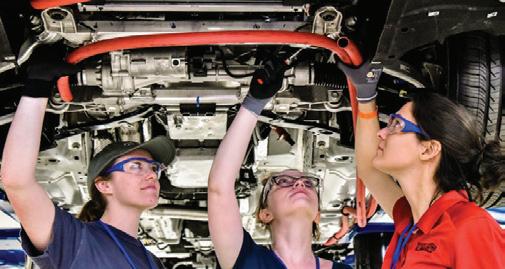
The program will feature an advanced battery design and development student competition, with universities and vocational schools from across North America invited to design, build, test and integrate an advanced EV battery into a future Stellantis vehicle.
Teams will follow realworld industry milestones focused on battery design, simulation, controls devel-
Argonne said participants will also learn project management, communications, teamwork and problem-solving skills that will provide “unparalleled educational experience and ready them for future careers throughout the battery industry”.
Mark Stewart, Stellantis North America COO said: “The Battery Workforce Challenge will help train the engineers of tomorrow and is a win-win for Stellantis and the entire battery industry as we address our nation’s toughest energy and mobility challenges by helping to build a highly skilled and productive future workforce.”
No recovery for sunken ‘EV battery fire’ ship
A vessel carrying 4,000 vehicles that sank in the Atlantic last year after a suspected EV battery fire will likely never be recovered and the cause of the disaster will remain a mystery, the ship’s owner told Batteries International on March 30.
EVs were among the vehicles on board the Felicity Ace car carrier, which caught fire in February 2022 southwest of the Azores while sailing from Germany to the US.
A spokesperson for MOL Shipmanagement Singapore, whose Car Carriers subsidiary owned the vessel, said the depth of the sea where the Felicity Ace sank while being towed in a failed rescue attempt is an estimated 3,000 metres, making a potential salvage operation “quite difficult”.
The spokesperson declined to comment when asked if MOL had received claims for compensation relating to the potential environmental hazard and loss of the vehicles on
board — worth an estimated $400 million-$500 million, according to the Safety & Shipping Review 2022, published by corporate insurance carrier Allianz Global Corporate & Specialty.
AGCS said that after more than 70 reported fires on container ships alone in the past five years, a major rethink of vessel designs, fire detection and fire-fighting capabilities may also be required.
The MOL spokesperson said the company continues to transport EVs, taking necessary safety measures, but declined to say whether vehicle cargo handling rules had been reviewed or changed in the wake of the Felicity Ace incident.
Batteries International’s sister publication, Energy Storage Journal, revealed in March 2022 that China had called on the International Maritime Organization to consider a shake-up
of maritime safety rules for EVs being shipped by sea, amid a rising tide of fires involving lithium ion batteries.
An IMO spokesperson said that proposals relating to fire protection and the tackling of fires involving transport of EV/ new energy vehicles are expected to be discussed by the organization’s subcommittee on ship systems and equipment during the next year.
SMC, Fluence launch 1,000MW BESS park in Philippines
SMC Global Power Holdings inaugurated a 1,000MW/1,000MWh fleet of battery energy storage systems in the Philippines on April 4 — 570MW of which was supplied by Fluence Energy.
Fluence said the BESS portfolio, which is spread across 32 sites, is the largest in southeast Asia and provides
advanced grid stability as increasing amounts of intermittent renewable energy sources are added to the grid.
SMC is one of the biggest power suppliers in the Philippines and US-based Fluence’s biggest customer.
Fluence said the BESS projects provide critical grid stability services throughout the National
Transmission Network in the Philippines including frequency response, reserve power, and voltage regulation.
“The deployment of these energy storage systems marks a significant milestone in the clean energy transition journey of the Philippines towards a cleaner, more resilient, and flexible grid,” Fluence said.
ENERGY STORAGE NEWS 42 • Batteries International • Spring 2023 www.batteriesinternational.com
Golden Profit from Scrap Lead Acid Batteries through the unique Engitec CX® Technology and Equipment…
Scrap Lead Acid Batteries Recovery Plant - over 230,000 tpy by courtesy
The widest range of productivity from 10.000 tpy up to 300.000tpy and beyond engitec.com
Batteries and the broadest Portfolio of Technologies for a Greener Environment, already present in the five Continents
…Master in Separation and Lead Production…
• CX® Battery Breaking and Separation
• Grids and Paste Desulphurization with NaOH or Na2CO3
• Sodium Sulphate Crystals Production
• Foundry and Refinery
• Process and Hygiene Fumes Filtration
• Fully Automatic Ingots and Hogs Casting, Stacking and Strapping
...Master in Innovation…
• Li-Ion Battery Recycling Process

• FAST ® Electrochemical Lead Production from Concentrates or Scrap
...and the story continues...
Engitec Technologies S.p.A. | Via Borsellino e Falcone, 31 | Novate Milanese (MI) Italy | +39 02 382071 | info@engitec.com
of Clarios LLC (USA)
Freyr launches cell demonstration plant
Freyr Battery held an inaugural ceremony on March 29 for its battery cells customer qualification plant in the north of Norway.
The CQP in Mo i Rana hosts an industrial-scale demonstration battery cells production line based on 24M’s semi-solid lithium ion technology.
The ceremony came a day after Freyr announced plans to work with Glencore, Caterpillar, Siemens and the Nidec Corporation.
Freyr co-founder and CEO Tom Einar Jensen said potential areas of commercial collaboration for
the partners included battery cell manufacturing, recycling, mining and refining and stationary battery storage for the power market.
The launch of the CQP came as Freyr pushed ahead with construction of its ‘Giga Arctic’ battery production plant at the same location.
Freyr plans to develop up to 43GWh of battery cell production capacity by 2025, with an ambition of up to 83GWh in total capacity by 2028.
The company announced last June that it had signed a battery materials deal
for the CQP with Chinabased Changzhou Senior New Energy Materials and Senior Material (Europe), based in Sweden.
The firms have reserved unspecified supplies of separator material through 2028 and Freyr has an option to extend supplies until 2031.
Those deals followed the signing of nine other agreements with key battery material suppliers, for what Freyr said would be “more than 90%” of its raw material requirements for initial facilities, including the CQP.
VanadiumCorp selects Quebec as site for flow battery electrolyte test facility
VanadiumCorp Resource, the Canadian mining and technology company, has chosen Quebec to build an initial test facility for the production of vanadium electrolytes for VRFB batteries, the firm announced on March 29.
Production should start in the fourth quarter of this year and the test facility is sufficient to supply 6.2MWh of VRFB storage annually, the firm said.
VanadiumCorp is buying manufacturing equipment
for the facility at the Carrefour d’Innovation sur les matériaux de la MRC des Sources (CIMMS).
CIMMS provides technical support services to innovative mining, metals and eco-materials companies active in the area.
Contingent on sales, potential production at the CIMMS site can expand incrementally according to market needs using a modular production-line design — each module having a capacity of four mil-
lion litres annually, each providing about 80MWh of VRFB storage per year.
VanadiumCorp and CIMMS have signed a cooperation agreement to produce more than two million litres a year of highquality vanadium electrolyte.
Paul McGuigant, VanadiumCorp CEO, said the facility will help the firm plan production for the expanding global market for this key ingredient in long-duration VRFB batteries.
Volt Resources launches battery anode plant study
Volt Resources said on March 27 it was launching a feasibility study into plans to establish a battery anode material (BAM) plant, potentially to serve the US markets.
The move came six months after the Australiabased company formed a new unit, Volt Energy Materials, to supply graphite products for lead acid and lithium battery markets in the US.
The BAM feasibility
study should be completed in September 2023 and will be used to support a funding proposal to the US government.
CEO Prashant Chintawar said that while mining and processing of raw materials was the foundation of the company, Volt anticipates boosting the business by supplying battery manufacturers. “Due to a strong market interest in local natural graphite anode, supply deficit, and
robust financial incentives from governments, we expect the feasibility study to deliver highly favourable project economics.”
In February 2022, Volt was selected as the coated spheronized purified graphite supplier for Energy Supply Developers — whose initial 50GWh lithium battery production facility is set to start operations at an undisclosed site in a Midwestern state in the US by 2025.
Freyr has also bought a site in the US state of Georgia to build its ‘Giga America’ battery cells manufacturing plant.
Macquarie, Shell back Australian Gridstack project
Macquarie Asset Management’s Green Investment Group and Shell Energy Operations are behind plans to develop a 200MW/400MWh Fluence Gridstack BESS in Australia, the firms announced on March 31.
The system (see image), to be completed late next year on the Rangebank Business Park in Melbourne, will have the storage capacity to power the equivalent of 80,000 homes across the state of Victoria for an hour during peak periods, the partners said.
The Rangebank BESS will help to stabilize the state’s electricity supply by providing additional storage capacity, which can be discharged at times of peak demand.
Shell Energy will have access to all of the system’s energy over a 20-year period. Fluence will build, service and maintain Rangebank.
Shell Energy Australia CEO Greg Joiner said the project is the group’s first grid-scale battery investment in Victoria and marks Shell’s first direct equity investment in a utility-scale BESS worldwide.
Investment details were not disclosed, but investment firm Perfection Private has a minority stake in the project.
Green Investment Group’s interest in the project will be transferred to its Eku Energy battery storage development business, which has a pipeline of projects around the world including the UK, Japan and Taiwan.
ENERGY STORAGE NEWS 44 • Batteries International • Spring 2023 www.batteriesinternational.com
president of ENTEK International and Mark Matthews, senior VP of speciality global at EnerSys.
Hammond chief warns over
Lead batteries are “giants hiding in plain sight” and more than capable of boosting US national and energy security needs, Hammond Group chief Terry Murphy has told a Capitol Hill briefing.
The Hammond president and CEO (pictured) told the May 10 event, organized by Battery Council International, that the unintentional consequences of expanding the use of lithium ion systems in EVs and energy storage had not been fully thought through.
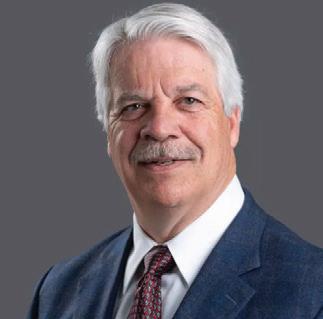
In terms of EVs, they can be “hugely destabilizing” to the grid in terms of their demand for instantaneous power, Murphy said.
“The challenges we’re putting on the grid by trying to go to a zero emissions economy are completely undermining national security and will cause more and more blackouts.”
On the need for an expansion of energy storage systems, Murphy said he regarded putting a lithium ion battery into a stationary application just as ludicrous as trying to put a lead battery into a cellphone.
“It should be horses for courses,” he said.
“One reason is the supply chain is just not there. We don’t own it and we are on a path of having true grid instability.”
Billions of dollars are being spent on lithium ion recycling — and should be because of the need to recover all sorts of valuable material.
However, Murphy contrasted the cost and difficulties of lithium recycling with that of lead, of which he said there is an inexhaustible supply that’s easily recovered”.
There is not a single lithium ion battery in use today that came from another lithium ion battery, he said.
Conversely, there’s not a lead battery today that did not come from another lead battery.
In the US, lead has a 99% recycling rate and offers infinite sustainability.
“Lead goes into the product it was
recycled from. So when we talk about trillions of kilowatts of storage needs, we have to come up with systems that have infinite sustainability.”
Murphy said while lithium was a “great technology, we should probably have policies to save it before we exhaust all of the resources”.
Other key industry leaders who addressed the briefing were Pete Stanislawczyk, EVP and CCO of East Penn Manufacturing, Kimberly Medford,
The Capitol Hill briefing brought together experts from the US battery industry to share key insights on the critical role of domestic manufacturing in meeting the growing demand for energy storage and supporting a low-carbon future. BCI said to realize the full potential
Stanislawczyk said East Penn and many of its peers, “day in and day out”, were delivering thousands of truckloads of batteries for distribution.
As they drop off the new batteries they are picking up used batteries and the truck carries on to a recycling facility, where they drop off the used batteries and typically pick up the lead to bring back to make new batteries, he said.
“It’s a really great system that we don’t see with any other technologies,” he said.
Medford highlighted some staggering statistics of how ENTEK supports the lead and lithium battery sector, including how the group’s facilities produce enough battery separator material to circle the equator every two weeks.
Matthews told the briefing that while lithium batteries would be a big part of the future for EnerSys, it was also really important to continue advances being made in technology for the company’s lead battery portfolio.
In addition, he said it was essential that as much intellectual property as possible is retained in the US to develop lead and lithium battery technologies.
Pennsylvania congressman Daniel Meuser praised the industry leaders for their companies’ role in underpinning the national economy and energy security.
Meuser recently introduced proposed legislation that would eliminate taxes on lead oxide, antimony and sulfuric acid. The USA Batteries Act would repeal the chemical tax implemented as part of the Infrastructure Investment & Jobs Act.
BCI says this forces an essential American industry to pay higher costs for key raw materials used to manufacture lead batteries — a tax that is not levied on imported batteries.
A must-hear recording of the Capitol Hill briefing is on BCI’s website: https://bit.ly/3IvjHf9
of the US battery industry, supportive government policies and investment will be crucial. The briefing therefore addressed the importance of federal policies that promote domestic battery manufacturing and encouraged investment in research and development.
POLICY WATCH www.batteriesinternational.com Batteries International • Spring 2023 • 45
Not thought through. That was the recent verdict by leading battery figures over the expanding deployment of lithium batteries and the threat they pose to grid stability.
‘ludicrous’ use of lithium in stationary storage
“The challenges we’re putting on the grid by trying to go to a zero emissions economy are completely undermining national security and will cause more and more blackouts”
Investments battle triggers green tech arms race
Battery storage projects around the globe are in line to benefit from an investments bonanza as economies power up to regain and expand business lost in the pandemic — but with climate-friendly industrial policies as the new touchstone.
Analysis for this Batteries International cover story shows widespread recognition by the world’s leading financial institutions that they need to turn on the financial taps to back innovations in battery storage, e-mobility, renewables and clean energy systems to feed an increasingly powerhungry planet.
The European Investment Bank alone revealed earlier this year that it had signed a record €17 billion ($18.5 billion) in new financing for energy storage, renewables, efficiency and grids in 2022, spurred by the European Union’s green energy agenda
and security of supply concerns amid Russia’s war with Ukraine.
That sum will be dwarfed by the near $400 billion package of investments that the US is rolling out to tackle the climate crisis.

However, the bonanza of investment support now being offered by governments and financial institutions to stimulate private investments in battery storage and beyond has also triggered a green arms race.
Texas-based hedge-fund manager Eagle Global Advisors defines the green arms race as the idea that in
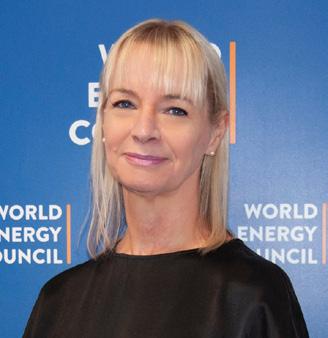
COVER STORY: CASHING IN ON THE BESS BONANZA 46 • Batteries International Spring 2023 www.batteriesinternational.com
As countries jostle to out-incentivize each other in a winner-takes-all strategy to succeed in the energy transition, there are warnings not to leave poorer nations behind.
“Throwing more money and technology at complex system change is not enough to ensure faster or fairer energy transitions”
— Angela Wilkinson. World Energy Council
www.sorfinyoshimura.com
USA: sorfin@sorfin-yoshimura.us


CHINA: qingdao@sorfin-yoshimura.cn

BRAZIL: vendas@sorfin.com.br

THAILAND: jiroyoshimura@sorfin-yoshimura.jp


JAPAN: tokyo@sorfin-yoshimura.jp
FRANCE: paris@sorfin-yoshimura.fr

MEXICO: dbortoni@sorfin-yoshinura.us

INDIA: sales@sorfin-yoshimura.in

SY Innovations: agurevich@sy-innovations.com


GOT YOU COVERED
WE’VE
order to encourage energy transition, countries have to out-incentivize others — be they friends or foes.
The introduction of the US Inflation Reduction Act in August 2022 was the tipping point, when allies, let alone enemies, braced themselves for the economic shockwave of Uncle Sam’s sheer financial firepower.
US allies voiced concerns over the potential of the measures to suck private investment away from them.
There has since been a redoubling of efforts by countries in the European Union, Canada and South Korea to name but a few to draw up similar incentives to protect battery manufacturing, raw material supply chains and related sectors.
According to World Energy Pulse — an annual survey by the World Energy Council of more than 700 energy leaders and decision makers from 77 countries — 48% of respondents said the focus on decarbonization was redirecting $1 trillion of investments a year to adding renewable power capacity and low carbon liquid fuels.
And 46% of respondents cited national self-interests and the risk of the green arms race as the “greatest obstacles to progressing orderly, clean and just energy transitions”.
The survey revealed that national interests continue to dominate, with 59% of respondents agreeing that energy independence was critical to securing their countries’ climate-energysecurity agendas.
However, this me-first sentiment
$5 TRILLION A YEAR NEEDED
According to a report published by the the International Renewable Energy Agency in May, to meet the climate goal of limiting temperature increases to 1.5°C above pre-industrial levels, the renewable energy share in the primary energy mix should rise to about three-quarters — which would require annual investments averaging over $5 trillion until 2030.
However, the agency said access to funding in many emerging and low-income economies is
was challenged with the overwhelming (84%) acceptance that “energy interdependence is the new global reality”.
Council secretary general and CEO Angela Wilkinson said: “Throwing more money and technology at complex system change is not enough to ensure faster or fairer energy transitions.”
Wilkinson called for a “humbler leadership approach”.
The International Renewable Energy Agency has also called for lessdeveloped regions not to be left out.
But even the highly-developed market economy that is Australia, the so-called lucky country, fears being locked out of the race to become a global clean energy superpower because of dramatic increases in ambition and levels of policy support among other major economies.
Clean Energy Council CEO Kane Thornton told an industry roundtable on March 1 that while the country had vast untapped potential in renewables and storage, Australia was now facing a “global clean energy arms race that requires new levels of leadership and policy support to ensure we unlock Australia’s full potential”.
Thornton called for long-term policies to incentivize private capital to invest in Australia. “The production of green hydrogen and the rollout of renewable energy in the US is now backed by enormous new incentives,” he said.

“Australia has a small window of time to stake our claim in the emerging green industries of the future, which can ultimately overtake our declining fossil fuel industries and revitalise and expand our local manufacturing base.”
insufficient, and often too costly, to accelerate the energy transition at the necessary rate.
It’s worth putting this $5 trillion number into context as human beings aren’t good at visualising huge numbers. Imagine how long a million seconds would last. The short answer is 11-1/2 days.
And now a billion seconds?
Roughly 31.7 years.
And now putting the number of a trillion seconds into context? It’s 32,000 years — less a few hundred years.
Another mathematician puts it like this: “1 million seconds is about 11.5 days, 1 billion seconds is about 32 years while a trillion seconds is equal to 32,000 years“.
Thornton said there was no doubt that decision makers in Australia had the necessary ambition, but said that needed to be matched with “a cohesive strategy and policy framework that will stimulate the new wave of investment in clean energy and green manufacturing”.
Thornton said the unprecedented investment in clean energy by the US, Canada, and, most recently, Europe was acting as a “giant magnet for clean energy investment, making it harder for Australia to attract green capital, equipment and skilled workers”.
A key pillar of any strategy should be an extension of the national Renewable Energy Target to accelerate investment.
The RET, which is set to expire in 2030, is an Australian government scheme designed to reduce emissions of greenhouse gases in the electricity sector and encourage the additional generation of electricity from sustainable and renewable sources.
RET works by allowing both largescale power stations and the owners
COVER STORY: CASHING IN ON THE BESS BONANZA 48 • Batteries International Spring 2023 www.batteriesinternational.com
Australia is facing a global clean energy arms race that requires new levels of leadership and policy support to ensure we unlock Australia’s full potential
— Kane Thornton, Clean Energy Council
of small-scale systems to create largescale generation certificates and smallscale technology certificates for every MWh of power they generate.
Certificates are then purchased by electricity retailers (who supply electricity to householders and businesses) and submitted to the Clean Energy Regulator to meet the retailers’ legal obligations under the RET.
This creates a market which provides financial incentives to both large-scale renewable energy power stations and the owners of small-scale renewable energy systems.
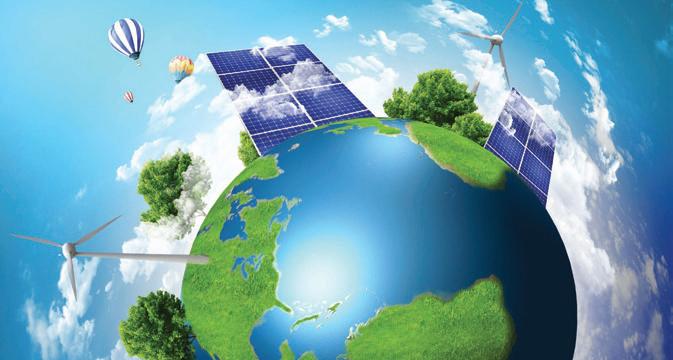
Thornton said extending the RET “would be a relatively simple and efficient approach for encouraging investors to accelerate clean energy deployment in Australia”.
An extension to the RET would ensure the government delivers on the ambition of 82% renewable energy by 2030 and rebuild Australia’s clean energy competitiveness.
“This would also deliver lower power prices by increasing the supply of low-cost power and further reducing our reliance on increasingly expensive gas and unreliable coal generation,” Thornton said.
PrecisionPastingFibers CoveringTheGlobe


•Specializedverticalcuttingprocess
•Newhighvolumecapacityproductionfacility

•Modernstateoftheartproductionandlabfacilities

•Allfiberstypesavailable
•Worldwidedistributionandsupplybase
•ISO 9001:2015
1515ElmwoodRd.
Rockford,Il61103USA
Tel:815-964-8619
Fax:815-964-7949
COVER STORY: CASHING IN ON THE BESS BONANZA www.batteriesinternational.com Batteries International • Spring 2023 • 49
The renewable energy share in the primary energy mix needs to rise to about three-quarters — which would require annual investments averaging over $5 trillion until 2030
— International Renewable Energy Agency
Consistencyyoucancounton...since1938
www.cellusuede.com
The unprecedented investment in clean energy by the US, Canada, and, most recently, Europe is acting as a giant magnet for clean energy investment
What’s a trillion or two between friends?
A landmark initiative that could create up to $15 billion in loans for battery storage and climate projects across Asia and the Pacific has been rolled out by the Asian Development Bank (ADB).
The bank says IF-CAP — Innovative Finance Facility for Climate in Asia and the Pacific — announced on May 2, could ramp up support for the region in the battle against climate change.
IF-CAP financing will also contribute to ADB’s ambition of securing $100 billion from its own resources for climate change-related projects for 2019–2030.
A spokesperson for the bank told Batteries International that financing battery storage was totally in line with existing policies and IF-CAP.
Moreover, IF-CAP is definitely not going to favour one battery chemistry over another, the spokesperson said. (So the approach is unlike, for example, the EU’s propensity to cherry pick lithium over lead.)
The bank is expecting to see increased investments in battery storage by its developing member countries over the next few years, thanks to the “rapid growth in deployment of intermittent renewable energy in their power systems”.
Investment in renewables makes little sense without investment in storage.
Asian battery makers, South Korea in particular, are keen to bolster business in North America, so the ADB is keen to keep out of geopolitical concerns triggered by the tax and other incentives being offered by the US under the Biden administration’s Inflation Reduction Act.
So the bank’s spokesperson declined to say whether ADB’s unveiling of a new financial support instrument had anything to do with fears that the pulling power of US investment prospects would lure business away.
But the US is itself one of the initial partners for IF-CAP, the others being Denmark, Japan, South Korea and
the UK — all are now in talks about providing a range of grants for project preparation along with guarantees for parts of ADB’s sovereign loan portfolios.
IF-CAP was unveiled on the opening day of ADB’s annual meeting in South Korea, where bank president Masatsugu Asakawa said the region was on the frontline of the global fight to tackle climate change.
The bank said reduced risk exposure created by the scheme will allow it to free up capital to accelerate new loans for climate projects.

With a model of ‘$1-in, $5-out’, the initial ambition of $3 billion in guarantees could create up to $15 billion in new loans for much-needed climate projects across Asia and the Pacific — which the bank claims to be the first leveraged guarantee mechanism for climate finance ever adopted by a multilateral development bank.
Empowering investments
Battery storage is clearly seen as an invaluable and bankable weapon in the armoury to combat climate change by global financial institutions.
In November, the United Arab Emirates will host the 28th outing of the UN’s Climate Change Conference — where International Monetary Fund president Kristalina Georgieva has said development banks and others will need to agree a step change in their approach to redirect trillions of dollars towards meeting the climate challenge.
Georgieva, a former World Bank CEO, said: “Stronger cooperation and partnerships across the public and private sector are vital, there is no time to waste.”
She joined COP28 president-designate Sultan Al Jaber and the UN’s special envoy for climate action and finance, Mark Carney, at an IMF meeting in Washington on April 11 to call for greater concessional financing to give private investors the confidence they need to fund an expansion of clean energy systems to include energy storage systems.
Al Jaber, who is also the UAE’s industry and advanced technology minister, said: “Only 20% of clean tech investment is going to developing countries that make up over 70% of
COVER STORY: CASHING IN ON THE BESS BONANZA 50 • Batteries International Spring 2023 www.batteriesinternational.com
Development banks will be critical to sustaining the momentum of public and private finance needed to power the global clean energy transition, but the multi-trillion-dollar scale of the challenge is not for the faint-hearted.
Initial ambition of $3 billion in guarantees could create up to $15 billion in new loans for much-needed climate projects across Asia and the Pacific
the global population, and the least developed countries receive less than two cents on every dollar spent.”
He said the UAE wanted to “reignite the relationship between public and private finance to meet development and climate goals”.
However, the scale of the task is staggering, particularly when seen against the backdrop of ongoing economic sluggishness in the wake of the pandemic and a war in Europe.
Greenbacks for green energy
According to a report released in February by the High-Level Advisory Group (HLAG) on Sustainable and Inclusive Growth, whose co-chairs include the IMF and World Bank, even conservative estimates suggest emerging markets and developing economies (EMDEs), other than China, have aggregate investment and development spending needs in the order of at least $1.3 trillion per year by 2025 and $3.5 trillion per year by 2030.
The group, which has met 10 times since it was formed 18 months ago to
consider the twin impacts of the pandemic and climate change, said the figures “far exceed existing financing and call for urgent action”.
To support the integration of renewable energy into EMDEs countries’ energy mixes and provide reliable energy supply, electricity networks will need to double in length, and annual deployment of energy storage will need to increase 100 times.
According to the report, if facilitated, investing in the energy transformation at the scale and pace needed for inclusive and sustainable development and climate change mitigation and adaptation goals would represent the biggest investment opportunity ever for the world economy and especially for EMDEs.
Green recovery measures in 21 major EMDEs between 2020 and 2030 could generate $10 trillion in investment opportunities and more than 200 million jobs and reduce greenhouse gas emissions by 4 billion tonnes.
The private sector can undertake the bulk of the additional investment
FASTER, EASIER SENSITIVE MATERIAL PROCESSING
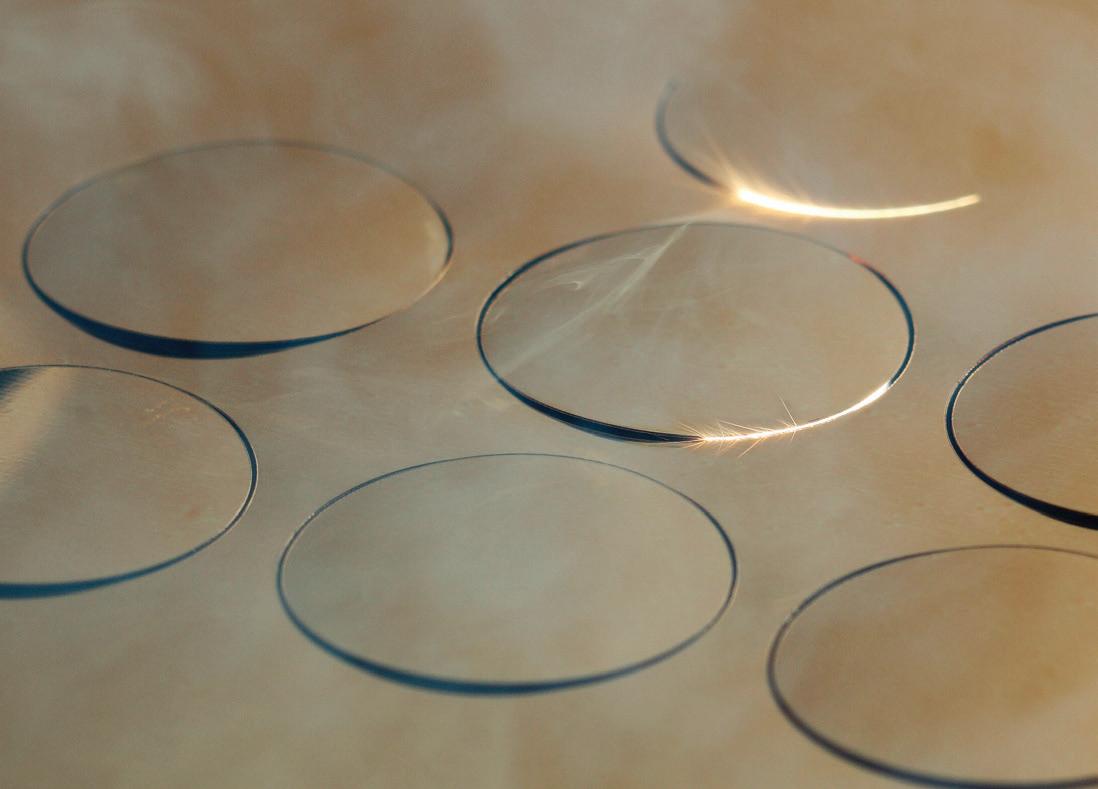
required for energy transition, but the report says this must be complemented by concessional financing as well as up-front public investments in grid development and energy storage and backup capacity.
However, the report warned that private financial flows to low-income countries “pale in comparison” to both their needs for financing for climate change mitigation and adaptation and the trillions of dollars in resources the private sector manages.
The report said total private financial flows (including both those for climate-related and those for non-climate-related activities) have averaged only $12 billion per year for low-income countries and $800 billion for middle-income countries over the past five years.
The report warned: “The current decade will be decisive. The diminishing window of opportunity to act requires that all countries make a concerted push to accelerate a just energy transition and that the international community make a concerted effort to provide the necessary support.”
COVER STORY: CASHING IN ON THE BESS BONANZA www.batteriesinternational.com Batteries International • Spring 2023 • 51
Learn more at... https://novantaphotonics.com/ application/precision-processing/ Perform high precision, repeatable tasks for electrodes, cells, and battery packs with digitally controlled laser sources, beam steering components and tailored scanning heads for OEMs and system architects.
Special purpose acquisition companies have proved popular in the US and could become more common in Europe’s capital markets — providing a potential financial boost for the energy storage sector. Jack Mason-Jebb, corporate solicitor, and Brad Isaac, corporate partner at European law firm Fieldfisher, assess the options.
Blank-cheque deals fuel SPAC boom investments
SPACs shot to prominence in 2020 due to their popularity in the US tech sector.
They have also been enthusiastically embraced (albeit to a far more modest extent) by the energy industry, specifically for renewable power, clean-tech, hydrogen, energy storage, EV charging and battery technologies — and in more limited cases for conventional power and oil and gas businesses.
Although there is nothing particular about SPACs that lend them to energy company floats, they have been one of many channels through which capital has flowed to the clean energy sector at a time when investors are motivated by commercial opportunities to tackle climate change through energy transition solutions.
In the energy sector, regardless of
WHAT ARE SPACS?
SPACs, in their current form, have been around since at least the early 1990s.
Often referred to as ‘blank-cheque’ companies, they are empty cash shells with no business operation, created with the sole purpose of holding investors’ cash and listing on a stock exchange, with the objective of acquiring a company or asset.
SPACs are formed by a sponsor, or group of sponsors, consisting of a management team who will seek a private business to purchase.
Private companies that are acquired by/merged with SPACs become publicly-listed and the SPAC relinquishes its acquisition vehicle status (known as ‘de-SPACing’).
If the acquired company trades well and its share price increases, investors receive a return on their investment.
Although SPACs do not usually have a specific target in mind at the time of listing, the sponsors typically have industry-specific knowledge and will target businesses in these industries.

As part of the acquisition, the SPAC’s sponsors will often join the acquired business’s management, and may serve on the board of the public company.
Once listed, SPACs typically have two years in which to acquire a private business, or they must return the money to their investors.
COVER STORY: CASHING IN ON THE BESS BONANZA 52 • Batteries International Spring 2023 www.batteriesinternational.com
Tried and tested Improved inside
Our genuine system - your first choice
• Highest quality
• Constant improvement
• Excellent performance
• Reliable service
Over 40 years of developing and perfecting battery filling products allow us to provide you with the most reliable system focusing on innovation and usability – a valuable contribution to an extended battery lifetime.

batterie füllungs systeme GmbH info@bfsgmbh.de Mitterweg 9/11 | 85232 Bergkirchen | Germany bfsgmbh.de | +49 8131 36400
bfs

MEET US AT BOOTH #19


SPACS: THE EUROPEAN PERSPECTIVE
Europe’s capital markets have been largely sceptical of these vehicles and to date European regulators have resisted emulating the enthusiasm in the US for SPACs — although there are signs that this is beginning to change.
FRANCE
As of April 2021, France’s Euronext Exchange had only seen two SPAC listings.
However, the Autorité des marchés financiers, the French financial markets authority, issued a statement that April clarifying that the professional segment of Paris’s regulated market was “a suitable listing place for SPACs, which, in their initial phase, mainly target such qualified investors”.

The AMF also noted that it had seen a significant increase in the number of SPACs preparing their listings on the Paris stock exchange since the start of 2021 and said the French legal framework and regulatory requirements were equipped to welcome a SPAC listing in Paris, while providing appropriate investor protection.
ITALY

Regulators have also indicated their interest in seeing more domestic SPAC listings, although the effectiveness of such financial vehicles is undermined by the difficulties in finding appropriate targets and Italy’s complicated process for approving business combinations.
GERMANY

The Frankfurt Stock Exchange has seen a modest number of SPAC listings over the past decade and is now facing calls to encourage more to join its markets, encouraged by comparisons between the Frankfurt Exchange’s SPAC structure and the structure used for such companies on the New York Stock Exchange.
THE NETHERLANDS
The Netherlands is most hotly tipped to emerge as the European capital for SPAC listings.
Like Frankfurt, Amsterdam’s stock market (the Euronext Amsterdam) bears comparison with the NYSE in its treatment of SPACs.
Unlike most other European jurisdictions, Dutch law does not have rules that apply only to SPACs, and allows further flexibility to entities formed as a BV — a private limited company.

Investors in Amsterdam-listed SPACs can exercise redemption rights at ease, and also remove their money in the SPAC if they do not like the proposed target chosen for the merger.
Euronext Amsterdam also has earned a reputation as a European home for many international and technology-focused companies and may be a more natural venue than London for renewable energy and clean-tech related growth companies. UK
In the UK, which had not previously had a listing regime designed to cater for SPACs, the Financial Conduct Authority implemented changes in August 2021 to permit listing.

A minimum of £100 million ($125 million) must be raised when a SPAC’s shares are initially listed.
The FCA’s initial consultation had proposed a minimum threshold of £200 million, but most respondents felt this figure was too high and that £100 million better reflected the size of SPACs likely to be seen in the UK and European markets.
SPACs are also required to disclose a description of the target business, links to all relevant public information on the target company, material terms of the proposed transaction and an indication of how the SPAC has, or will, assess and value the identified target.
regulatory hurdles, in the right circumstances SPACs can offer a useful way for small and growing energy companies to achieve a public listing as an alternative to an IPO.
Energy companies with a technology aspect to their business or a focus on renewable energy may be best placed to take advantage on the SPAC boom.
Why have SPACs become so popular? The answer — low interest rates and cheap debt.
At times of low interest rates, investors often look to equities for returns. Low interest rates also make it cheaper to raise debt for M&A deals.
When fiscal stimulus measures from central banks flood markets with cash, this encourages private companies to make a dash for public markets to take advantage of the available capital.
SPACs can offer a quicker, cheaper route to the public markets than a traditional IPO. Consequently, they appeal to early-stage businesses with growth potential in need of fresh liquidity.
The start-up culture that emerged from the 2008-2009 financial crisis created a huge choice of potential targets for acquirers.
The management teams of many of such businesses, having built them up over the past decade, are now looking for exit strategies.
One of the principal benefits of SPACs is that they do not have to comply with the tougher listing rules that apply to traditional IPOs.
Floating a company on a major stock exchange is typically a lengthy process that requires a business, with the help of financial and legal advisers, to draw up a detailed prospectus or admission document designed to give potential investors as much information as possible about its operations.
For energy companies, especially those with novel technologies or complicated business models, this can be a long and complicated part of the listing procedure.
While this rigorous practice is designed to prevent companies from providing incomplete or mislead-
COVER STORY: CASHING IN ON THE BESS BONANZA 56 • Batteries International Spring 2023 www.batteriesinternational.com
SPACs can offer a quicker, cheaper route to the public markets than a traditional IPO
ing information that could harm the interests of investors, management teams may regard IPO requirements as overly onerous and expensive when weighed against the benefits of a listing.
More financially attractive to founders
Another draw of SPACs versus traditional IPOs is that company founders get to keep or redeploy a greater share of the IPO rewards, rather than paying significant shares of the listing proceeds to banks.
Investment banks can expect to receive between 5% and 10% of IPO proceeds through underwriting fees alone, and legal and accounting costs incurred through due diligence further eat into companies’ finances.
By opting for a less expensive route to market via a SPAC, companies can choose to channel the money they save into, for example, marketing or research and development for future growth.
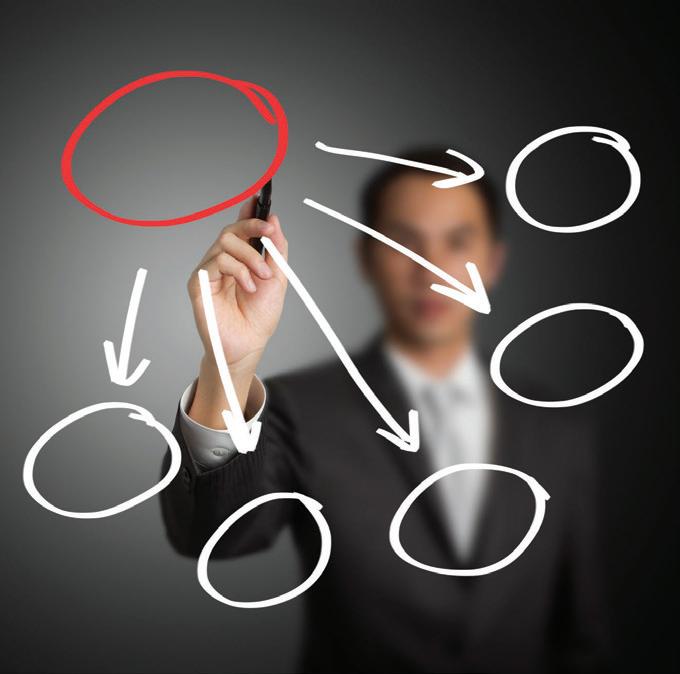
For smaller companies seeking to access the public equity markets, where underwriting the fundraising is much less common, listing via a SPAC de-risks the potential for the fundraising to fail.
The company and the SPAC can also agree a valuation for the business upfront, rather than have it determined — effectively priced — through the IPO marketing process.
A SPAC listing, particularly merging with an entity with the proceeds of a previous funding round, is therefore an attractive prospect to early stage, pre-revenue companies.
Reversing into a cash shell or investing company is already a popular way for exploration and appraisal companies in the natural resources sector to come to market.
Less scrutiny from the media
IPOs often receive close media scrutiny, from the publication of the intention to float right through to first day of dealings.
Media coverage can be desirable and useful, but it can also be negative and unhelpful, particularly if the company looking to float is a complicated energy business whose proposition or target market is difficult to sell to the press.
By contrast, SPACs can make acquisitions and bring companies to market relatively quickly and quietly.
Among the main concerns about
SPACs do not usually have a specific target in mind at the time of listing, the sponsors typically have industry-specific knowledge and will target businesses in these industries
SPACs is that they can be riskier for investors.
Unlike IPOs, where a company’s business proposition and valuation are scrutinized through investor presentations and verification of the admission document by legal and financial advisers before it floats, such detailed examination is largely absent in SPAC mergers.
Protection of retail investors is a key concern for institutional investors and financial market regulators, and SPACs are considered particularly risky because investors usually decide to invest in the SPAC based on little more than the sponsors’ reputation and a hope that they will choose a successful target.
But concerns have been raised over the transparency around sponsor compensation and incentives for insiders and the sustainability of valuations given to pre-revenue companies during acquisition frenzies.
In September 2020, the US Securities and Exchange Commission indicated that it planned to enhance
disclosure and transparency requirements for SPACs, following regulatory concerns over recent fundraisings.
The SEC has issued various further statements covering a range of SPACrelated issues, including commentary on celebrity endorsements, what it considers to be misunderstandings about liability risks involved in de-SPAC transactions and possible accounting and financial reporting changes for SPACs.
Isaac told Batteries International in May SPACs had become popular as a result of low interest rates and fiscal stimulus measures, although there had been a slowdown of SPAC listings from 2022 to the present.
“Clearly this has changed in the last year with central banks increasing interest rates to counter high inflation.
“What we are seeing now are a lot of the SPACs which listed in the boom in 2020 and 2021 under pressure to complete an acquisition in order to de-SPAC before investors seek a return of their initial investments.”
COVER STORY: CASHING IN ON THE BESS BONANZA www.batteriesinternational.com Batteries International • Spring 2023 • 57
US cleaning up in capital boost for energy tech
As of March 31, more than $150 billion in capital investment has been announced for utility-scale clean energy projects and manufacturing facilities in the US, since incentives under the Inflation Reduction Act were signed into law last August, analysis by the American Clean Power Association shows.
This is equivalent to five years of American clean energy investment, surpassing total investment into US clean power projects commissioned between 2017-2021.
American Clean Power’s Clean Energy Investing in America report details several other landmark achievements for the industry, including announcements of 47 new or expanded utility-scale clean energy manufacturing facilities.
ACP said clean energy had clearly
started to “transform the make-up of American manufacturing and investment”.
Since the Inflation Reduction Act was passed, the ACP said signs of rapid growth for maturing American clean energy industries are emerging.
“Plans for an unprecedented amount of new solar, battery, and offshore wind plants are being drawn and developed,” the report said.
“The new incentives offer companies a significant opportunity to invest in new utility-scale wind, solar, and
storage projects and manufacturing facilities, while passing on savings to American consumers.”
However, the ACP urged the Biden administration and Congress to continue improving trade policies, support next-generation technologies, finalize effective tax implementation and work to enact “commonsense permitting reform”.
Ahmed Maqsood, a banker on the energy team at Société Générale in New York, says: “Battery storage is often an overlooked but nonetheless

COVER STORY: CASHING IN ON THE BESS BONANZA 58 • Batteries International Spring 2023 www.batteriesinternational.com
A surge in batteries and related project investments is underway across the US, but battery storage projects worldwide are increasingly attracting the finances needed to power the clean energy transition.
“Simply put, as states across the US continue to push forward with their renewable portfolio standards, the demand for BESS will accelerate exponentially to provide replacement capacity value and grid stability”
critical component of the energy transition. “Simply put, as states across the US continue to push forward with their renewable portfolio standards, the demand for BESS will accelerate exponentially to provide replacement capacity value and grid stability.”
Société Générale acted as a coordinating lead arranger and green loan structuring bank for the $98.9 million financing to support the construction and operations of a BESS portfolio in Southern California.
Hecate Grid, a joint venture between Hecate Energy and InfraRed Capital Partners, is in the process of completing the construction of the four standalone BESS units battery energy storage assets in Southern California.
The projects comprise a total portfolio of 290MWh which, as of April 4, one was operational and three were under construction.
UK-based retail and commercial bank NatWest says that the UK and Europe are in the midst of an energy transition journey. NatWest says battery storage is a growing, fastevolving market as BESS assets are expected to be critical to meet the energy transition and the bank has committed to provide an additional £100 billion ($126 billion) of climate and sustainable funding and financing between 1 July 2021 and the end of 2025.
This includes financing to the BESS sector where NatWest has arranged, structured and advised multiple first of their kind financings across the full spectrum of tenors, revenue models and buildout strategies to support the rollout of BESS assets.
Looking to the future Jacob Lloyd, head of NatWest’s specialist asset finance, is optimistic about the growth of the BESS market and lenders’ potential to contribute to progress towards net zero through deploying more capital.
“The opportunities are fast flowing across all of Europe. And they don’t seem to be slowing down.”
Developing economies
As of February 2023, the World Bank’s Energy Sector Management Assistance Program (ESMAP) has helped to attract public and private financing to the total of $725 million in Burkina Faso, Ethiopia, Maldives, Sierra Leone, Tanzania, Ukraine, and Western Africa.
ESMAP has to date supported 14 World Bank lending projects including six mini-grid projects to boost
CHINA’S AMBITIOUS TARGETS
Manuela Ferror, the World Bank’s regional VP for East Asia and Pacific, has said China now requires less energy, less minerals, and less water than it did just 10 years ago to power growth.
But to achieve the ambitious goals that China has set for itself to become carbon neutral by 2060, China needs to do more and to start sooner.
Ferror told the World Bank Economic Summit of China Development Forum 2023 in April that battery storage is part of the solution to China “catalyzing climate action to unlock new sources of growth, new sources of job creation and new sources of innovation”.
Many low-carbon technologies, including wind and battery storage, exhibit increasing returns to scale in innovation, in manufacturing, and in operation, Ferror said.
“This offers China a comparative advantage relative to other smaller countries. The progressive deployment of low-carbon technologies in China can push down prices overall, reducing
abatement costs. And that is achievable because of its scale.”

According to the World Bank, China accounted for 24% of global energy R&D spending in 2019.
Meanwhile, Ferror said start-ups in the country have attracted more than a third of global early-stage energy venture capital over the past five years alone.
Growth in climate change-related patents has also accelerated in China, especially in low-carbon information and communications technology, in buildings, and solar power.
However, Ferror said low-carbon patenting accounts for only 5% of all patenting inventions, “leaving room for China to catch up to advanced countries where that share is higher”.
From a historical perspective, China’s innovation policy has been particularly successful in driving competition that reduces the manufacturing costs of existing technologies, for example, wind and solar energy and energy storage, Ferror said.
COVER STORY: CASHING IN ON THE BESS BONANZA www.batteriesinternational.com Batteries International • Spring 2023 • 59
“The progressive deployment of low-carbon technologies in China can push down prices overall, reducing abatement costs. And that is achievable because of its scale.”
the take-up of renewable energy and increasing battery storage capacity by 2,527MWh.
The initiative also supports capacity building and training to clients involved in ESS project and mentors women in the energy storage industry.
ESMAP’s Energy Storage Program — an international partnership between the World Bank and 43 other entities — has also developed an energy storage sizing app.
This can be used by countries to
get a preliminary assessment of energy storage sizing requirements and to project the cost of hybrid solar PV and ESS, using storage for smoothing and shifting applications.
The program’s international partners include government departments, academia and multilateral banks such as the European Bank for Reconstruction and Development, Islamic Development Bank and bodies such as the European Association for Storage of Energy, the Korean Battery Industry
Association and the China Energy Storage Alliance.
The World Bank-administered ESMAP trust fund provided $7.4 million in funding for the Energy Storage Program in fiscal 2021-2022 and the program’s concessional financing has helped to unlock a further $276 million through the multilateral Climate Investment Fund and the Green Climate Fund — which is party to the UN Framework Convention on Climate Change.
government in 2021 has already led to a series of reforms around mining that have begun to yield some successes in attracting inward investment and expanding production, the bank says.
In Africa, the World Bank says that at a time of energy transition and rising demand for metals and minerals, resource-rich governments have an opportunity to better use natural resources to finance public programs, diversify economies and expand access to energy.
According to the latest Africa’s Pulse, the bank’s April 2023 economic update for Sub-Saharan Africa, countries could potentially more than double the average revenues that they currently collect from natural resources.

While the global low-carbon transition will eventually lead to significant declines in demand for Africa’s oil, gas, and coal resources there may be a marked increase in the demand for the minerals required for the clean energy transition — such as lithium, cobalt, copper, platinum, and manganese, many of which are abundant across Africa and
used for batteries, EVs and other technologies.
The bank says tapping these fiscal resources in the form of royalties and taxes, while continuing to attract private sector investment, requires the right kinds of policies, reforms, and good governance.
According to data compiled last year by the International Energy Agency, Zimbabwe now has one of the 10 largest reserves of lithium in the world, while other countries, such as Namibia, have started building lithium mines.
South Africa is the world’s largest producer of manganese and the Democratic Republic of Congo is home to nearly 70% of the global supply of the cobalt used in lithium ion batteries.
Madagascar, Mozambique and Tanzania are among the 10 countries with the largest graphite deposits.
Zambia’s election of a new
Zambian government revenues from mining are also on the rise. The country also made a marked shift toward regional cooperation when it signed a memorandum of understanding agreement with the DRC and the US to develop resources found in both nations to manufacture batteries (see also Batteries International issue #125). The bank says countries in the region, most of which face infrastructure and capital constraints, should now be looking to the African Continental Free Trade Area (AfCFTA) to collectively build regional clean energy value chains.
AfCFTA is a key avenue for building clean energy value chains regionally, the bank says. It brings together 54 African countries with a total population of more than one billion people and (based on 2020 bank data) a combined GDP of more than $3.4 trillion.
“AfCFTA offers an unprecedented opportunity to develop the mineto-market value chain within the continent.”
World Bank senior economist James Cust said: “Rapid global decarbonization will bring significant economic opportunities to Africa. Metals and minerals will be needed in larger quantities for low-carbon technologies like batteries and with the right policies could boost fiscal revenues, increase opportunities for regional value chains that create jobs, and accelerate economic transformation.”
COVER STORY: CASHING IN ON THE BESS BONANZA 60 • Batteries International Spring 2023 www.batteriesinternational.com
AFRICA: OPENING UP THE CONTINENT



Bringing the industry together www.batteriesinternational.com To submit features, advertorials and artwork contact Jade: jade@batteriesinternational.com The Battery World Series Batteries International is exploring how India is set to become the new world battery superpower. Published by India, Asia’s next regional superpower, is about to challenge China’s supremacy in economic growth, future investment and cutting edge energy storage technology and manufacture. Read more about, and be featured in, Batteries International’s special publication in our Battery World Series coming this year. Scan this qr code to contact Jade INDIA
The price of failure won’t come cheap — and that’s what lies ahead
Perhaps a better title for Robert Bryce’s keynote presentation at the BCI convention might have been: “The Energy Transition that Cannot Succeed”.
Bryce, who did not take any position about CO2 levels and global warning and climate change put any such views to one side and presented two dimensions into his talk. The first would be the moral/political dimension about how the energy transition — the move from fossil fuels to renewable power
generations, could mostly occur in rich wealthy OECD nations.
The argument, at its most simplistic, is that what emerging market family would think in the longer term that essentials for their family, be they warmth for the home or just plain electricity should be curtailed against a yetto-be seen climate emergency.

More practically, however Bryce systematically knocked down all the arguments showing the inevitability of the
great energy transition and the world shift into renewables was unrealistic from various points of view.
Most particularly Bryce looked at the numbers for what is needed to happen from leading market data and then incorporated — see selection of slides published below that summarize highlights of Bryce’s presentation.
Unmissable! Check out Bryce’s articles and podcasts at: www.robertbryce.com
COVER STORY: CASHING IN ON THE BESS BONANZA 62 • Batteries International Spring 2023 www.batteriesinternational.com
Biden’s Zero-Carbon Grid Needs 2,700 TWh/yr Of New Zero-C Juice by 2035. From Where Will It Come? Source: BP. Robert Bryce 2021 Electricity Generation, Terawatt-hours 2,800 2,673 1,862 1,032 384 165 Global Nuclear US Coal/Nat Gas Global Wind Global Solar US Wind US Solar Shares Of Global Primary Energy, 1985 & 2021, After >$2T Spent On Wind & Solar Robert Bryce Source: BP https://www.mdpi.com/1996-1073/13/18/4839 5% 2021 Hydrocarbons Wind & solar Hydro, nuclear, & biomass 1985 Hydrocarbons Wind & solar Hydro, nuclear, & biomass 88% 83% 490 EJ 266 EJ 27 EJ 224 EJ increase in HC In 2021, US Hydrocarbon Use Grew 5.7x Faster than Wind & Solar Robert Bryce Sources:BP Change, EJ per year -0.2 1.4 0.7 4 Wind + Solar Gas + Oil + Coal 2.8 All-Renewable Schemes Require Massive Increases in High-Voltage Transmission Robert Bryce ● NREL: 90% renewable electricity requires doubling HV transmission ● US has 240,000 miles of HV transmission (230kV and up) ● From 2008 to 2021, US built 1,700 miles/year of HV transmission Sources: NREL, C Three Group Shares of US Primary Energy, 1985 & 2021, After >$500B Spent on Wind & Solar Robert Bryce Sources:BP, https://www.nationalreview.com/2022/08/are-green-pet-projects-delaying-the-next-energy-breakthrough/ 1985 Hydrocarbons Wind & solar Hydro, nuclear, & biomass 90% 2021 Hydrocarbons Wind & solar Hydro, nuclear, & biomass 81% 5 EJ 6% 65 EJ 76 EJ 9 EJ increase in HC In 2022, US Hydrocarbon Use Grew 55% Faster Than Wind & Solar Robert Bryce Sources:BP Change, EJ per year Wind + Solar Coal + Oil + Gas -1 -0.5 0 0.5 1 1.5 2 2.5 1.5 0.9 1.4 -0.8 0.7
Acclaimed broadcaster and journalist Robert Bryce gave a keynote address to this year’s annual BCI convention entitled ‘A Sober Look at the Energy Transition and the Future of Hydrocarbons’. Here we review his presentation.
What About Affordability?

● The average household income for EV buyers is about $140,000 per year. That’s twice the US average
● Average price for a new EV last year was about $66,000 “well above the industry average and more aligned with luxury prices than mainstream prices.”
● “Price is the number one barrier to EV adoption...We should be getting more affordable EVs, we're promised that by the automakers, but they're not here right now.”




Just Stop Oil? If Oil Didn’t Exist, We’d
To Invent It

...And Near-Total Dependence On China

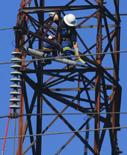
COVER STORY: CASHING IN ON THE BESS BONANZA www.batteriesinternational.com Batteries International • Spring 2023 • 63 No Transition Without Transmission: Years Needed For Grid Buildout At Current Growth Rate Robert Bryce “...we need to expand electricity transmission systems by 60% by 2030, and may need to triple it by 2050 to meet the country’s increase in renewable generation and expanding electrification needs.” Department of Energy, May 10, 2022 Sources: C Three Group, DOE, https://www.energy.gov/articles/biden-administration-launches-25-billion-fund-modernize-and-expand-capacity-americas-power 282 140 84 To triple To double Expand by 60% Years needed EVs Will Increase Electricity Demand. Who Will Pay For Grid Upgrades? Source: EPRI, Reuters Robert Bryce ● EPRI: One Amazon depot with 200 EV trucks = 5 MW of new load ● Boston Consulting Group: A model utility with 2 to 3 million customers will need to invest between $1,700 and $5,800 in grid upgrades per EV through 2030 Alt-Energy Requires Staggering Amounts Of Metals, Minerals, & Magnets Source: IEA, https://iea.blob.core.windows.net/assets/ffd2a83b-8c30-4e9d-980a-52b6d9a86fdc/TheRoleofCriticalMineralsinCleanEnergyTransitions.pdf 6. Robert Bryce Elon Musk’s “Master Plan Part 3: Sustainable Energy for All of Earth,” April 5: Robert Bryce Sources: https://www.tesla.com/ns_videos/Tesla-Master-Plan-Part-3.pdf Elon’s Terrible, Horrible, No Good, Very Bad Battery Math Source: Tesla, https://insideevs.com/news/531057/tesla-gigafactory-nevada-1000000th-battery/ Robert Bryce Gigawatt-hours of battery storage At TSLA’s current production rate, producing 240 TWh of storage will take 960 years! 240,000 250 Estimated storage needed for Master Plan Part 3 Total existing Gigafactory output per year
Source: https://www.axios.com/2022/08/01/electric-vehicle-adoption-barriers Robert Bryce
Michelle
Automotive
Krebs, Cox
Have
Energy Density Of Gasoline Is 40x That Of Li-ion Sources: Donald Sadoway, MIT;; David J.C. MacKay, “Without the Hot Air,” https://insideevs.com/news/598656/tesla-4680-battery-cell-specs/ Watt-hours per kilogram 13,000 12,700 8,000 300 35 Gasoline Diesel fuel Ethanol Tesla Li-ion battery Lead-acid battery Robert Bryce
Source: IEA, https://iea.blob.core.windows.net/assets/ffd2a83b-8c30-4e9d-980a-52b6d9a86fdc/TheRoleofCriticalMineralsinCleanEnergyTransitions.pdf 31. Robert Bryce Shares Of Global Processing Market Details, Details, Details... Robert Bryce Sources: EIA, https://insideevs.com/news/531057/tesla-gigafactory-nevada-1000000th-battery Who Will Handle Those Billions Of Waste Li-ion Batteries? Recycling Rates For Common Consumer Items Sources: https://www.afandpa.org/news/2021/recycling-during-pandemic-2020-paper-and-cardboard-recycling-rates-are https://www.waste360.com/e-waste/report-recycling-rate-leadbatteries- ; https://www.epa.gov/facts-and-figures-about-materials- -and-recycling/glass-material-specific-data BBC, https://www.bbc.com/news/business-56574779 Recycling Today, https://www.recyclingtoday.com/article/aluminum- -recycled-twice-plastic-bottles/ Robert Bryce 99% 66% 46% 31% 5% Lead acid Paper Aluminum cans Glass bottles Li-ion
PENOX Red Lead grade
+ EFB / AGM Battery
Higher paste density
Higher porosity in the paste
Lower internal resistance
Reduced heat evolution
Better active mass utilisation
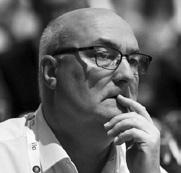
Pass cycle life performance tests


+ Industrial Battery
Right crystal structure in the paste
Higher initial capacity
Better long life stability & capacity
+ Formation energy & time savings




HIGH GRADE RED LEAD + ONLY ONE GLOBAL PRODUCER
Antony Parselle, production and design
Juanita Anderson, business development manager
Kevin Desmond, historian
John Shepherd, editor
Mike Halls, editor-in-chief
Karen Hampton, publisher
Meet the team Bringing the industry together www.batteriesinternational.com PUBLISHER EDITOR DIGITAL MEDIA OPPORTUNITIES Karen Hampton Mike Halls Jade Beevor Tel: +44 (0) 7792 852 337 +44 (0) 7977 016 918 +44 (0)1243 782 275 karen@batteriesinternational.com editor@batteriesinternational.com jade@batteriesinternational.com 64 • Batteries International Spring 2023 www.batteriesinternational.com
Jade Beevor, advertising director
Super-charged growth in battery demand in conference spotlight
Pillot says highlights of this year’s conference will be the focus on the growth of demand for batteries in Europe and worldwide — and the need for security of materials supply.
“Most of the companies involved in the construction of gigafactories will be represented,” he says.
These and keynote speakers will include the CEO of Automated Cells Company Yann Vincent, Verkor CEO Benoit Lemaignan, the VP of operational excellence at Northvolt Luc Hovan and Envision’s Europe MD Maher Chebo.
Also attending will be Gery Bonduelle, EVP of sales and marketing for Freyr Battery, CATL’s general manager for France Jean-Baptiste Zalmanski, Jeff Dahn — whose research group at Dalhousie University focuses on lithium ion battery research and works exclusively with Tesla — and Jean Marie Tarascon, who is chair of solid-state chemistry and energy at the Collège de France.
The main topic of discussion will as usual center around lithium ion batteries for automotive applications but, as always at the Batteries Event, Pillot said other technologies and applications will be included.
This year’s conference will feature a dedicated session on lead acid, zinc, sulfur and solid-state batteries and topics will be as varied as energy storage systems, aviation, e-buses and space applications.
Avicenne’s analytics continue to look at the role of lead in the automo-
tive and energy storage markets.
“Lead acid batteries of course can have advantages over lithium ion in different applications and can cost less. Their record on safety and 99% recycling ability are also factors.
“Lead batteries will still be there in the 2030s.”
However, Pillot says it is important that Avicenne also charts the switch from lead acid to lithium ion batteries in applications that were historically lead, including forklifts, e-bikes in China, UPS systems and in telecoms.
For Pillot, the stand-out development involving other chemistries in recent years is, “without surprise”, increasing R&D into solid-state batteries.
“But there is also strong interest in Na ion, high-manganese cathodes (outside China) and lithium manganese iron phosphate in China.”
Concern in the European market over lucrative incentives being offered to battery manufacturers in the US and Asia is also expected to be a topic of discussion as delegates network and chat on the sidelines of the event.
For Pillot, there are three key geopolitical approaches impacting batteries that are influencing markets.
China’s leaders can introduce new rules and incentives relatively quickly — although they can change them again quickly too.
While in Europe it takes quite some time for the European Commission to introduce legislation, but when the rules are in place they are there for a long while, providing stability, he says.
In the US too, rules can change quickly (as seen by the Biden administration’s Inflation Reduction Act) — “but what will happen to that if there is a change of administration at the next general election?
“However, for the moment it is clear that it is more attractive to invest in the US than in Europe.”
Sustaining the battery materials supply chain, against a background of increasing competition among nations for resources will also be in the conference spotlight.
“Of course we all need to keep an eye on the battery value chain,” Pillot says.

“Raw materials account for 70% of battery costs, so we have to. And as we saw for the first time in 2022, the price of lithium ion batteries increased because of a rise in metal costs.”
That in turn further increases the importance of recycling on a longterm basis, which Pillot says will also come under scrutiny.
“In our forecast, we see a plateau for the lithium ion battery market in 2040-2045 depending on the countries involved. That means that if we recycle let’s say 90% of the battery, recycling could cover the lion’s share of material needs.”
The variety of issues covered in depth has been key to the Batteries Event’s longevity and its ability to garner ever-increasing interest, says Pillot.
In 2020, the event attracted 200 attendees, 60 international speakers and 30 booths.
Last year, the number of attendees rose to 780 — with the opportunity to hear from 90 international speakers and visit 70 booths.
This year’s event to be held in Lyon, France, from October 10-13, is on course to expand further still.
As Batteries International went to press, in excess of 1,000 were expected to attend, together with more than 130 international speakers and over 90 booths.

INTERVIEW: CHRISTOPHE PILLOT
The Batteries Event has long been a mainstay on the industry’s calendar and now, with its 25th outing just a few months away, Avicenne Energy director Christophe Pillot looks ahead to this year’s program.
www.batteriesinternational.com Batteries International • Spring 2023 • 65
Pillot: “For the moment it is clear that it is more attractive to invest in the US than in Europe”
Batteries ‘investment block’ warning as regulators mount new assault on lead
Lead industry leaders have called for talks with the European Commission over proposals that would require lead metal to be listed on a chemicals authorization register.

The European Chemicals Agency (ECHA) said on April 12 it had officially submitted the proposals for lead and seven other substances to be added to its REACH (Registration, Evaluation, Authorisation and Restriction of Chemicals) list — indicating that the substance will eventually be substituted and can only be used in the meantime with specific permission from the Commission.
The fresh assault on the lead and lead batteries industry comes despite
warnings last year that such a move could trigger a batteries investment freeze and derail EU carbon reduction plans.
Responding to ECHA’s latest move, ILA regulatory affairs director Steve Binks said the Commission was being urged to reject the proposal — given that lead and products containing lead are already comprehensively regulated
through a range of EU legislation that protects workers and the environment.
“Lead is an essential raw material in which Europe is strategically autonomous and it supports a wide range of low-carbon technologies which are vital to delivering the European Green Deal’s low carbon objectives,” he said.
Binks said views expressed by Germany, included in the minutes of ECHA’s decision-making committee, “neatly summarize the position… that including lead metal in the REACH authorization list overlaps with and contradicts other regulations, including the new Batteries Regulation and the Restriction of Hazardous Substances Directive”.
REGULATION: NEW THREAT TO LEAD 66 • Batteries International • Spring 2023 www.batteriesinternational.com
Authorization listing for lead ‘will simply add unnecessary bureaucratic burden’
Photo: Rodolfo Clix/Pexels
The lead industry is under bureaucratic fire once again in the wake of fresh proposals to further tighten EU lead exposure levels — with damaging global implications for trade and the clean energy agenda
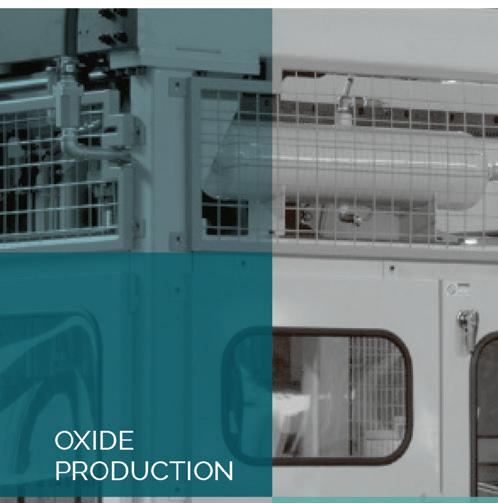



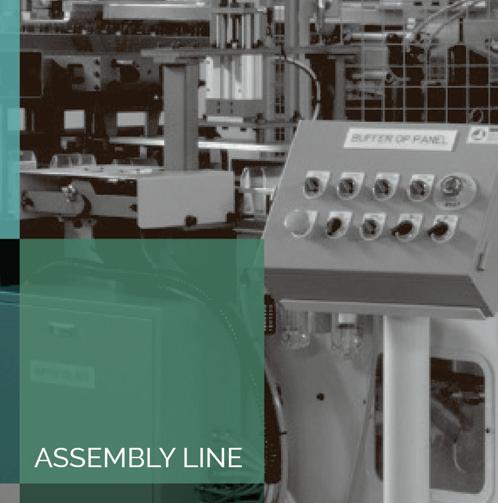
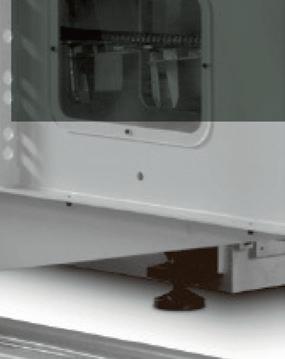



LOOKING FOR NEW EQUIPMENT? WE SPECIALISE IN HVIDSVAERMERVEJ 135 · DK-2610 ROEDOVRE · DENMARK · TEL +45 4453 4546 · E-MAIL:ACCURATE@ACCURATE.DK WWW.ACCURATE.DK MANUFACTURING We manufacture Machinery and Parts TECHNICAL TRADING Contracts, Logistics and Customerization CONSULTING We love to help with our expertise Supplier of first class equipment and services to the Lead Acid Battery Industry since 1950
In a joint statement with the Lead REACH Consortium, ILA said authorization listing for lead “will simply add unnecessary bureaucratic burden, block investment and is not the best option to improve risk management, stimulate faster substitution, or reduce exposure”.
The move would do little more than create uncertainty, which undermines
the financial viability of successful European companies, the groups said:
“It effectively reduces the productivity and competitiveness of successful EU value chains, potentially opening the door to non-EU competitors that will continue to use lead to manufacture products that still have a societal need.”
According to a study released to the
public in April 2022, the lead battery industry is worth an estimated €15 billion ($16 billion) of value added or gross domestic product a year to the European economy.
The report said the downstream industry activity driven by the use of lead batteries is worth €7.3 trillion of gross domestic product across retail, construction and healthcare.
ILA says move on exposure limit risks undermining fight against climate change
The REACH proposals are the latest hurdle to be place in front of the development of advanced batteries since February, when it emerged that the European Commission proposed to amend legislation impacting lead.
The Commission said it wanted to further lower the occupational exposure limit from 0.15 milligrams per cubic metre (0.15mg/m³) to 0.03mg/m³ and lower the biological limit value from 70 microgram per 100 millilitre of blood (70µg/100ml) to 15µg/100ml.
The proposal has to be discussed by both the European Parliament and the European Council (comprising the heads of government of each EU member state) and, if adopted, EU member states would have two years to transpose the directive into national law.
However, industry leaders said the move could rack up costs for primary metal producers and battery sector firms — and risk undermining EU climate goals.
The ILA has warned EU states could find it challenging to adopt the directive within that period — without having a major impact on European metal producers and foundries and the many downstream industry sectors supporting the EU’s Green Deal plans to become climate-neutral by 2050.
And given that most EU states’ national biological limit values currently exceed 40µg Pb /100ml blood, there are likely to be many hundreds of workers in Europe with a blood lead exceeding the 15µg Pb/100ml BLV specified in the proposal the ILA said.
“We think that some form of transitional measure must be considered
to give industry more time to adapt working practices,” the ILA said.
“The Commission has tried to quantify costs associated with meeting the biological limit value in its impact assessment but does not appear to have assessed the likely costs of achieving the occupational exposure limit.”
biological limit value for lead to better protect the wellbeing, health and safety of workers.
In the absence of EU-wide regulatory limits that reflect current scientific knowledge on health impacts of lead exposures, the ILA said that it, together with other industry associations, has encouraged continuous improvement in the management of occupational lead exposures through the establishment of industry guidelines that go beyond the requirements of existing EU workplace legislation.
The ILA said reducing the binding occupational exposure limit value (BOELV) from 0.15mg/m³ to 0.03mg/m³ was a significant change and may entail excessive costs for many companies as it would require modifications of production facility engineering controls.
“This is especially relevant to Europe’s primary metal producers that process metallic ores and who will face specific challenges.”
Given the Commission acknowledges the lack of any clear relationship between workplace air levels and employee internal dose (as measured by blood lead) the ILA said it believes establishing new BOELVs should be based primarily on socioeconomic and technical feasibility considerations and as such should not be any lower than the lowest national OEL (0.05mg/m³) currently in force in EU member states.
The ILA said it fully supports the principle of lowering the existing EU
The Commission proposes to amend two directives — for lead, the directive on the protection of workers from the risks related to exposure to carcinogens, mutagens and reprotoxic substances at work and for lead and diisocyanates (a family of chemical building blocks mainly used to create polyurethanes), the directive on the protection of workers from the risks related to chemical agents at work.
On its reasoning for the new proposal, the Commission cited its own impact assessment estimating that currently 100,000 workers in the EU are exposed to lead at work.
The Commission claimed that lead accounts for around half of all occupational exposures to reprotoxic substances and that around 300 cases of ill-health occur annually in the EU due to past exposure to lead, although it did not publish details along with its proposal.
However, the Commission noted that workers can be exposed to lead due to its historical application in renovations, waste collection, recycling, and environmental remediation.
REGULATION: NEW THREAT TO LEAD 68 • Batteries International • Spring 2023 www.batteriesinternational.com
“The Commission does not appear to have assessed the likely costs of achieving the occupational exposure limit”



The future of battery production is in automated metrology technology

Lithium ion batteries can store energy efficiently for long periods of time, making this technology essential to many everyday devices, from mobile phones to electric vehicles.
Lithium ion cells are also the most common battery storage choice for grid operations today, supplying more than 90% of the world’s markets. In fact, 74% of the world’s mined lithium goes into battery production alone.
However, the available reserves of lithium that are required for battery manufacture are close to depletion, prompting the exploration of alternative battery chemistries that will be able to supplement or replace lithium in the near future.
Despite their advantages, many of these technologies cannot currently provide the required energy densities, compact form factor or affordability to rival lithium ion batteries, and some are also difficult to scale up for commercial production. This makes it ever more important to maximize the usage of available lithium stocks, and to reduce wastage as much as possible during the manufacturing process.
Making sense of the shortage
The reasons behind the lithium shortfall are multifaceted. First of all, contrary to what you may think, lithium is not a rare metal; it is simply buried deep in the Earth’s crust, making it hard to access.
New mines take many years to be brought online and environmental objectives are making it harder for companies to gain permission to explore potential new sites.
This means that, even though lithium is still plentiful in nature, new sources won’t be available for use in batteries for quite some time, creating a pressing need for technologies that will enhance process efficiencies and minimize the loss of existing raw
material during battery fabrication.
To understand how we got to the current state, we need to go back several years. Between 2017 and 2020, the prices of lithium and lithium compounds plummeted by around 60%, hitting an all-time low worldwide, largely in reaction to a supply glut and a lack of demand.
This sudden drawdown forced miners to cut back on their lithium extraction operations and call off the exploration of new mines, with the result that today only a few active mines are bringing new material into circulation. Exploration for new lithium mines is once again on the increase, but it will be years before they contribute to the current supply.
This issue is being compounded by the fact that EVs — from scooters to aeroplanes — are rapidly gaining in popularity.
Of course, EVs rely on large re-
chargeable batteries for their power, and these are almost all lithium ion based at the moment. This rapid surge of interest in EVs over the last couple of years is therefore draining the existing stocks of lithium, with the trend only set to continue as EVs become more affordable.
The reduced mining capacity caused by the low prices of a few years ago is now limiting the industry’s ability to supply battery manufacturers with the raw material they need to ramp up their production and meet the needs of the growing EV market.
The combination of depleted supplies and low mining capacity has inevitably led to lithium and its compounds becoming incredibly expensive since the start of 2021.
For example, lithium carbonate is now 10x the cost it was at the beginning of 2020, at around $72,155 per tonne, with lithium hydroxide prices
IN FOCUS: THERMO FISHER SCIENTIFIC 70 • Batteries International • Spring 2023 www.batteriesinternational.com
Christopher Burnett, senior applications manager at Thermo Fisher Scientific, highlights the value of automated measurement systems in helping to reduce lithium wastage.
The combination of depleted supplies and low mining capacity has inevitably led to lithium and its compounds becoming incredibly expensive since the start of 2021
Image 1: The end-to-end electrode coating process monitored and controlled at all stages.
sitting even higher at $75,000 per tonne.
This sudden price hike is proving challenging for many battery manufacturers, forcing them to cut the amount of raw material they purchase and thereby limiting the quantity of lithium ion batteries they can produce for the EV market.
Fortunately, there is some scope for recycling to address some of this gap between supply and demand. However, there are currently no wide-scale systems in place to collect and process scrap materials such as used lithium ion batteries.
The absence of an effective recycling infrastructure means that, eventually, much of the lithium originally mined out of the ground goes right back where it came from, but locked away in landfill.
This adds up to a tremendous amount of lithium wastage every year. Reversing this trend and rescuing material that has already been thrown away would contribute to a much more sustainable, circular economy.
Optimizing Li usage in battery production
Suitable and widely available alternatives to lithium ion batteries are still some way away and, with supply constraints looming, better management of existing resources is critical. Improving the efficiency of the battery manufacturing process in order to reduce lithium wastage is key.
In particular, coating variations during the electrode coating process can both be detrimental to battery performance and reduce product yield, leading to lithium wastage.
The safety, longevity and cost-effectiveness of lithium ion batteries are dependent on achieving consistent coating uniformity for the anode and cathode during the manufacturing process.
In-line metrology systems can be used to provide automated measurement of the electrode coating throughout the entire production process. (Image 1).
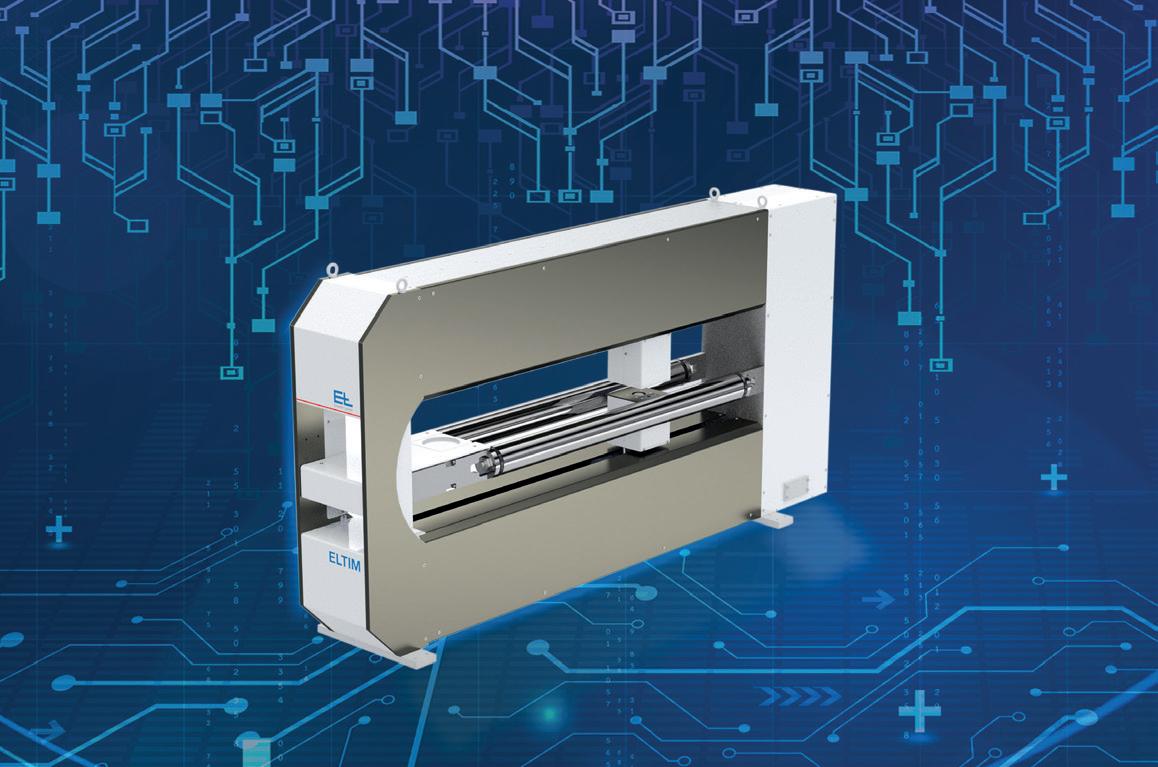
This non-contact, non-destructive measurement equipment enables man-
ufacturers to continuously monitor production through real-time analysis of coating uniformity, providing rapid detection of any defects. This allows issues to be identified as early as possible in the cell manufacturing process and traced back to their source, ensuring defective or out-of-specification material can be segregated before it is incorporated into the final product.
In-line metrology systems can be combined with automatic profile control (APC) to further reduce coating variability and raw material wastage through the elimination of human error.
Closing the loop between measurement and adjustment
Until recently, most optimization processes in battery production lines were performed manually, but this makes it difficult to regulate coating uniformity and reliably identify production line defects.
In-line coating measurement gauges represent a development in automated production, scanning moving reels of coated electrodes to monitor coating
IN FOCUS: THERMO FISHER SCIENTIFIC www.batteriesinternational.com Batteries International • Spring 2023 • 71
#STARTSMART erhardt-leimer.com WITH Measuring range basis weight 0 to 400 g/m² Tolerance accuracy < 0.5 % ULTRASOUND-BASED, RADIATION-FREE SENSOR ELTIM INLINE BASIS WEIGHT MEASUREMENT FIND OUT MORE
thickness in real-time to ensure that coating defects are detected. (Image 2).
Sensor selection is a key consideration when using in-line metrology during lithium ion battery manufacture.
A variety of sensor technologies are available for different applications, including beta and X-ray sensors for measuring coating weight during the
coating process and confocal laser sensors for measuring coating thickness during the calendering process.
Sensor quality is determined by factors such as resolution, precision and beam size, and is crucial for precisely and reliably measuring defects during electrode production.
Following the scanning stage, the next step is to feed the collected data back into the production process. This
helps to optimize the electrode coating procedure by modifying fabrication variables like slurry thickness or volume.
In manual workflows, sensor-generated data is made visible to machine operators, allowing them to make informed adjustments to the coating stage, whereas, in more advanced production lines, a feedback loop can be programmed to connect process measurement and control.
For example, electrode coating using automated slot-dies is controlled by thermal die bolts, which expand or reduce dispensing volumes based on downstream measurements. (Image 3).


Using APC algorithms to automatically fine-tune the thickness and uniformity of electrode coatings increases production speed and efficiency by eliminating common issues, such as high error frequency, delays, and raw material wastage.

This metrology solution also allows for data storage, recall and analysis, so that manufacturers can resolve future issues in production lines and keep up with the growing global demands for lithium ion batteries. (Image 4).
The outlook for the future
In 2020 it was calculated that lithium demand is on course to more than triple in the five years leading up to 2025, rising to a million tonnes and outpacing supply by an estimated 200,000 tonnes.
This spike is largely driven by the growing need for more EV and energy storage battery cells, as well as the global push towards carbon neutrality, with EVs expected to exceed 50% of total vehicle sales as early as 2030.
However, current mining operations cannot keep pace with this sudden uptick in demand due to a combination of factors, including lack of mine capacity and depleted reserves, which are helping to send the price of lithium sky-high.
Consequently, some manufacturers are now struggling to afford what lithium there is available on the market. There is also a lack of recycling, causing this precious element to be wasted in alarming quantities.
As a result, quickly and precisely detecting flaws in electrode coatings using in-line metrology solutions is becoming increasingly important for reducing the wastage of lithium and enhancing the efficiency and sustainability of battery manufacturing in the years to come.
IN FOCUS: THERMO FISHER SCIENTIFIC 72 • Batteries International • Spring 2023 www.batteriesinternational.com
Image 4: How the use of APC control during the electrode coating process improves production efficiency and achieves raw material savings.
Image 3: Automated slot-dies used in the electrode coating process.
Image 2: Example reporting capabilities available with an in-line metrology system, including specific displays for battery manufacturing









BCI Convention
Louisville, Kentucky • April 23-26, 2023
‘Overwhelming success’ say delegates — ‘and that’s despite the location’
This year’s BCI Convention proved to be a blow-out event for most delegates — with a record number in the low 600s — who praised the quality of the presentations and the variety and ingenuity of the organizers.


“They’ve done a blinder of a conference,” said one UK delegate. “I’ve been attending these events for years and it’s remarkable to see how it’s changed in recent years — the conntion has moved well away from being some kind of golf-buddy get-together for the North American battery fraternity.
“BCI is now flexing its muscles and is pushing, and very aggressively too, in showing lead batteries’ capabilities. I welcomed the Innovation Award when it was launched by Mark Thorsby a few years back and the recent Amplify Award and poster competition both introduced by Roger [Miksad] add to the greater sense that this is an industry on the move.”
Another delegate told Batteries International that he thought the intellectual content had been improving steadily as had the variety of presentations.




“There was a lateral approach behind much of the thinking behind the program,” he said. “The choice of Robert Bryce as a keynote speaker was inspired. Bryce is a fierce critic of the assumptions behind the energy transition and took many of the lala assumptions the energy storage industry and the government believe to task. Much of their numbers don’t stack up.
“I was impressed with the talk Chris [Pruitt, CEO of East Penn] gave at ELBC Lyons and Bryce just took all those arguments, expanded them to reach their logical conclusion.
“Comparing BCI to other conferences isn’t strictly fair — we are a worldwide industry but the nation does have its regional and regulatory concerns and these were dealt with well. Roger’s and Chris’s speeches in particular continue to show the value of BCI to its members.


“That said the wide variety of papers given (and not all were excellent) was a step in the right direction. We’ve all had too much of the same hooey recycled and recycled at other lead events.”
Every conference will have its detractors and this year’s convention
came under quite fierce criticism for the choice of location. This hadn’t been helped by a mass-shooting earlier in April at a bank a few blocks away from the convention hotel and visible from most hotel rooms.
“It didn’t feel safe walking out on the streets,” said one delegate. “There were lots of vagrants and panhandlers around and the conference hotel was right on the edge of a very depressed neighbourhood.”
Another exhibitor said she had been appalled on her first lunchtime seeing a man urinating in the street just one block away from the hotel. “Just walking a few blocks south towards the river to find a local bar we were constantly being approached for money,” she said. “There was an ugly atmosphere to the neighbourhood.”
The hotel was also viewed as very downbeat for a showcase convention with complaints about the lack of what some termed “a proper restaurant” and a Starbucks coffeeshop that seemed to be open or shut at whim. This reporter would also confirm that though the Marriott staff were excellent, the music in the lobby was so loud that on occasion it was difficult to talk to people.
EVENT REVIEW: BCI CONVENTION 74 • Batteries International • Spring 2023 www.batteriesinternational.com
SCENES FROM THE OPENING RECEPTION
Putting the praise and criticism to one side some of the activities at the convention are clearly well worth reporting.
The Innovation Award — see separate section to this report — helped kick off the first morning’s activities as did the Amplify award on the second day.
WGBI convenes
The president of Women in the Global Battery Industry Julie McClure spoke on the first day and later opened what was the group’s second meeting at a BCI convention in a network drinking reception.

As the group’s membership drive continues apace — now some 200 members and counting — McClure said the group was looking forward to welcoming new members onto its sub-committees to expand its program of activities. It was also revealed at a special networking reception for WGBI members that the group has already raised $75,000
THE BOURBON ROOM
What would a drinks reception in Kentucky be without an investigation of the healing properties of the state’s speciality drink — Bourbon whiskey. Cannily BCI provided a separate tasting room at the back of the reception hall where Bourbon amateurs could taste its subtleties and distinct flavours.

“I was blown away by the complexities on offer,” one whiskey delegate said. “There’s a huge array of nuances and taste that belong in the same leagues as single Scottish malts.”
in sponsorships. One new feature of the convention was the Poster Research Showcase, which aimed to turn the spotlight on undergraduate, graduate and postdoctoral level researchers and assistants involved in scientific work on lead and other battery types. Two other launch products are worth including here.
Diversification
The first was the first meeting at the convention of the Flow Battery Industry Group which had been launched the month before. The group is chaired by Scott Childers, VP of Essential Power at Stryten Energy. Other founding group members include CleanTech Strategies, CMBlu Energy, Invinity Energy Systems.
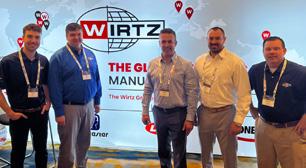

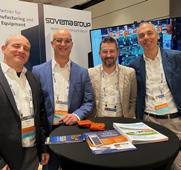
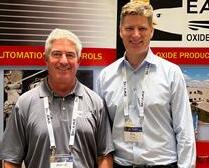
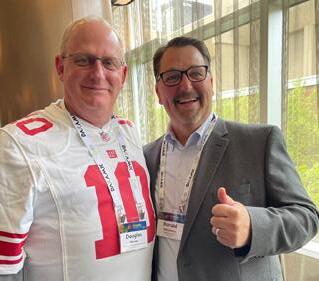
BCI said flow batteries are a natural fit with the association’s existing member services “given several key similarities and synergies between flow battery manufacturing and incumbent battery manufacturing technologies”. The group evolved from publicprivate partnership talks between BCI, a US national laboratory and an energy storage company. Membership in the industry group’s activities will be open to flow battery developers and

EVENT REVIEW: BCI CONVENTION www.batteriesinternational.com Batteries International • Spring 2023 • 75
THE EXHIBITION HALL: SHOWCASING THE FINEST ON OFFER
manufacturers, component suppliers, users, government and academic experts and others.
“This move is a significant one for BCI in general,” said one commentator. “There is not a single North American battery manufacturer that hasn’t been looking at producing lithium batteries these last 10 years and most have several products in their energy storage armoury.
“BCI is clearly moving with the times.”
Rebranding
The second launch product was the rebranding of BCI complete with a redesigned website, a new logo and tagline.
Announced with a fanfare — “the golden age of batteries is here” — BCI said: “Our overhauled website
Regulatory activities under the spotlight
consolidates all of the organization’s rich content and resources into one efficient site devoted to sustainable energy storage technologies.
“The effort merges BCI’s extensive catalogue of technical resources and the previously separate Essential Energy Everyday campaign devoted to battery thought leadership and education.
The new BCI website includes more
American industry at a competitive disadvantage to foreign imports.
Miksad took up many of Pruitt’s points.
Although the full title of his address — The BCI Regulatory and Advocacy Update — sounds a bit of a gloomy mouthful, it should really be recognized as something more akin to a Battery State of the Union speech. The picture Miksad painted was part positive, BCI has clearly been successful in many initiatives this year, but was also set in the context of a background of darkening regulatory landscape.
Two highlights from the first morning came from Chris Pruitt, chief executive of East Penn and freshly appointed chairman of BCI and Roger Miksad now president of the association.
Pruitt kicked off his address with a short review of the strengths of the lead battery from the recent economic impact report. “In 2021, our industry contributed to a staggering $32.9 billion our country’s economic wellbeing, including contributing $13.7 billion in GDP,” he said.
He then went on to point out the industry directly supports over 38,000 jobs and indirectly more than 121,000 jobs across 38 US states, that the industry pays wages that exceed those of many other industries. In terms of R&D some $113 million was spent in 2021.
He said BCI had been incredibly busy this past year, “working hard to represent the industry with multiple governmental efforts.

“BCI is taking the lead on significant regulatory proposals that have been on the horizon for the past few years and are now having their moment.”
Three of the most significant regulatory regimes at EPA and OSHA
for the lead battery are under active review, and BCI is playing a highly active role in representing BCI’s members’ interests. “Any one of these programs could have a significant impact on our industry and BCI is working hard to ensure that any new rules are based on sound science and are updated in a rational way to ensure industry can meet them while ensuring our workers and communities are properly protected from harmful exposures,” he said.
Pruitt welcomed the advocacy efforts on Capitol Hill saying that a strong lobbying team was in place to ensure, “the nation invest properly in supporting and growing strong domestic manufacturing industries — like the lead battery industry. While the nation is rightly focused on catching up with our foreign adversaries in manufacturing capacity for lithium batteries, it cannot leave the incumbent manufacturers high and dry.”
BCI successfully worked to support the introduction of the USA Batteries Act to eliminate the Superfund excise taxes on lead oxide, antimony and sulfuric acid — a tax that places an
However, he said ongoing engagement with those who shape the laws impacting the lead battery industry was bearing fruit and policymakers were increasingly aware of the importance of ensuring longstanding lead battery manufacturers are supported alongside newer chemistries on the market.
Miksad hailed BCI’s involvement in shaping the USA Batteries Act as being one of the association’s big successes.

The legislation, passed in 2021, removed what he described as pernicious taxes on substances used in lead battery manufacturing and which gave foreign manufacturers an unfair advantage on the cost of raw materials. BCI successfully organized a coalition of representatives, including Pennsylvania’s Dan Meuser, in support of the legislation.
BCI was stepping up its engagement with the big government guns. “We’re also engaging with the Department of Energy whose staff have been candid in public and private about the fact that there is so much money coming into the industry they are finding it difficult to spend it. Hardly an issue to worry about but more as to where the funding is going.
‘We’re engaged — from the
EVENT REVIEW: BCI CONVENTION 76 • Batteries International • Spring 2023 www.batteriesinternational.com
intuitive, visual navigation for:
• Nearly 100 main content pages on battery benefits, solutions, research and policy
• Over 475 news posts, events, and downloadable assets
• A deep, searchable resource library of infographics, reports, videos, fact sheets, publications, case studies and social graphics.
As per last year the third day of
research staff all the way up to the energy secretary’s office — that lead batteries are included in those program,” he said.
Miksad said environmental, health and safety issues are probably the biggest threat to the lead battery industry at the moment. The three biggest EPA regulations for lead are currently under review. There are others out there that would have an impact but the most immediate that need to be dealt with include the National Emissions Standards for
the meetings was extended to allow delegates to access more content and discuss more issues.
In all the convention closed on a high. There was much anticipation of the 100th anniversary celebration of BCI next year and the venue — a truly glorious hotel complex in Fort Lauderdale, Florida — looked set for everyone to merge business with partying and holidays.
Hazardous Air Pollutants (NESHAP), which regulates the amount of lead that is allowed to come out of a chimney stack.
“BCI had a great victory on this one. We were able to get the EPA to pull back from almost every proposed rule that was objectionable and unnecessary. They really did respond to the industry’s concerns. We didn’t get everything we asked for, but it was good.”
Another issue to be faced is the national ambient air quality standard.
He described the almost impossible task of reacting to a 2000 page report in a couple of months that might be put into force as early as 2025 saying that BCI had enjoyed close support from scientists at the International Lead Association. “We’ve still got a way to go but we’re going to get there,” said Miksad.
Miksad’s State of the Battery Union Speech closed on a positive rallying call. BCI has been around for the past 100 years, “we look forward to seeing how we fare in the next century.”
Miksad promoted to BCI president, Pruitt becomes first association board chairman

BCI announced new executive leadership appointments effective April 21, including the promotion of Roger Miksad from executive vice president and general counsel to president and executive director of the association.
Chris Pruitt, president of the BCI board from 2021-2023, was elected by the association’s
membership to the newly-created role of chairman of the board of directors.
Miksad is an ex-officio member of the board and continues to also work as general counsel.

Pruitt said: “Through his longstanding dedication to the industry and commitment to upholding the highest standards
of excellence for the association, Roger has earned the trust and respect of his colleagues and peers.
“I have no doubt that his strategic vision and leadership will guide us in the right direction, and that BCI will continue to be a driving force for innovation within the battery industry for many years to come.”
THE FULL BCI BOARD ELECTED BY THE MEMBERSHIP EFFECTIVE APRIL 21
President and executive director: Roger Miksad
Directors and officers
Chris Pruitt (chairman), East Penn Manufacturing; Bill Moll (vice chairman), GS Yuasa Energy Solutions; Rick Heller (BCI treasurer), C&D Technologies and Trojan Battery Company; Terry Murphy (BCI secretary), Hammond Group.
Directors
Terry Agrelius, US Battery Manufacturing; Marc Andraca, Clarios; Thomas Bawart, Banner; Silvano Gelleni, Acumuladores Duncan; Hal Hawk, Crown Battery; Larry Keith, ENTEK International; Julie McClure, MAC Engineering and Equipment; Sergio Moura, Acumuladores Moura; Marcus Randolph, Ecobat; Chad Schuchmann, Daramic; David Shaffer, EnerSys; Nick Starita, Hollingsworth & Vose; Jamie Surrette, Surrette Battery; Tim Vargo, Stryten Energy.
EVENT REVIEW: BCI CONVENTION www.batteriesinternational.com Batteries International • Spring 2023 • 77
Roger Miksad
The new BCI Logo: The Shape of BCIs to Come





Visit www.mac-eng.com to see how we can bring the MAC Advantage to you! ➤ Robotic Load/Unload ➤ Robotic Cell Insertion ➤ Finishing Automation ➤ Reduced Labor ➤ Reduced Lead Exposure ROBOTIC automation trustworthy value customized quality engineering solutions reliable MAC ENGINEERING & EQUIPMENT COMPANY, INC.
One of the most talked about features of recent BCI meetings has been the Sally Breidegam Miksiewicz Innovation Award. This was set up in 2016, as a tribute to East Penn’s CEO following her untimely death in June 2014.
The award celebrates innovation in equipment, processes, services and products that advance the lead battery industry.
The range of innovations set up as candidates for the award has been startling. Some have been as simple as a better design shape for a marine battery; others have embraced the latest technological advances in our understanding of the lead battery.
Some of the nominations have been breakthroughs in the laboratory but struggled to be commercialized. And yet others — think of advances in EFBs — have been quickly embraced as a new standard in an emerging marketplace that continues to grow exponentially.

But, be they large or small, these innovations
matter. All advances are worthy of note.
For the last decade a tonne of investment has been flung at developing better lithium batteries while lead research has been side-lined.
The revamp of the ALABC and its replacement by the Consortium for Battery Innovation is putting the lead battery back in the spotlight. Clear advances are on their way and credit must go to CBI for pulling it all together.
That said credit must also go to a generation of lead researchers that have remained in the background — think RSR, Hammond, East Penn, Daramic and many others — that continue to shape the lead battery industry.
This year there were five firms that applied for BCI’s innovation award: The winner this year was Gopher Resource (see next page) but honourable mentions must also go to: Ace Green, Daramic. STC and Water Gremlin.
“Innovation is the thing that gives you the opportunity. It’s the promise of our future.”
Sally Breidegam Miksiewicz
www.batteriesinternational.com Batteries International • Spring 2023 • 79
Getting the maximum value out of lead battery slag
Disposing of the slag from lead battery recycling has always been problematic — the end residue from smelting is toxic with a high lead content and traces, among other things, of antimony, arsenic, bismuth and cadmium. This slag, perforce, has to go into landfill.
Attempts to reuse it in, for example, paving blocks is just kicking the can further down the road. Finally, the paving will crack up and the poisons will leach out. Now perhaps a permanent solution is in sight.
Gopher Resource has developed a Slag Cleaning and Recovery of Useful Metals (SCRUM) process that is says can reduce its solid waste footprint by 99%.
The patent-pending approach, takes end slags that are typically landfilled as waste and economically recovers the tin and lead for reuse in the lead battery supply chain.
Each year the lead battery industry globally disposes of end slags that have approximately 100,000 tonnes of lead, and 30,000 tonnes of tin. This tin loss is equivalent to three quarters of US domestic tin consumption
This SCRUM process slag is a value-add product that avoids landfill for reuse in building construction and roadway aggregate industry sectors.
The SCRUM process uses furnace fuming technology to separate the tin and lead into a concentrated fume form with very high selectivity and efficiency, leaving behind a “cleaned” bulk iron sodium-silicate “SCRUM Slag”.
Previous fuming efforts have not been feasible due to poor selectivity and high partitioning of bulk slag components, in particular sodium, into the fume. “Our process leaves greater than 70% of the sodium in the slag, and recovers 99.9% of both tin
can be combined with other by-products for refining into lead, and LME tin. The ability to recover these metals from lead battery recycling slag in a safe, economically feasible way is an industry first”
and lead in the fume,” says Gopher Resource.
“This tin and lead concentrated fume can be combined with other byproducts for refining into lead, and LME tin. The ability to recover these metals from lead battery recycling slag in a safe, economically feasible way is an industry first.
“Waste minimization is a key goal of ours in developing this process. To reach that goal our SCRUM Slag has trace ppm levels of RCRA elements enabling its use in a variety of value added applications.”
This cleaned slag is applicable for use in commercialized products such as cements and roadway aggregates. SCRUM Slag valorization improves process economics, minimizes our environmental footprint, and is an embodiment of the circular economy.
How it developed
Gopher Resource has supported SCRUM process development efforts for over five years with hundreds of person hours and over $1 million spent in external and internal funding.
Internal R&D resources were committed in 2016 when desk studies began to develop a process to recover metals from the blast slag
BCI INNOVATION AWARDS: GOPHER RESOURCE 80 • Batteries International • Spring 2023 www.batteriesinternational.com AWARDBCIINNOVATIONWINNER—2023
Slag. It’s been a persistent problem from the moment lead was first smelted or batteries recycled. There’s always an irrecoverable residue that is toxic, useless and needs disposal. But better extraction methods are on the horizon.
Typical leaded battery end slag chemistry ranges Toxicity characteristic leaching procedure (TCLP) of leaded battery recycling end slag and SCRUM slag Ag As Ba Cd Cr Hg Pb Se Description ppm ppm ppm ppm ppm ppm ppm ppm LBFS 0.01 0.03 81.8 0.05 <0.01 <0.01 66.85 0.54 SCRUM Slag <0.1 <0.1 29.6 <0.1 <0.1 <0.1 <0.1 <0.1 TCLP limits 5.0 5.0 100.0 1.0 1.0 0.2 5.0 1.0 Fe Na Pb S Sb Si Sn Measurement Units XRF Analysis 20 - 30 8 - 13 1 - 4 3 - 7 0.2 - 0.5 8 - 15 1 - 3 Wt%
“This tin and lead concentrated fume
and render a “cleaned” slag available for value-addded applications.
As part of these investments, from 2017-2019 various process technologies were evaluated and tested at the lab scale, including hydrometallurgical and mineral processing technologies. These technologies were found not viable, and pyrometallurgical process routes were then tested.
Gopher said it initially investigated pyrometallurgical lab scale work on “extreme” methane reduction which was promising but ultimately unsuccessful, and the research results were published at the Pb/Zn (LeadZinc) 2020 conference.
Pyrometallurgical fuming
Pyrometallurgical fuming was then evaluated, which has been demonstrated in zinc and other industries but not successfully in the lead battery recycling industry. There was some reluctance to strongly pursuing pyrometallurgical fuming processing routes as every single expert Gopher conferred with discouraged this as being practical.
Conventional wisdom argues selective fuming in high sodium slags doesn’t work as there isn’t sufficient selectivity in the separation. “We persisted and after repeated lab scale tests and advanced thermodynamic calculations, we generated some initial results that were promising enough to proceed to the next stage,” says the firm.
Gopher Resource continued to support this work through piloting efforts through 2020-2022 where various components of the SCRUM process were tested at larger scales. The firm worked with multiple partners to test various process parameters and equipment configurations, and eventually discovered a set of process conditions that separated 99.9% of the tin and lead to the fume, keeping >72% of the sodium in the slag.
To date, SCRUM has been successfully piloted at scales of 100lb through repeated tests by multiple independent parties, with 1000s of lbs of material having been processed.
“These pilots used equipment and process parameters that are realistic, scalable, and economic. In parallel to the SCRUM process development work,” says the firm.
“The SCRUM process successfully
demonstrated pilot results on metal fuming, impurities management, and metal conversion and refining.
“SCRUM slag has also been demonstrated to be sufficiently clean for a variety of applications. Process information collected in our pilot tests provide engineering information for equipment sizing,
labour, utilities, consumables, etc., to generate CAPEX and OPEX estimates.”
The firm says that product streams with required specifications have been demonstrated to provide realistic cashflow forecasts for lead bullion, >99.9% tin, and SCRUM Slag.
“Cashflows are resistant to low tin prices and NPV (net present value) analysis has shown favourable results. We’re evaluating next steps and appropriate strategies to bring SCRUM to market,” says the firm.
The future
Gopher Resource continues to have multiple external projects funded looking at value add applications for its slag past 2025. These include road aggregates, cement paving stones, and advanced manufacturing applications such as 3D printing.
Development of this technology has been a global undertaking with test work conducted at Gopher Resource facilities and partner facilities in six countries across North America, Europe, Australia and Africa.
This cleaned slag is applicable for use in commercialized products such as cements and roadway aggregates. SCRUM Slag valorization improves process economics, minimizes our environmental footprint, and is an embodiment of the circular economy
WHAT’S LEFT OF THE SCRUM SLAG
The SCRUM Slag byproduct is also applicable for use in building materials such as concretes and dense or porous monoliths. Slag is granulated using air or water and made into a slurry mortar via a binder/activator [such as Metakaolin (MK; Al-Si), limestone (LS; CaCO³), Alkali salts (mainly Na) (Na2CO3 (Nc), Na2SO4 (N$), NaOH (NH), Na-silicate (NS)],
Controlling the TBRC slag to retain the high concentrations of sodium, provides benefits of a natural binder/ activator in the slurry. This reduces the amount of additives needed to meet specifications for use.
This mortar has multiple uses in
structural applications or design applications and uses 5x less cement than typical mortars resulting in approximately 80% less CO2 production. The strength of the mortar projections matches that of current commercial produced mortars.
These mortar products allow for efficient construction customization and complexity in building systems, while reducing CO2 footprint. Leaching results from column tests have shown non-hazardous solids. The mortar can be 3D printed or cast into different types of monolithic construction materials (dense or porous).
BCI INNOVATION AWARDS: GOPHER RESOURCE www.batteriesinternational.com Batteries International • Spring 2023 • 81 AWARDBCIINNOVATION WINNER—2023
Initial testing processing phase distribution Fume 26.4% Slag 44.6% Metal 21.7% Matte 8.2% Proportion of phases (wt%)
Daramic has featured in the innovation awards since their inception in 2016, receiving an Honorable Mention for its HD Plus separator in 2022. This year, the company presents its latest innovation — the HiCharge advanced separator.
Separator tech charges ahead to new levels of performance
Faster rechargeability and lower maintenance continues to be the holy grail for batteries and now Daramic is pushing the envelope further still with its latest separator technology — HiCharge.
HICHARGE INDUSTRIAL SEPARATOR FEATURES
Key characteristics of Hi-Charge separators are their serrated rib pattern, designed with a 3.5mm pitch to enhance circulation, improve backup time and aid rechargeability.
An antimony suppression formulation reduces top-up frequency, lowers float current and reduces plate corrosion.
HiCharge’s closer rib pitch allows for uniform compression and reduces sulfation.
HiCharge separators deliver strong results when tested in deep cycle applications
In motive power (flooded flat plate battery) the separators provide:
• Greater than 2x battery cycle life improvement in repeated testing
• 2.5x longer life in discharge motion testing

• 2.75x longer life in a stationary discharge test.
Solar battery application (flooded tubular battery):
• Enhanced battery life with capacity improvement of 6% during cycling
• Positive plate corrosion improvement through Sb suppression and water loss reduction of 25%
• Decreased active material shedding and deposition on separator surface.
Flooded deep cycle batteries tend to operate in a partial-stateof-charge, causing plate sulfation, continued decline in backup time and premature battery failure.
However, Daramic says its innovation solves these issues, delivering faster rechargeability, lower maintenance and longer life.
Examples of deployment in practice include a forklift battery that lasts 100% longer than current batteries on the market — with the ability to charge up enough over a lunch break to last through the remainder of the day with more than 10% improved backup time, sustained over the unit’s cycle life.


HiCharge can also boost the efficiency of a solar battery’s energy capture during peak sunlight periods, with 10% improved charged acceptance and reduced maintenance from a water loss reduction of 20-25%, Daramic says.
And with the increasing take-up of residential UPS systems in mind, Daramic says using HiCharge could see a home UPS unit continue to
provide power over 15% longer during an outage than competing products.
Daramic’s award entry aims to step up to meet evolving market needs for deep cycle applications, which have been identified by the Consortium for Battery Innovation as a priority area of research for lead acid batteries.
For more than 90 years Daramic has been a market leader in developing new and innovative technology for the lead acid battery market and is the global leader in supplying high performance polyethylene battery separators to the Pb battery industry.
The 2023 award entry takes Daramic’s technology development to a new level, following its presentation of HD Plus at last year’s convention in Naples.
HiCharge can change what is possible across many deep cycle applications.
Testing of HiCharge in many deep cycle applications was completed in 2022 and the product is just now being offered to most markets.

BCI INNOVATION AWARDS: DARAMIC 82 • Batteries International • Spring 2023 www.batteriesinternational.com
6 © 2023 Daramic, LLC. ALL RIGHTS RESERVED HiCharge separator battery life is more than double the control separator battery in repeated testing 70% 80% 90% 100% 110% Cycle 10 14 28 42 56 70 84 98 112 126 140 154 168 % of Nominal Capacity PPSoC Customer Week PSoC Cycling - Discharge Motion - Motive Power Cells 75 77 79 81 83 85 87 89 91 0 50 100 150 200 250 300 350 400 450 500 550 600 650 700 750 800 850 900 950 1000 1050 1100 1150 1200 % CAPACITY AT MANUAL DISCHARGE CYCLE (50 CYCLES = 7 CUSTOMER WEEKS) PSOC Life Cycle Capacity Comparison – Stationary test Control HiCharge LVC Failure Criteria Program terminates and cell is removed after manual discharge capacity test when any cell reaches voltage limit of 0.00V Battery type: Flooded flat plate Battery Validation Data Motive Power Application Test 2.5 times longer life 2.75 times longer life

A new horizon for lead paste desulfurization
Desulfurization is a key step in the recycling of lead batteries. In the first step (Figure 1) of recycling the casing and the electrolyte is separated off before the pure lead and lead paste are processed.

Traditional desulfurization of the paste typically uses sodium hydroxide or sodium carbonate. The reactions are:
PbSO4 + Na2CO3 ⇒ PbCO3 + Na2SO4
PbSO4 + 2NaOH ⇒ Pb(OH)2 + Na2SO4
H2SO4 +Na2CO3 ⇒ Na2SO4 + H2O+ CO2
H2SO4 + NaOH ⇒ Na2SO4 + H2O
The chemistry of the traditional sodium carbonate-based desulfurization is a simple and straightforward reaction.
Among the main advantages, it is possible to highlight the easy availability of the reagent, the well known and studied mechanisms of reaction the process is based on, the possibility to use the obtained by-product (sodium sulfate) as an intermediate in the chemical industry and the stability of the reagent and its product.
In summary this hydrometallurgical approach resulted in savings of a variety of production expenditure:
• Reduction of slags generated (-65%)
• Iron consumption reduced by 90%
• Less fuel required (-15%)
• Less oxygen required (-15%) when using oxy-fuel burners
• Higher productivity
• Faster cycle
• Less lead lost with slags
• Revenue from sodium sulfate covers some of the additional costs (chemicals and energy).
The environmental impact was also lessened:
• Drastic reduction of generated hazardous waste to be transported and disposed of in special landfill sites
• Reduction of SO2 emissions -90%
• Less fuel consumption (oil or natural gas etc.)
• No liquid effluents as the process is zero liquid discharge when crystallization is adopted: the condensate is reused inside the plant
• No need for an external electrolyte neutralization system as the sulfuric acid can be converted into sodium sulfate by the same equipment used for paste desulfurization.
The desulfurization of lead paste has become so essential in the ULAB recycling activities: this chemical reaction via sodium carbonate or sodium hydroxide leads to the reduction of the environmental impact (less SO2 emissions and slags production) and to an increase in productivity of the subsequent lead paste smelting operations.
It has however limitations related to the relatively poor market for sodium sulfate (a by-product of the process), also important here is the high level of equipment corrosion which is part of the process and to the high costs of the chemicals used.
Thanks to the R&D team and support from Renato Guerriero, president of STC at that time, the company discovered that it was possible to implement an even more efficient desulfurization process that was able to overcome these limitations while ensuring at the same time all the advantages of the most recent desulfurization process.
The U4Lead process by STC uses an amino compound — urea, as chemical for the desulfurization of paste and electrolyte neutralization process.
The simplified reaction can be summarized as:
CO(NH2)2 + PbSO4+H2O
⇒ PbCO3 + (NH4)2SO4
CO(NH2)2 + H2SO4 + H2O
⇒ (NH4)2SO4+CO2
The U4Lead patent was published in November 2019 but the installation of this technology on an industrial scale was started in 2020 as a subproject of a larger project for a new complete battery recycling plant entirely supplied by STC to our Nigeria plant.
The U4Lead process by STC, protected by national and international patents, is based on the use of urea as chemical for
BCI INNOVATION AWARDS: STC 84 • Batteries International • Spring 2023 www.batteriesinternational.com
The ability for lead to be endlessly recycled — and profitably so — gives it a strong advantage over lithium batteries. But any improvement on the mechanisms to do so and related cost considerations has to be welcomed.
Figure 1: the traditional desulfurization process
the desulfurization of paste and electrolyte neutralization. Compared to traditional processes, the U4Lead solution offers the following advantages (Figure 2):

• PbSO4 conversion >97% = low residual sulfur (< 0.3%)
• No side reactions ⇒ no sodium/ lead double salts formation
• Further reduction of iron addition
⇒ less slag production, natural gas/oxygen consumption, etc.

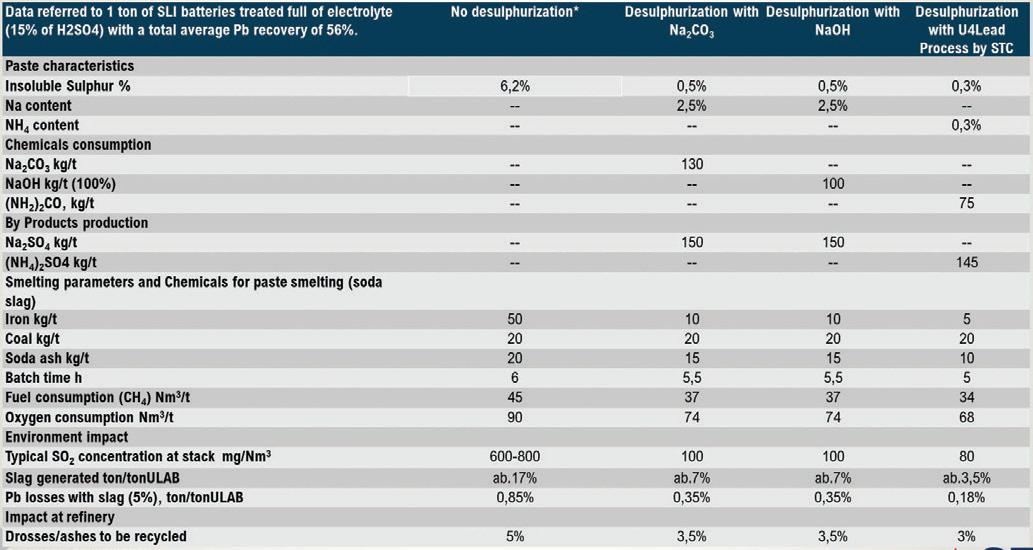
• Ammonium sulfate valuable as a fertilizer
• No Na2S
Convenience of the desulfurizing agent: urea is a very cheap amino compound, easy to find, to treat, it is chemically stable as not subject to sublimation and odour-free.
The reaction by-product is ammonium sulfate, which is a precious compound with a very low affinity with lead, nickel, arsenic and other heavy metals and it is therefore easily recovered, crystallized to produce pure crystals and sold as fertilizer.
No special material is required for the evaporation or crystallization operations of the by-product solution, due to the absence of chlorides from reactants and there is finally no need to employ dangerous chemicals such as sodium sulfide for heavy metals abatement from the by-product solution.
• Reduction of the energy consumption and costs of the subsequent smelting activities due to a lower duration of the batch time and therefore of the fuel and oxygen consumption
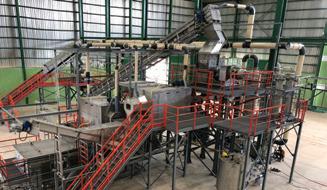
• Consequent reduction of environmental impact due to the abatement of SO2 and CO2 emissions, slags generated and Pb losses with slags
• As a result, all the analyzed data are improved when U4Lead is adopted, from chemical consumptions to energy reduction and environmental performances.
BCI INNOVATION AWARDS: STC www.batteriesinternational.com Batteries International • Spring 2023 • 85
Comparison summary
ULAB recycling plant in Nigeria
Urea conversion system
Figure 2: The U4Lead process
in Austria
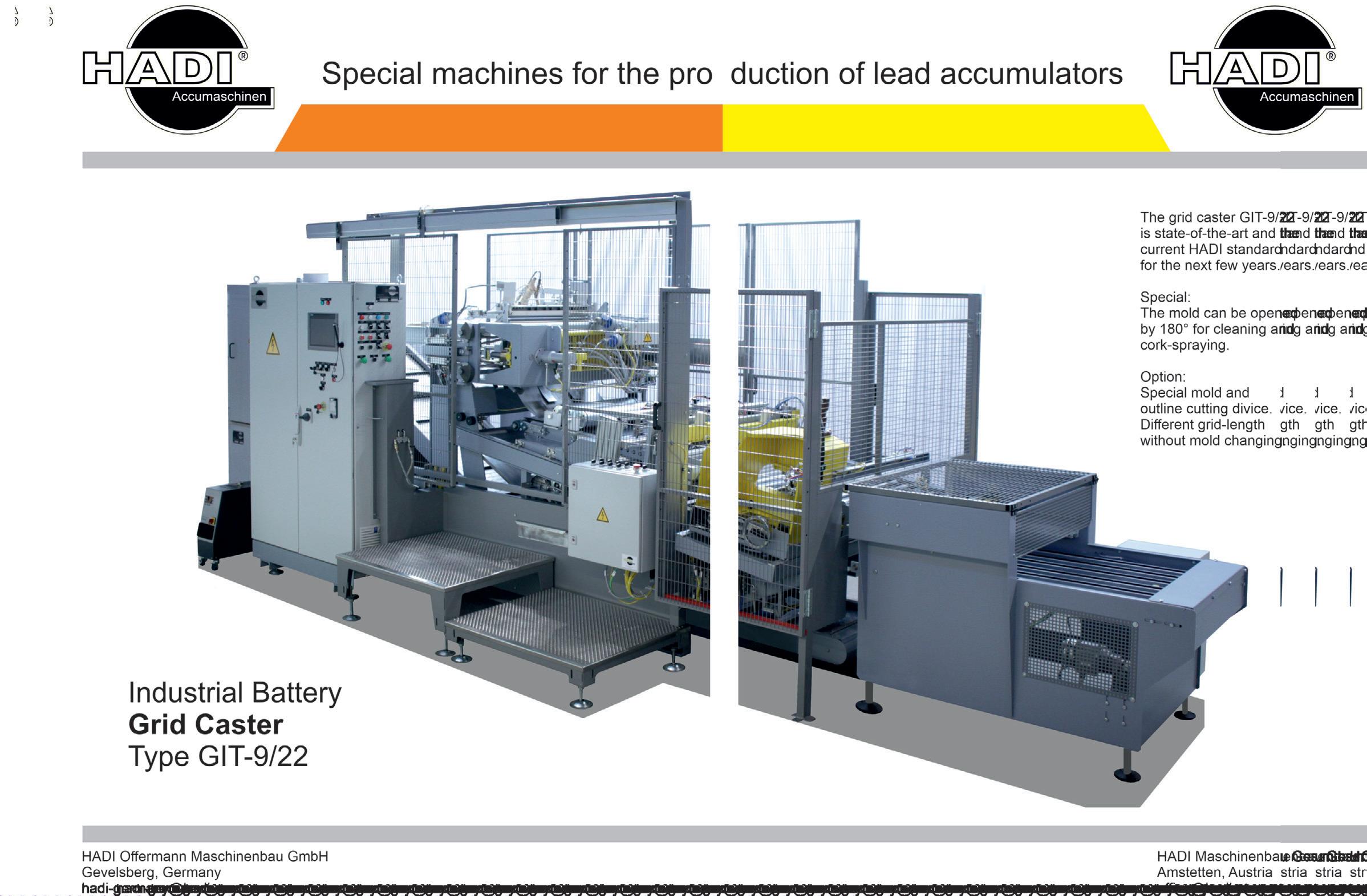 Made
Made

Gremlin Green shining a light on the environment
For several decades, Water Gremlin has been manufacturing battery terminals for a wide range of applications such as automobiles, motorboats, military, recreational vehicles, and many more. Battery terminals are an essential component of lead acid batteries, and lead acid batteries play a critical, often assumed role in our everyday lives.
The coating on a terminal is critical in preventing leakage and corrosion between the terminal and the plastic cover of the battery. The adhesion of the plastic to the lead allows the battery to last longer, perform more efficiently, and function safely.
The traditional coating on a terminal is a solid polymer which requires a significant amount of solvent to reduce the viscosity of the polymer so that it can be easily and smoothly applied to the terminals.
Water Gremlin’s long term goal is to significantly reduce the use of organic solvents in its manufacturing process.
Initially, Water Gremlin has been able to reduce solvent usage by 25% moving to a water-based process. However, the water-based process proved to be unsuccessful in all applications thus requiring the continued use of organic solvents. Water Gremlin then looked for an alternative that would allow further reduction of the use of organic solvents with the goal to eventually eliminate the usage of solvents in their facility.
After three years of research and development, Water Gremlin has been able to successfully develop and patent a proprietary ultraviolet light curable coating that is completely solvent-free.
This new process is far more ecofriendly for the environment as compared to the previous formula. It eliminates the need for solvents and is proving to be more durable and reliable.
As a trial, Water Gremlin converted one of its coating machines to the
new ultraviolet light cured coating process. To date approximately 10% of their coating capacity has been converted to a UV curable coating, known as Gremlin Green.

By doing so, it has impressively been able to reduce solvent usage by nearly 20%. Water Gremlin intends
to continue to implement UV cure technology to eventually end all usage of organic solvents for coating in their facility. Water Gremlin’s commitment is to reduce solvent usage by more than 50% by the end of 2023 and by more than 80% in 2024 and beyond.
Water Gremlin intends to continue to implement UV cure technology to eventually end all usage of organic solvents for coating in its facility
Founded in 1949 on farmland in White Bear Lake, Minnesota, Water Gremlin has been a well-known supplier of innovative products to the recreational fishing market. These initial products included fishing lures and lead sinkers.
However, its manufacturing scope broadened in the 1970s to include industry leading terminals for leadacid batteries.
The company has over 160,000 square feet of combined manufacturing and warehousing space in Minnesota. It is the superior supplier of battery terminals to battery manufacturers in both North and
South American and has expanded to other markets throughout the world during its 75 year history.
The Water Gremlin Company has been at the forefront of technology and is a market leader in lead battery terminals.
Manufacturers rely on Water Gremlin to deliver consistent, highquality solutions through custom engineering, design, and precise automation. Water Gremlin is a single-source solution — from conception to finished product. Its applied coating technology provides a strong and reliable barrier to inhibit acid leakage.
BCI INNOVATION AWARDS: WATER GREMLIN 88 • Batteries International • Spring 2023 www.batteriesinternational.com
Water Gremlin has pioneered a unique process to reduce the environmental impact of organic solvents as a coating material by using UV light.
WATER GREMLIN — PROFILE


Electrifying the recycling process: old batteries to new lead at room temperature
COMPLIMENTARY TECHNOLOGIES
ACE Green says it is piloting several important new initiatives.
• Production of 99.99% pure e-lead
The firm says it can now directly obtain 99.99% high-purity e-lead from battery paste. This new process is also at room temperature, requires no external heating and can use the same commercial-scale electrolysis machines.
• In-process regeneration of desulfurization agent
ACE has developed a modified process to regenerate the desulfurizing agent, helping to further reduce costs. This improvement does not require any changes or modifications to the electrolysis process.
• Electric kettles for melting e-lead
By utilising a new electrically heated kettle, the firm say it is moving towards 100% electrification of the lead recycling process.
• Baghouse dust treatment
The firm has a room temperature technique to treat and recover lead from baghouse dust.
• Smelting furnace slag treatment
Fascinatingly, the firms says it has created a technology to treat and extract metals from slag generated during conventional smelting. Besides the recovery of lead and iron, there is also a reduction of more than 65% in the net solid waste for disposal in landfill.
US corporation ACE Green Recycling
Inc has developed a proprietary new technology that produces no waste products that require smelting and furnaces. The process, the firm says, operates at room temperature with no carbon or heavy metal emissions. It replaces the conventional smelting furnace with an oxygen-producing pH-basic electrochemical process. This modular process is also readily scalable to suit any production capacity needs.
“Our zero-emissions technology is a game-changer for the heavily regulated secondary lead industry,” says Farid Ahmed, business development manager for ACE Green. “Automated material handling enables plant operation

with minimal operator intervention, further reducing exposure to health and safety risks. Higher lead recovery and lower waste generation contribute to our process having more favourable economics than traditional smelting. The two streams of lead components from the battery breaker — battery paste and battery metallics — are treated separately.
Paste
Battery paste is treated with proprietary chemicals in the presence of sodium hydroxide, removing sulphur and preparing it for the next stage. This is then fed to the room temperature electrolysis process, producing ‘spongy’
BCI INNOVATION AWARDS: ACE GREEN RECYCLING 90 • Batteries International • Spring 2023 www.batteriesinternational.com
Hydrometallurgical processing of scrap lead batteries has long been a dream in the recycling industry. It offers a less energy-intensive route to recycling with all the additional savings that entails.
ACE’s cofounders Nishchay Chadha (L) and Dr Vipin Tyagi (R)

lead of around 99.95% purity. This lead sponge is then mechanically pressed into ‘e-lead’ briquettes, which are then transferred directly to normal melting kettles.

After minimal conventional refining and casting into ingots, the finished lead has a typical purity of better than 99.985%. The small quantity of drosses produced during refining can be treated by a separate proprietary electrochemical technique to recover the lead content or recycled through smelting.
Metallics
Battery metallics such as grids, poles and connectors are first chemically cleaned with proprietary chemicals to remove any paste adhering to the solid lead surface. These clean metallics are then melted directly in normal process kettles. At this stage, the metal can be refined to produce pure lead or alloyed to obtain high-value lead alloys. As these metallics haven’t been smelted, all the original alloys elements such as antimony are retained in the lead.
Technology demonstration facility
ACE Green has been operating a commercial-scale demonstration plant near Delhi through its Indian subsidiary but the process equipment was disassembled to accommodate ACE’s new commercial scale lithium ion battery recycling operation. Luminous India, part of the Schneider Electric group, was previously supplying scrap batteries as well as buying the lead produced at this facility.
THE COMPANY
ACE Green Recycling is US-based but has a global presence, and is also located in Europe and Asia with 12 existing or planned facilities across eight countries in the next two years. The company says it is young but ambitious, being born from its two co-founders’ desire to improve the environmental performance and efficiency of the lead recycling industry worldwide.
“Our intention was for this to reach those developing regions struggling most with poor standards of process safety and hygiene, while also assisting the established industry in developed nations to augment their existing processes with new, cleaner technology,” says Ahmed.
ACE has around 70 personnel, but
says it is expanding fast. Executive and commercial functions are distributed across offices in the US, UK, Singapore and India, with most of the administrative and R&D functions centred on India.
ACE employs scientists, engineers and technologists to support its development, as its proprietary zeroemissions technology is at the heart of the company and is the raison d’être for its existence.
“We will continue to use our experienced commercial and technical teams to help deploy its world-leading processes under licence to customers, as joint venture partnerships or dedicated own-and-operated ACE Green Recycling facilities,” says Ahmed.
BCI INNOVATION AWARDS: ACE GREEN RECYCLING 92 • Batteries International • Spring 2023 www.batteriesinternational.com
GreenLead LAB technology comparison with traditional smelting
Lead sponge from the electrolysis process
E-Lead briquettes after mechanical pressing
Attribute ACE Technology Traditional smelting Lead metal recovery % 99+% 95%-97% Operating environment Sub-100 °C > 1000 oC Greenhouse gas emissions Zero 0.5-1 kg/kg battery Oxygen release 43 kg/1000 kg battery No Modular Yes No Energy requirement Low High Can be solar powered Yes No Human risk in operation Close to nil Increased Toxic waste creation Very low volume 5x higher volume
End-of-life scraps to create sustained recycling demand longer term
Shouting the joys of batteries from rooftop to rooftop
BCI continues to push out the boundaries of both its conventions and its marketing push for the benefits of battery markets. This year’s Amplify Award set another benchmark for showing what this industry can do.
To slightly misquote Henry Ford: “Stopping marketing to save money is like stopping your watch to save time.” Marketing, promotion, advertising has been part of the core business of all successful firms — but getting it right and doing it well is equally vital.
In acknowledgement of this, BCI last year set up the Amplify Award. This looks to highlight campaigns by its members which have the most positive impact in advancing the lead battery industry, and which incorporates innovation and design to achieve outstanding results.
The award recognizes a highly effective and top-rated internal or external campaign, program or communication that serves to inform, educate and promote lead battery products, components, services or the industry as a whole on the basis of four key pillars: innovation, sustainability, essentiality and safety.
Campaigns can include elements from all forms of marketing, branding, public relations, corporate social responsibility and education programs, including digital or print collateral, training programs, consumer marketing, awareness campaigns, commercials, websites, social media, point-of-sale materials, tradeshow booths and more.
The goal of the award is to recognize strategic communications designed to address a need and provide a platform to showcase innovative ideas that support the lead battery industry, particularly campaigns that highlight the key pillars of lead batteries: innovation, sustainability, essentiality and safety.
Last year’s winner was a recognition of the outstanding campaigning that The Doe Run Company ran in 2021. This year there were seven applicants for the award — C&D Technologies, Clarios, Club Assist, East Penn Manufacturing, Enovix, Stryten and Trojan.
The judging panel awards marks out of 20 for five categories.
These were:
Innovation — The campaign demonstrates a high level of uniqueness and creativity
Clarity — The campaign communicates clearly, is easy to understand and engages the audience Results — The campaign achieved its goal with measurable results
Design/Aesthetic — The campaign has visual appeal and highly effective design components
Value — The campaign elevates and benefits the lead battery industry in some way by raising awareness of key issues, advocating on behalf of the industry or sharing a positive lead battery story.
THE WINNER: C&D TECHNOLOGIES
C&D Technologies’ ‘Power of the Plus’ campaign was created to increase awareness and generate leads for the PLP — Pure Lead Plus — battery. The goal was to educate the audience about this innovative technology and product differentiation through content marketing.
The target audience was data center engineers who determine the final layout and specifications of these facilities.
The campaign was visually appealing by showing the technology inside to help the engineers understand how PLP can provide the reliability and performance they need.
Online videos created for the project received over 1.4 million views and an education webinar generated higher results than expected — all increasing awareness of PLP batteries and the C&D brand.
In 2022, the campaign delivered over 56,000 web sessions, doubling the original target.
This integrated campaign also exceeded form fill targets by 35%, while the digital ads had an average click-through rate (CTR) of 2.54%. The educational and unique video series had over 1.4 million views, well in excess of the 500,000 target. Email campaigns had an average open rate of 23%, while the integrated campaign contributed to exceeding target sales goals by 30%.
C&D Technologies chief commercial officer Laurie Oswald accepts the BCI Amplify Award from BCI president and executive director Roger Miksad and Donna Snyder, vice president for marketing and advertising at East Penn Manufacturing

THE BCI AMPLIFY AWARD www.batteriesinternational.com Batteries International • Spring 2023 • 93
“Stopping marketing to save money is like stopping your watch to save time”
— Henry Ford (almost)
And the winner was ... C&D Technologies and its Power of the Plus campaign, an innovative approach to marketing a very superior type of VRLA battery with a clear success in getting its message across and sales targets exceeded
The Battery Show Europe
May 23–25
Stuttgart, Germany
The Battery Show Europe Expo provides attendees the chance to find solutions to their application needs, get a look at the latest technologies, and connect with their peers.
Meet manufacturers, suppliers, engineers, thought leaders and decisionmakers for a conference and trade fair focused on the latest developments in the advanced battery and automotive industries.
Contact Informa Markets
E: thebatteryshowcs@informa.com www.thebatteryshow.eu
EUROBAT General Assembly/Forum
June 6–7
Madrid, Spain
EUROBAT is the association for the European manufacturers of automotive, industrial and energy storage batteries.
EUROBAT has 52 members from across the continent comprising more than 90% of the automotive and industrial battery industry in Europe. The members and staff work with all stakeholders, such as battery users, governmental organizations and media, to develop new battery solutions in areas of hybrid and electro-mobility as well as grid flexibility and renewable energy storage.
Contact E: eurobat@eurobat.org www.eurobat.org
ees Europe
June 13–16
Munich, Germany
Discover future-ready solutions for renewable energy storage and advanced battery technology at ees Europe! Europe’s largest, most international and most visited exhibition for batteries and energy storage systems is the indus-
try hotspot for suppliers, manufacturers, distributors, and users of stationary electrical energy storage solutions as well as battery systems.
In 2023, more than 450 suppliers of products for energy storage technology and systems will be present at ees Europe and the parallel exhibitions of The smarter E Europe taking place in Munich.
The exhibition will be accompanied by a two-day energy storage conference where leading experts delve into current questions of this industry.
Contact Solar Promotion GmbH
E: merz@solarpromotion.com www.ees-europe.com
Advanced Automotive Battery Conference Europe — AABC Europe
June 19–22, Mainz, Germany
Take part in this game-changing event where battery technologists from leading automotive OEMs and their key suppliers explore development trends and breakthrough technologies shaping the future of vehicle electrification.
As more European nations and international automotive OEMs invest in their commitment to vehicle electrification and eMobility, the 2023 AABC Europe event propels that momentum forward, presenting unparalleled coverage of the research and development that helps drive outcomes and supports the next generation of electric vehicle batteries.
Contact Cambridge Enertech www.advancedautobat.com/europe
International Automotive Recycling Conference — IARC
June 21 – 23
Geneva, Switzerland

IARC is the international platform for discussing the latest developments and
challenges in circular economy and automotive recycling. We bring together up to 300 decision-makers from the automotive and recycling sector, especially car manufacturers, metal suppliers, plastic scrap traders, recyclers, shredder operators, policy-makers and many more.
IARC 2023 gives you the unique opportunity to hear and exchange with industry leaders and pioneers such as ArcelorMittal, LKQ, EMR and Toyota in a privileged business environment.
Don’t miss this unique opportunity to get valuable industry insights and engage in the most inspiring discussions and unrivalled networking opportunities amongst the leading experts in the field of automotive recycling!
Contact ICM AG
E: info@icm.ch
www.events.icm.ch/event/e2e5c27c-ff224918-b685-0b07aa604ddf/summary
Pb2023 — International Lead Conference
June 21 – 23
Athens, Greece

Pb2023 is the premier event for analysis, networking and discussions on all matters relating to lead, including mining, production, batteries, recycling and the environmental management of the metal and its compounds organised by the International Lead Association.
This year the Pb2023 programme includes the latest market trends and forecasts from world-renowned industry experts, a workplace lead exposure management workshop, together with all the latest updates on regulation, sustainability and advanced lead battery research from the Consortium for Battery Innovation.
Registration is now open – check our website www.pb2023.org
Contact
International Lead Association
Maura McDermott
E: McDermott@ila-lead.org www.pb2023.org
FORTHCOMING EVENTS 94 • Batteries International • Spring 2023 www.batteriesinternational.com
Geneva, Switzerland




















Battery Cells & Systems Expo
June 28 – 29
Birmingham, UK
Battery Cells & Systems Expo is a free to attend exhibition and conference showcasing international manufacturers, users and the entire supply chain working to increase battery performance, cost and safety. The show will bring together automotive OEM’s, electric utilities, battery cell manufacturers, system manufacturers and integrators along with the entire manufacturing supply chain.
Co-located with Vehicle Electrification Expo. The show will benefit from the rapid growth in the manufacturing of electric and hybrid vehicles in the UK along with the significant investments being made in domestic battery manufacture and research. Featuring a global list of exhibitors and speakers, the entire world of battery manufacturing and integration will gather in the heart of UK manufacturing, Birmingham.
Contact Event Partners
Lana Fowler, event director
E: lana.fowler@event-partners.org
www.batterysystemsexpo.com
International Flow Battery Forum
June 28 – 29
Brussels, Belgium
The International Flow Battery Forum is the leading event for the flow battery community. The IFBF promotes the most recent developments in the science, technology and deployment of flow batteries and its conferences cover a broad range of interests in research and commercial aspects of flow batteries.
IFBF conferences provide an ideal opportunity to promote products and develop business contacts.
Contact Swanbarton
www.flowbatteryforum.com
Battery Recycling Conference
June 28 – 29
Messe Frankfurt, Germany

Battery Recycling Conference & Expo 2023 is the must-attend event for battery producers, recycling companies, critical raw material suppliers, and the entire battery supply chain to come together on a single platform.
This year’s cycle will showcase over 80 exhibitors in the free-to-attend exhibition, 100+ expert speakers at the conference and over 1,500 high-quality participants. Furthermore, it will be complemented by two other industryspecific co-located events, E-Waste World and Metal Recycling Conference & Expos.
Contact Transglobal Events
Peter Sarno, event director E: peter@trans-globalevents.com www.batteryrecycling-expo.com
World Battery Industry Expo
August 8 – 10
Guangzhou, China

Committed to promoting global market trade and battery industrial chain, WBE has developed into a professional exhibition with the largest number of exhibitors in battery enterprises and the highest participation of professional visitors and foreign buyers. Relying on its worldwide influence and thousands of overseas buyers, WBE provides exhibitors with highquality buyers resources to help enterprises get more business opportunities.
Contact Guangzhou Honest Exhibition Co., Ltd E: grand.fi@grahw.com www.battery-expo.com
Oslo Battery Days
August 21 – 22
Oslo, Norway
The 5th Oslo Battery Conference will meet to discuss and provide a platform for technological innovations and business opportunities with the latest updates in that fields in Norway and abroad. For the 2023 event we will offer a beautiful Fjord cruise that includes dinner, networking and a view of the Oslo skyline on the classic Norwegian boat MS Nobel.
Contact Shmuel De-Leon Energy E: sigalit@sdle.co.il www.oslobatterydays.com
FORTHCOMING EVENTS 96 • Batteries International • Spring 2023 www.batteriesinternational.com
Guangzhou, China
Frankfurt, Germany


8TH International Secondary Lead and Battery Recycling Conference — Recycle100
September 4–5
Siem Reap, Cambodia
Fourteen years ago, the first Secondary Lead Conference was held in Macau, China, bringing together all aspects of the lead-acid battery recycling and smelting industry. It has successfully brought the industry together to discuss, debate and learn.
Over that period, the battery recycling industry has continued to develop and now expanded into an exciting new phase, the recycling of lithium-ion batteries.
The conference will discuss the many technical and market aspects of the recycling industry of various battery chemistries. The conference’s overall themes will not change, as we will hear from some leading recycling, smelting and environmental speakers worldwide about the best methods for collecting, breaking, and recovering valuable elements.
Contact Conference Works — CW3 Events
E: events@conferenceworks.com.au www.recycle100.events
Intersolar Mexico
Mexico City, Mexico.

September 5 – 7
Intersolar Mexico serves as the industry’s go-to source for invaluable technology trends and premier B2B contacts in the promising Mexican solar market. It sits at the cross-section of photovoltaics, solar heating & cooling technologies, and energy storage.
Together, the two events will be the largest gathering of professionals in Mexico for international manufacturers and distributors looking to meet regional buyers in the fields of solar, renewable energy and cleantech.
More than 250 exhibitors and 13,000 visitors from over 35 countries are expected to participate in this year’s events.
Contact
Solar Promotion International
E: info@solarpromotion.com
https://www.intersolar.mx/organizers
International Congress for Battery Recycling — ICBR
September 6 – 8
Valencia Spain
ICBR 2023 is the international platform for reviewing the challenges faced by the Battery Recycling Industry on a global basis.
For 28 consecutive years, ICBR has brought together the international
community of experts and decision makers of the entire Battery Recycling value chain, including battery recyclers and manufacturers, collection organizations, OEM’s, policymakers, materials and services providers and many more.
Contact ICM AG
E: info@icm.ch
www.events.icm.ch/event/743ec9e5-df9d42e1-8e20-e13bafe7f6ed/summary
The Battery Show North America
September 12 – 14
Novi, MI. USA
The Battery Show connects you with more than 8,000 engineers and executives, and more than 600 leading suppliers across the advanced battery supply chain.
A powerful end-to-end showcase, this leading global industry event covers today’s emerging advanced battery technology for the automotive, portable electronics, medical technology, military and telecommunications, and utility and renewable energy support sectors.
Explore the full spectrum of cuttingedge solutions you need to make faster, smarter, and more cost-effective products at the most comprehensive industry event in North America.
Contact Informa Markets
E: registration.ime@informa.com
www.thebatteryshow.com
Battery Tech Expo Sweden
September 27 – 28
Gothenburg, Sweden
The Battery Tech Expo Nordic 2023 will bring together the latest technologies and services involved in the battery technology covering battery storage, battery management systems, fuel cell technology, lithium-ion batteries to name a few.
The event will welcome senior decision makers and users from across the power industry who share a professional interest in the technology and science of battery technology.
Held in Gothenburg, the hub of battery technology industry of Sweden, the event will provide a unique opportunity to showcase the latest technological products and services from within the industry.
Contact 10fourmedia
E: david.reeks@104-media.com
www.batterytechexpo.se
FORTHCOMING EVENTS 98 • Batteries International • Spring 2023 www.batteriesinternational.com
THE DATE
SAVE
Mexico City, Mexico
Lyon, France
SAVE THE DATE
20th Asian Battery Conference and Exhibition — 20ABC
September 5–8
Siem Reap, Cambodia
The Asian Battery Conference has a long and proud history of bringing together the world’s leading battery industry C-level executives, marketers, technical staff and sales teams biennially to remain updated on new and emerging technologies, understand future directions, meet new suppliers, conduct business and network with industry peers.
An integral feature of the Asian Battery Conference is the exhibition. A true international opportunity, the exhibition sees the world’s major battery companies come together to showcase their capabilities and leverage off the considerable business developments and direct sales opportunities the conference provides.
The Asian Battery Conference has seen tremendous growth since its inception in 1986, not only in terms of the size of the event but more importantly its ability to act as an educator and business development tool for all the worlds key battery industry executives.
The importance of the Asian Battery Conference to the global battery industry can be demonstrated by the success of the past four conferences.
Contact Conference Works — CW3 Events
E: events@conferenceworks.com.au www.asianbatteryconference.com
The Battery Show India
October 4 – 6
Greater Noida, India
The Battery Show portfolio brings together engineers, business leaders, top industry companies, and innovative thinkers to discover ground-breaking products and create powerful solutions from across the globe.
From raw materials to components, find what you need to power your next project at the Battery Show India. The exhibition brings together more than 200+ brands showcasing the latest solutions across the transportation, stationary, portable and industrial sectors.
Contact Informa Markets
www.thebatteryshowindia.com
Batteries Event
October 10 – 13
Lyon, France

The Batteries Event will cover aspects of the circular economy chain, starting from the production of the battery through raw materials, cell manufacturing, use and safety, management and applications, going through market trends, research and development, new technologies and finally closing the loop with a focus on recycling, second life and regulations.
International battery industry key players such as OEM, cell and pack manufacturers, end users, experts, researchers and recyclers will come together to discuss and exchange on new chemistries, manufacturing process, battery components, battery second life, recycling, regulation, future expectations and innovations.
Contact AVICENNE Energy www.batteriesevent.com
Fenibat
October 15 – 17
Londrina, Brazil

FENIBAT will gather in Londrina, Paraná, Brazil, from October 15 – 17, 2023 the Brazilian and Latin American battery and lead recycling industry and its suppliers. Its objective is to disseminate new products, services and technologies from all countries of the world to the South American market, as well as the exchange of information and knowledge.
Contact Fenibat
Jayme Gusmao, event director
E: gusmao@fenibat.com
FORTHCOMING EVENTS 100 • Batteries International • Spring 2023 www.batteriesinternational.com
Londrina, Brazil
Battery Tech Expo, Prague
October 18
Prague, Czech Republic

Central Europe is rapidly emerging as a key location in the Battery Technology landscape. With a well-established and rapidly developing automotive industry, and a growing number of gigafactories both in operation and planned to come on-stream, the next few years will see a rapid expansion in battery production capacity in the region.
The Battery Tech Expo, Prague is perfectly located to showcase the Battery Technology supply chain in the Central Europe Hub — highlighting the Czech Republic, Slovakia, Hungary and Poland, whilst remaining within easy reach of the German, French and Italian automotive centres of excellence.
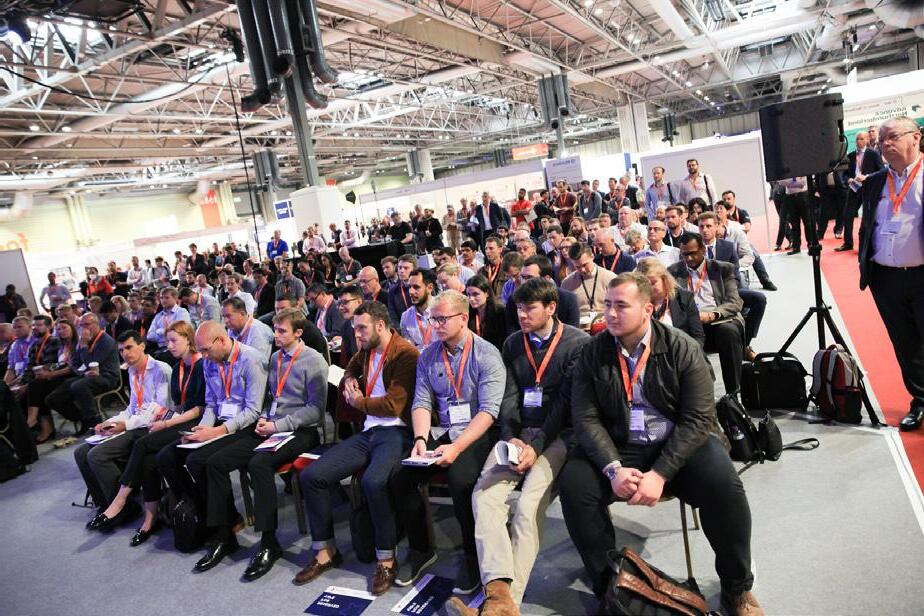
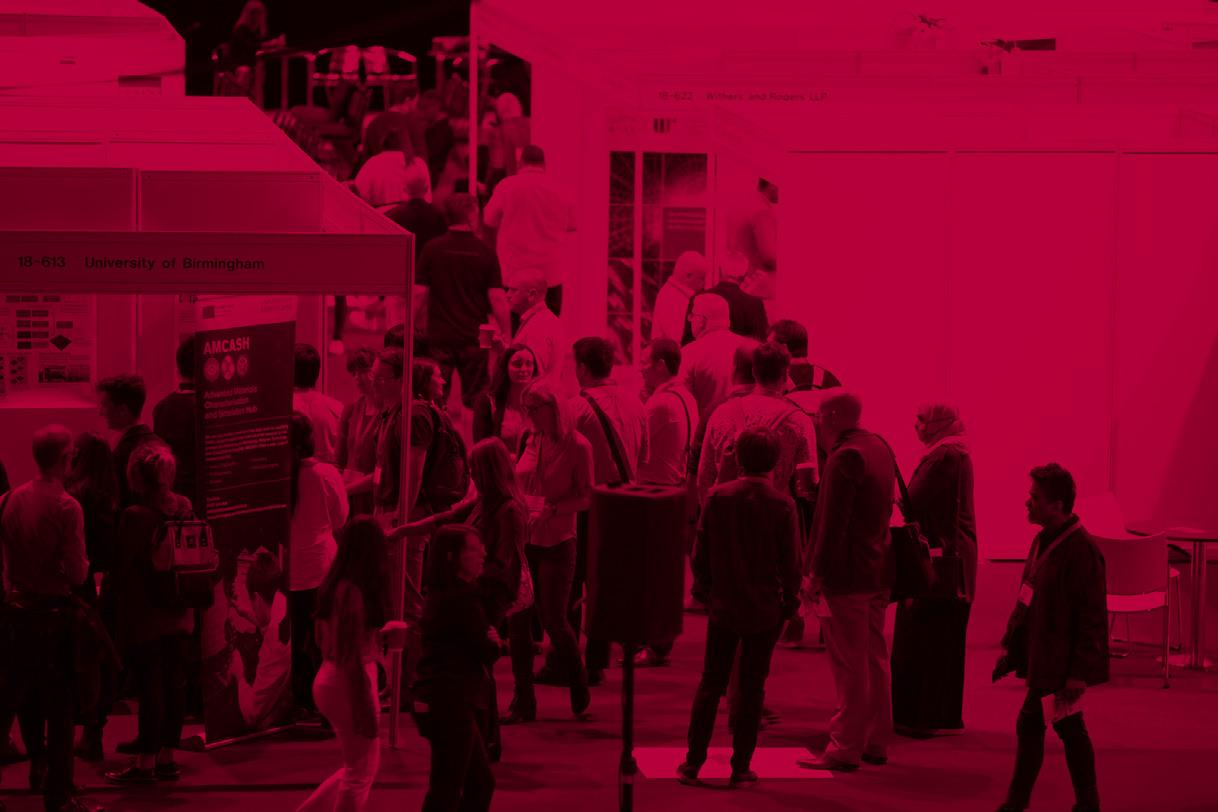
Contact
10fourmedia


David Reeks, event director
E: david.reeks@104-media.com
www.batterytechexpocentraleurope.com





Battery Safety Summit
November 6 – 7
Tysons Corner, VA. USA
The Annual Battery Safety Summit will bring together the key players from around the world to present the latest R&D advancements for integrating and implementing LIB safety to meet everincreasing energy demands.

With constantly increasing market demands for higher energy density cells globally, it is critical that advances in

chemistry and engineering for next generation batteries have a significant focus on safety.
Accurate testing, modelling and battery management systems are critical for predicting and controlling the complex electrochemical, thermal, and mechanical behavior of LIBs.


Contact Cambridge Enertech



E: ce@cambridgeenertech.com
www.cambridgeenertech.com/battery-safety
FORTHCOMING EVENTS www.batteriesinternational.com Batteries International • Spring 2023 • 101
28th & 29th June 2023 NEC, Birmingham, UK The UK’s Largest Battery Technology Exhibition & Conference Returns for 2023! Join leading battery & EV companies: Register for free www.batterysystemsexpo.com Co-located with:
Prague, Czech Republic
Battery Experts Forum
November 7 – 9
Darmstadt, Germany
The Battery Expert Forum is the largest battery conference in Europe. The forum offers an unparalleled platform for exchanging information on the latest developments in battery technology, presenting innovative products and services, and making valuable business contacts through renowned exhibitors, a comprehensive conference program and first-class trade visitors. In addition to the conference, there is also a trade exhibition where companies can showcase their latest products and services.
Contact Battery Experts Forum
E: info@battery-experts-forum.com
www.battery-experts-forum.com
SAVE THE DATE Future Battery Forum

November 27 – 28
Berlin, Germany + Online
The management conference brings together the entire value system of battery technologies: Across various industries more than 300 users, battery system and cell manufacturers and their suppliers will spend two days exchanging information, making new contacts and enriching each other.
Contact IPM AG
E: fbf@ipm.ag www.futurebattery.eu
London EV Show
November 28 – 30
London, UK
The next edition of the London EV Show will once again bring the entire EV value chain under one roof to network with major industry players and identify numerous business opportunities in a hypercompetitive EV market.

The event aims to enable a large showcase of the new EV models & innovative solutions, a powerful speaker line-up and an enthused audience of policymakers, business leaders, investors, thought leaders and a wide range of end-users.
Featuring a massive exhibition space and highly-actionable conference agenda, London EV Show is a must-attend EV event of 2023 that will host 3 days of strategic deliberations, critical knowledge-sharing, quality business meetings and the latest product demonstrations.

Contact Valiant Business Media
E: info@londonevshow.com
www.londonevshow.com
Expo for Decarbonised Industries
November 28 – 30
Düsseldorf, Germany
All you need for climate-friendly, secure and economical energy supply in your company: The Expo for Decarbonized Industries > ENERGY STORAGE (decarbXpo) bundles the most comprehensive range of energy storage systems, solutions for decarbonization in industry and commerce, and a high-quality forum and conference program into one event.
Directly from the organizer of leading global industry trade shows. Supported by research institutes, sector and industry associations.
Contact Caroline Markowski, Messe Dusseldorf
E: markowskic@messe-duesseldorf.de www.decarbxpo.com
FORTHCOMING EVENTS 102 • Batteries International • Spring 2023 www.batteriesinternational.com
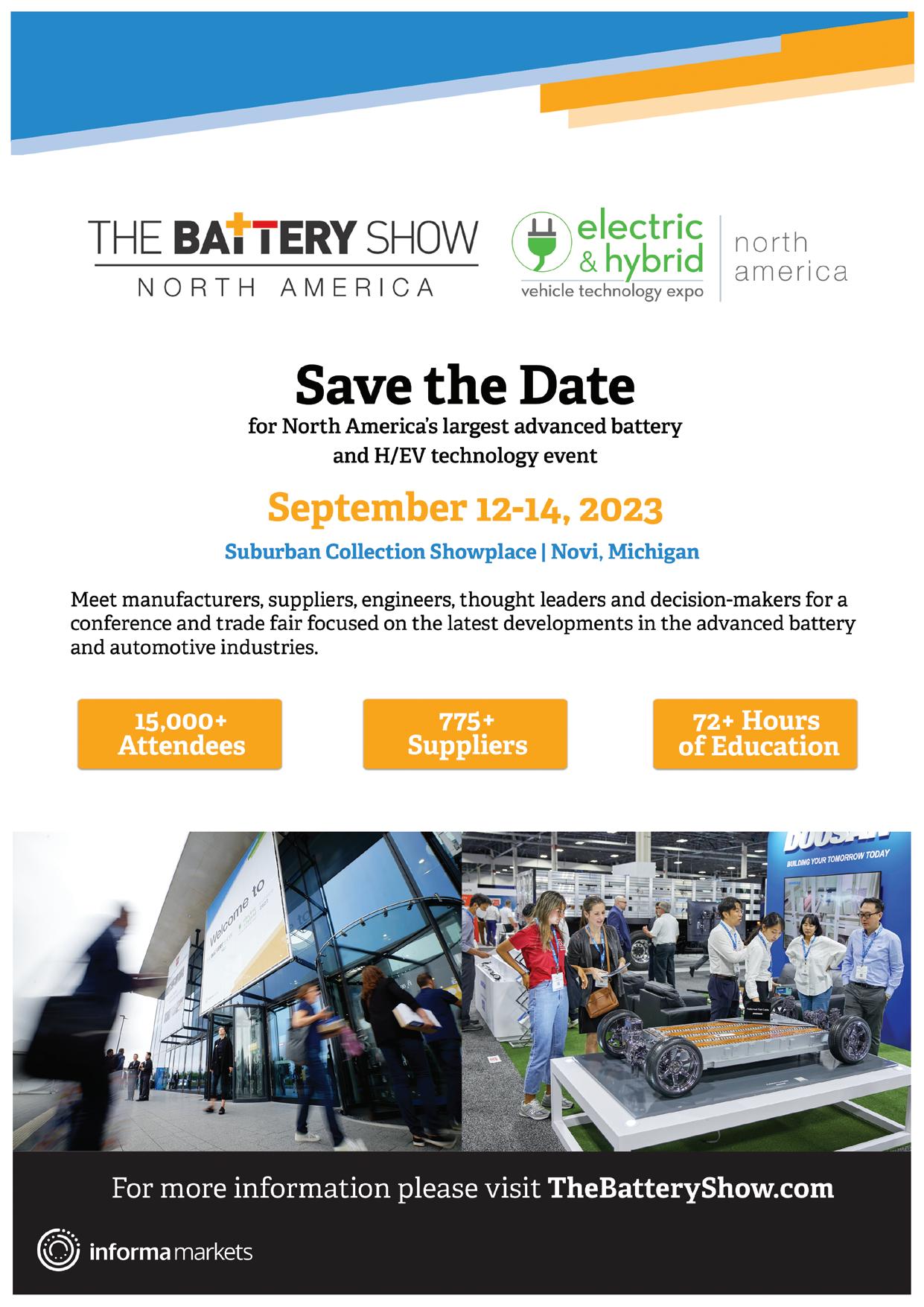
Global Automotive Components And Suppliers Expo
December 5 – 7
Messe Stuttgart, Germany
Global Automotive Components and Suppliers Expo is the only show in Europe dedicated to showcasing automotive components and component suppliers, making it the must attend event for all automotive OEM and Tier 1 procurement managers, component specifiers and engineers.
Contact UKi Media & Events
E: registration@ukimediaevents.com
www.globalautomotivecomponentsandsuppliersexpo.com/en/
Advanced Automotive Battery Conference USA
— AABC USA
December 11 – 14
San Diego, CA. USA
AABC was founded more than twenty years ago to review the status of automotive battery technology and provide informed glimpses into the future.
The 2023 program will uncover the underlying technical and business issues that will impact the pace and path of vehicle electrification worldwide.
Join us to network with chief battery technologists from leading automotive OEMs, who will share their development trends and projected battery needs, as well as their key suppliers who will present their latest offerings and roadmaps for the future.
Contact Cambridge Enertech
E: ce@cambridgeenertec.com www.advancedautobat.com/us
Intersolar North America
January 17 – 19
San Diego, CA. USA
Intersolar North America and Energy Storage North America is the premier U.S.-based conference and trade show focused on solar, energy storage, and EV charging infrastructure.
Dedicated to accelerating the energy transition, the combined event delivers actionable education, invaluable networking, and an immersive exhibit hall experience – which includes the popular Solar Games installer competition.
Join 6,000+ energy leaders and 300+ exhibitors in Long Beach, CA, to help shape the next phase of our clean energy transformation.
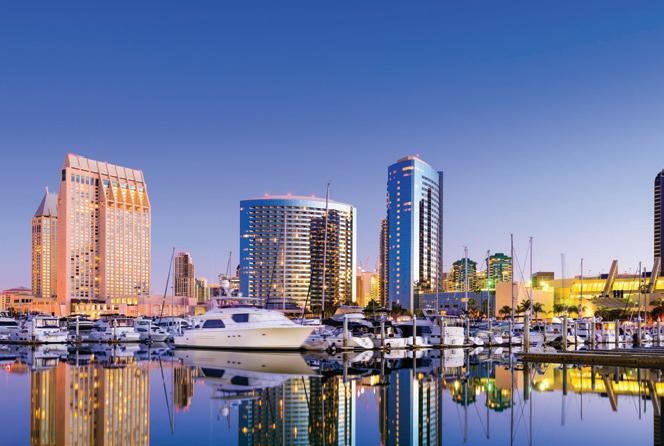
Contact Diversified Communications
E: ISNAinfo@divcom.com
www.intersolar.us
The Smarter E India — ees India
January 17 – 19
Gujarat, India

The market potential for electrical energy storage in India is expected to be tremendous in the future – especially driven by incoming policies for the emobility industry.
With the great success and support of ees Europe, Europe’s largest exhibition for batteries and energy storage, ees India becomes the most powerful energy storage exhibition in India.
The exhibition is the industry hotspot for suppliers, manufacturers, distributors and users of stationary electrical energy storage solutions. Covering the entire value chain of innovative battery and energy storage technologies – from components and production to specific user applications.
Contact Solar Promotion International
E: info@solarpromotion.com
www.thesmartere.in/en/ees-india
FORTHCOMING EVENTS 104 • Batteries International • Spring 2023 www.batteriesinternational.com
San Diego, CA. USA
Gujarat, India
Be part of the Circular Economy Community
International Automotive Recycling Congress




June 21 – 23, Geneva, Switzerland
International Congress for Battery Recycling


September 6 – 8, Valencia, Spain
International Electronics Recycling Congress
January 17 – 19, Salzburg, Austria
www.icm.ch
LIST OF ADVERTISERS 106 • Batteries International • Spring 2023 www.batteriesinternational.com Our advertisers enjoy their elite status with us! Join them! Contact Karen Hampton: karen@batteriesinternational.com or call +44 7792 852337 Company Page number 20th Asian Battery Conference 95 Abertax Technologies 73 Accurate Products 67 Advanced Battery Concepts Inside front cover Atomized Products 27 Batek Makina 37 Batteries Event 102 Battery Show EU 97 Battery Show US 103 Battery Cells & Systems Expo 101 Batterie Fullungs Systeme 53 CAM 10 Cellusuede Products 49 Dalton Electronics 32 Dross Engineering 12, 35 Eagle Oxide 17 Engitec Technologies 43 Entek 91 Erhardt + Leimer 71 Farmer Mold & Machine Works Inside back cover Froetek 89 Hadi Offerman 86, 87 Hammond Group, Inc 6 ICM 105 Impact Clean Power Technology 23 Interbattery Europe 99 MAC Engineering 78, Outside back cover Maccor 3 Novanta Photonics 51 OM Impianti 54, 55 Penox Group 64 Recycle 100 / Secondary Lead Conference 29 Reiter Components Germany 30 Solar Promotion / ees Global 19 Sorfin Yoshimura 47 STC 31 STTS Brazing Solutions 69 Wirtz Group 38, 39 Zesar 83

The definitive guide to battery energy storage conferences and meetings for the year ahead SUBSCRIBE FOR FREE Contact Jade Beevor jade@energystoragejournal.com CONFERENCE WATCH MONTHLY
The last word
Here’s Johnny! Kentucky style
“I love the gentle thud of hatchets in the morning. It sounds like victory.” Yes, perhaps not a Kentucky version of Apocalypse Now, but axe throwing is big in Louisville, site of this year’s BCI convention. (Just 50 yards to the right of the conference hotel there was a local axe-throwing gallery.)

The concept is now officially part of the BCI presentation schedule. “If speakers over-run their allocated times, we know how we’ll be dealing with them,” says one BCI director darkly.
Not to be outdone the BCI golfing tournament said that this was about to give a new meaning to “sudden death play-offs”.

So farewell then Frances
It was a sad goodbye in Batteries International’s offices last month as the staff said farewell to their latest intern, Frances Jones.

“We teach them all they have to know about journalism,” said editor John Shepherd. “I teach them how to spell interviewee names in an original and unusual fashion and Mike lectures them on the power of imagination.
“Frances is our third intern to go straight from our training to mainstream journalistic work. We’re very proud of her and wish her well.”
When is a business card not a business card?
…when it’s a bourbon coupon that’s when!
Hammond’s hugely successful tour of a bourbon factory — complete with complementary tasting that lasted until late — was made all the more perfect for some when Hammond’s chief Terry Murphy drew a raffle for four free bottles of oak-aged mellow bourbon.


The occasion? A closing event on the penultimate day of this year’s BCI Convention. And at one happy table two of the delegates were particularly happy.
“Well Terry didn’t ask me for a single business card so I thought I’d help them along a little,” said one of the lucky winners. “I expect they’ll distribute the extra ones to those unfortunates unable to attend this elegant soirée.”
Keeping the wheels of information flowing
So thank you to ESS who sent this magazine a bottle of their finest fizz in gratitude for our news coverage of how their flow battery system was powering a winery in California.
“It’s not bribery,” said one staff member. “That’s when we’re slipped used dollars in brown paper bags in foreign airports and then have to give them to Mike.
“This is simply persuasive liquidity. So more such persuasions please!”

108 • Batteries International • Spring 2023
www.batteriesinternational.com






For over 55 years, MAC Engineering & Equipment Company, Inc. has sold more than 4500 machines, to over 300 customers, in 81 different countries, bringing the MAC Advantage worldwide. MAC ENGINEERING & EQUIPMENT COMPANY, INC. Visit www.mac-eng.com to see how we can bring the MAC Advantage to you!































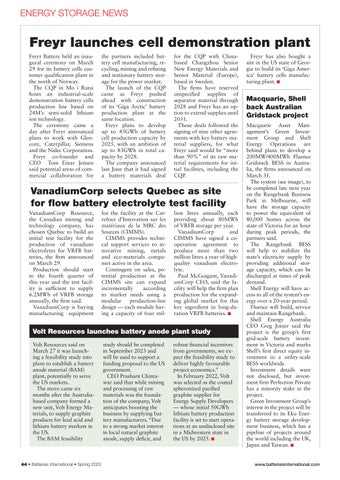






































































































































































































 Made
Made































































